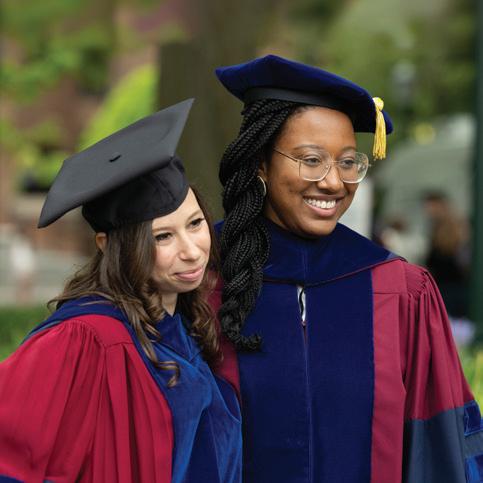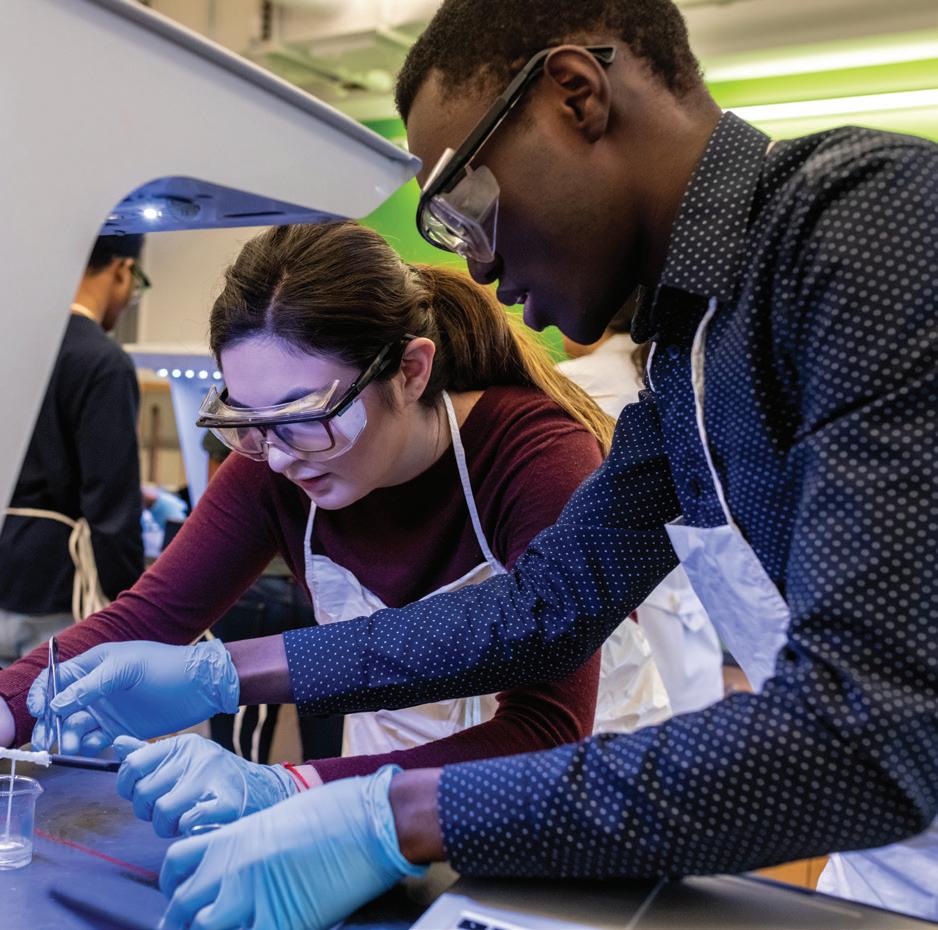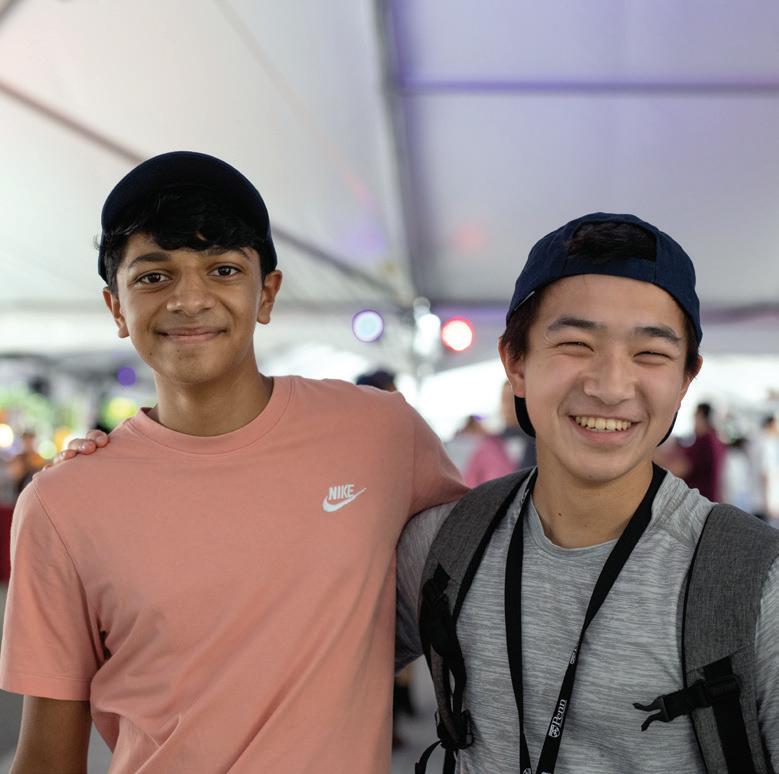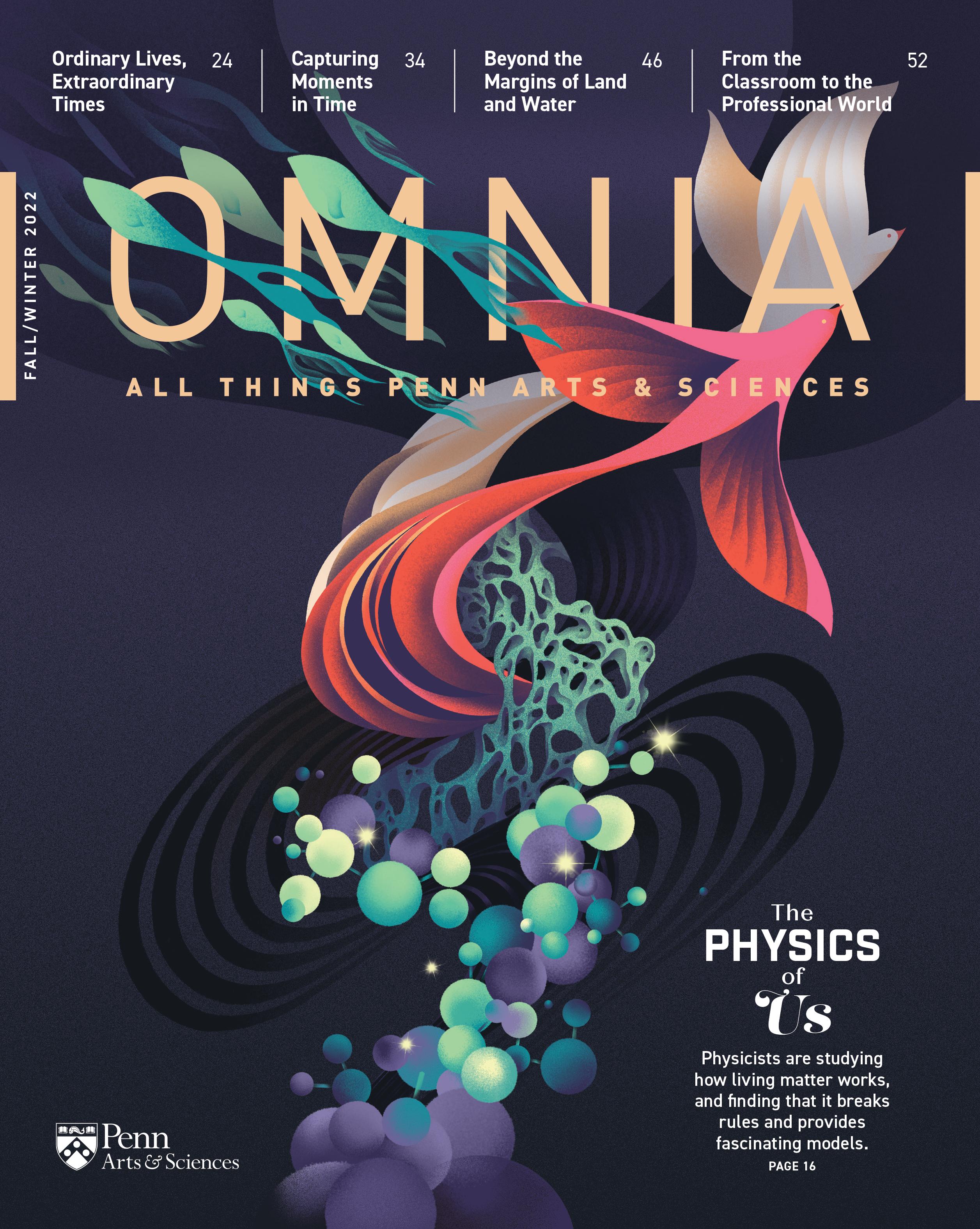

The Physics of Us
Physicists are studying how living matter works, and find that it breaks the standard rules and produces
By Susan Ahlborn

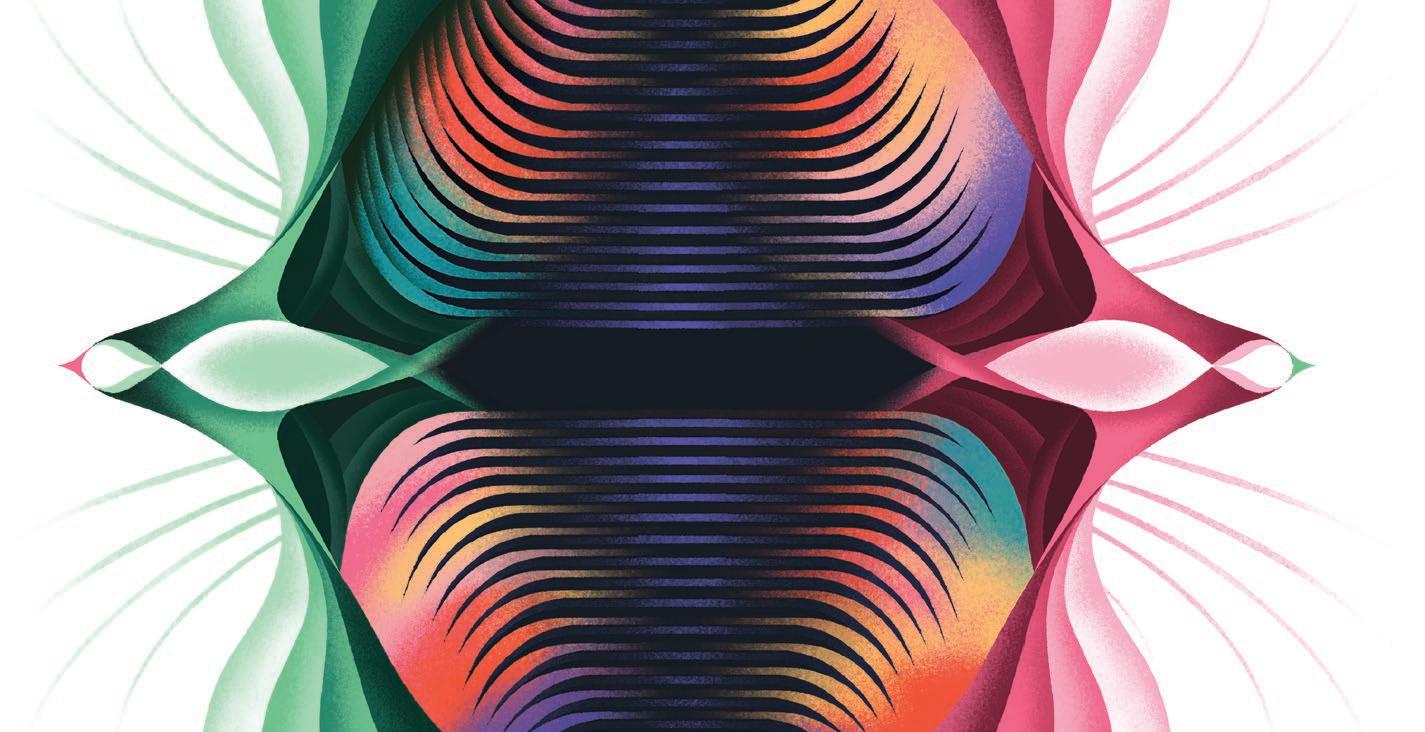
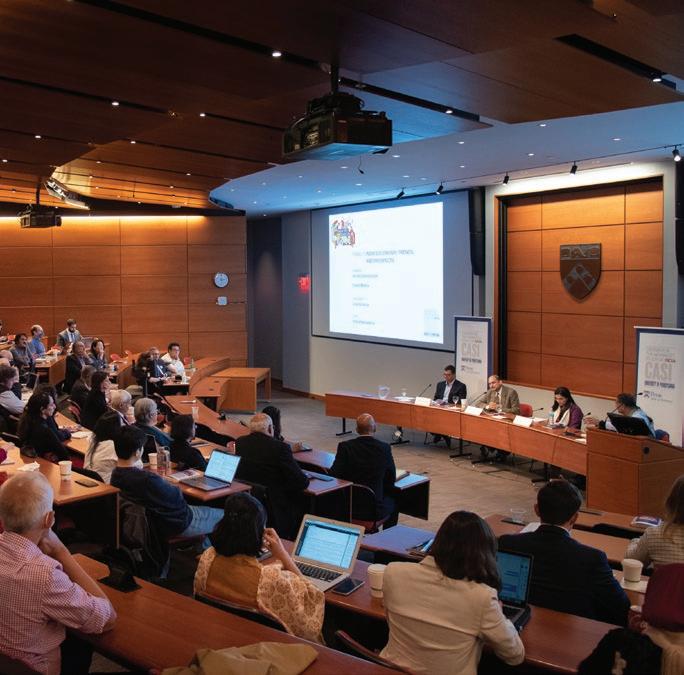

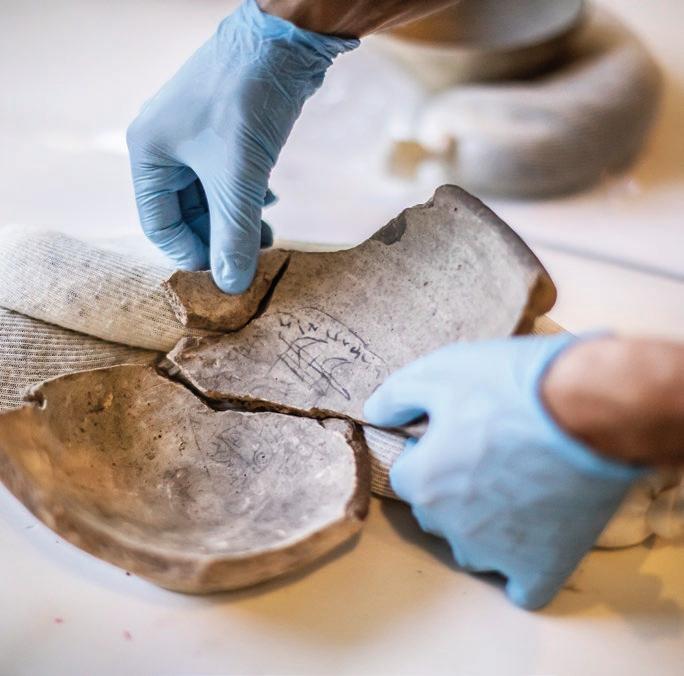
By Susan Ahlborn and Blake Cole
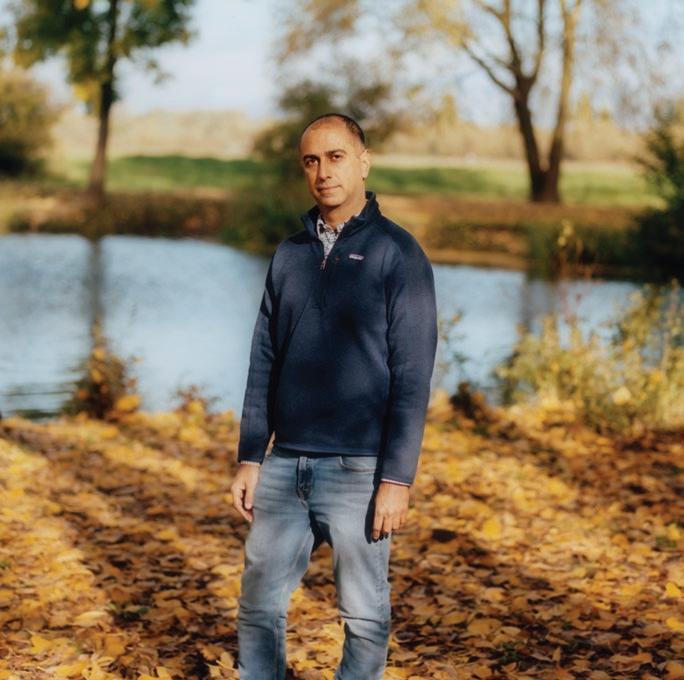

Blake Cole
Duyen Nguyen
OMNIA is published by the School of Arts & Sciences Office of Advancement
EDITORIAL OFFICES
School of Arts & Sciences
University of Pennsylvania
3600 Market Street, Suite 300 Philadelphia, PA 19104-3284
P: 215-746-1232
F: 215-573-2096
E: omnia-penn@sas.upenn.edu
STEVEN J. FLUHARTY
Dean, School of Arts & Sciences
LORAINE TERRELL
Executive Director of Communications
BLAKE COLE
Editor
SUSAN AHLBORN
Associate Editor
LUSI KLIMENKO
Art Director
HEMANI KAPOOR
LUSI KLIMENKO
ANDREW NEALIS
Designers
CHANGE OF ADDRESS
Alumni: visit MyPenn, the Penn alumni community, at mypenn.upenn.edu. Non-alumni: email Development and Alumni Records at record@ben.dev. upenn.edu or call 215-898-8136.
The University of Pennsylvania values diversity and seeks talented students, faculty and staff from diverse backgrounds. The University of Pennsylvania does not discriminate on the basis of race, color, sex, sexual orientation, gender identity, religion, creed, national or ethnic origin, citizenship status, age, disability, veteran status or any other legally protected class status in the administration of its admissions, financial aid, educational or athletic programs, or other University-administered programs or in its employment practices. Questions or complaints regarding this policy should be directed to the Executive Director of the Office of Affirmative Action and Equal Opportunity Programs, Sansom Place East, 3600 Chestnut Street, Suite 228, Philadelphia, PA 19104-6106; or (215) 898-6993 (Voice) or (215) 898-7803 (TDD).
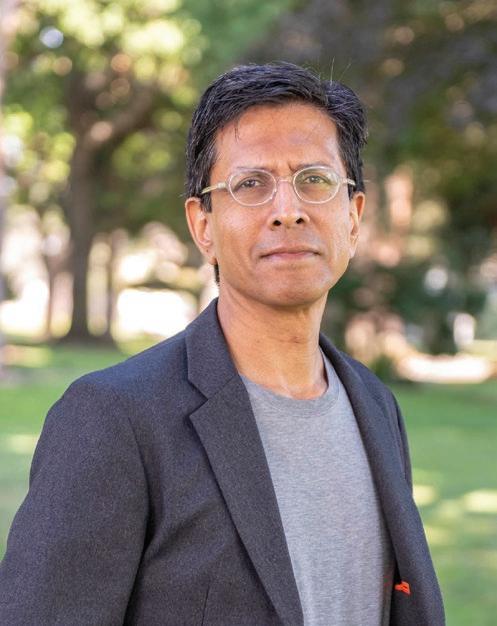
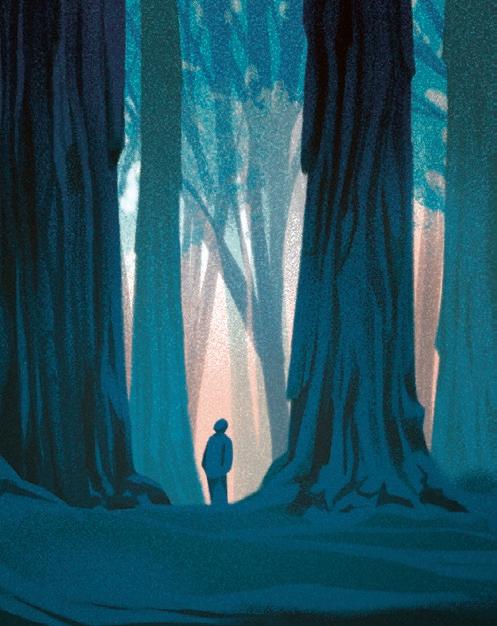
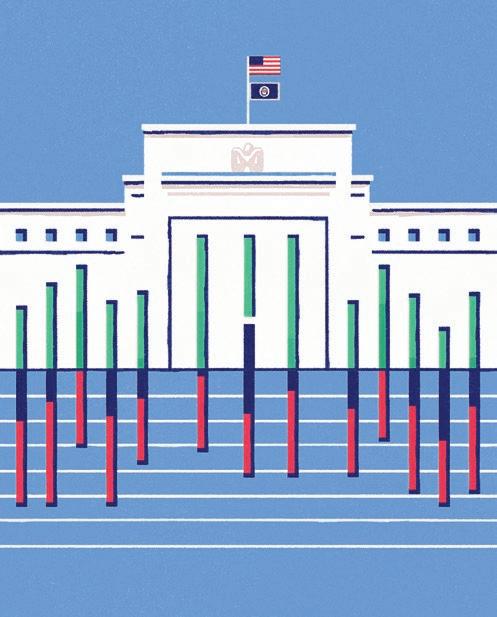

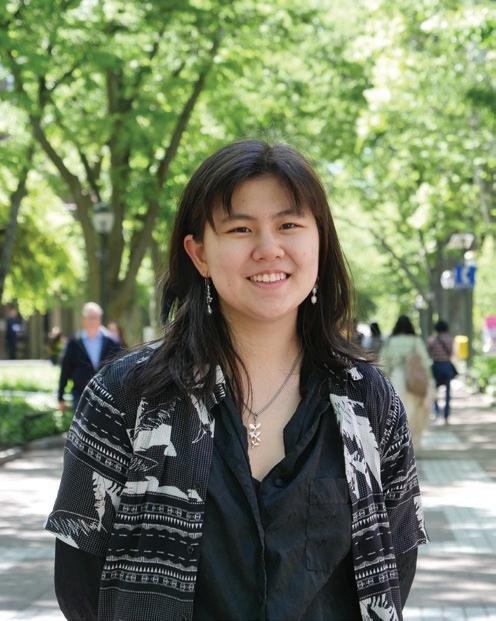

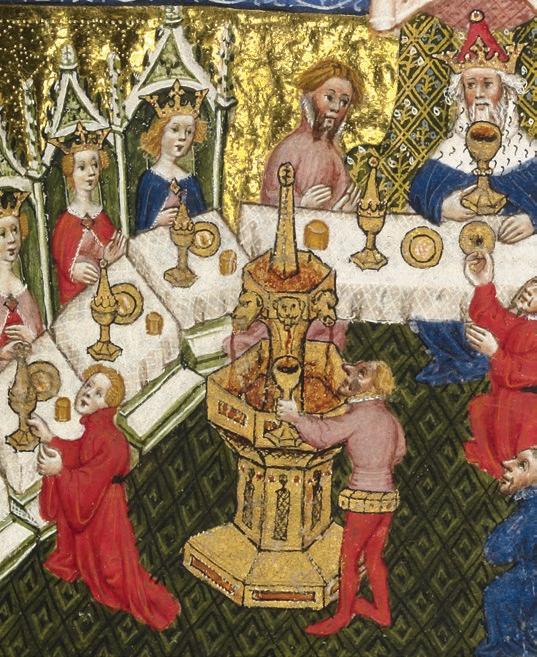

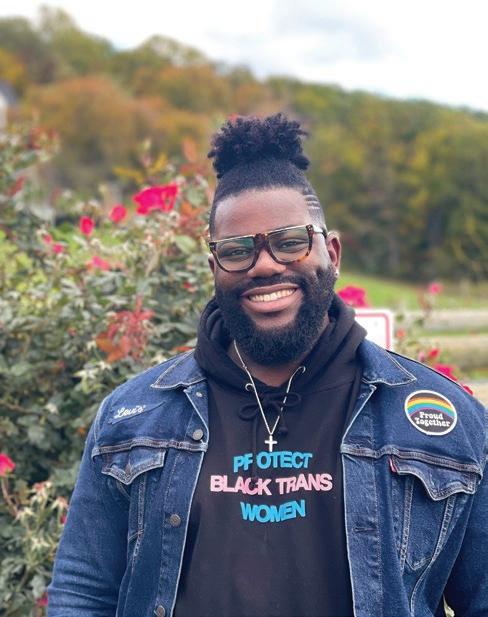
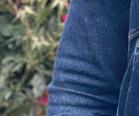

Cover Illustration: Marina Muun
OMNIA

The Energy of New Beginnings
The start of the academic year always brings new energy to campus, and this year the energy has been exceptional. Faculty and students are fully engaged in a way we haven’t seen since before the pandemic. In their teaching and learning, as well as in discussion, engagement, and actions, they demonstrate to me every day their passion and desire to make a difference.
The campus is drawing a great deal of this energy from the presence of our new president, Liz Magill. The entire Penn community, including students, faculty, administration, and alumni, came together to officially celebrate this new beginning at President Magill’s inauguration festivities on October 21. We were honored to have her spend two days this fall getting to know about the School of Arts & Sciences through a series of meetings with faculty from the humanities, social sciences, and natural sciences, as well as graduate students, undergraduates, and staff. In addition, she has been
spending time one-on-one with each of our 27 department chairs. Through her inspiring words at her inauguration, as well as through this substantial commitment of her own time and energy, our new president’s commitment to the arts and sciences comes through loud and clear.
Energy has also been on the front of our minds as the campus is mobilizing around the need to address critical environmental challenges. Two School of Arts & Sciences faculty, Joseph Francisco of Earth and Environmental Science and Chemistry and Kathleen Morrison of the Anthropology department, are co-leaders of the Provost’s Environmental Innovations Initiative, which is working to advance innovation and collaboration in the Penn research community. Earlier this fall, in coordination with this initiative, the School issued a statement confirming our commitment to address the threat of climate change to humans and to our planetary environment through a broad array of existing and
emerging programs. These efforts include the work of many faculty you can read about in this publication, such as Anthropology’s Nikhil Anand (p. 46), who is leading interdisciplinary initiatives that provide insight on worldwide climate disasters and water crises, or History’s Jared Farmer, whose new book considers the world’s oldest trees in the context of our climate crisis (p. 8), and Chemistry’s Andrew Rappe, whose research continues to help us forge a path toward clean energy technologies (p. 10). I hope that you draw as much inspiration from these stories as I do.
Dean and Thomas S. Gates, Jr. Professor of Psychology,
Pharmacology, and Neuroscience
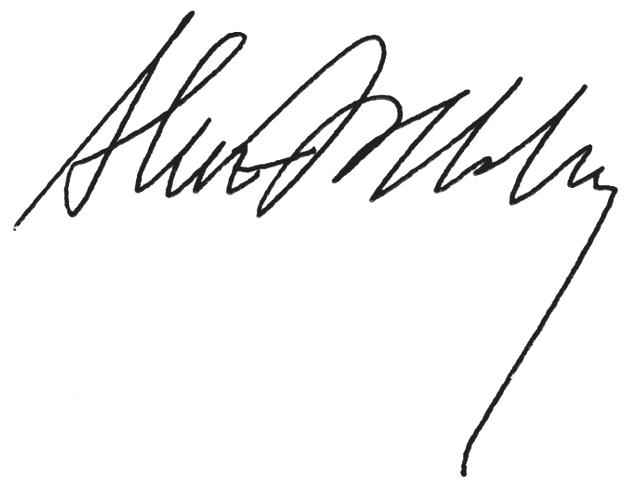
Godfrey

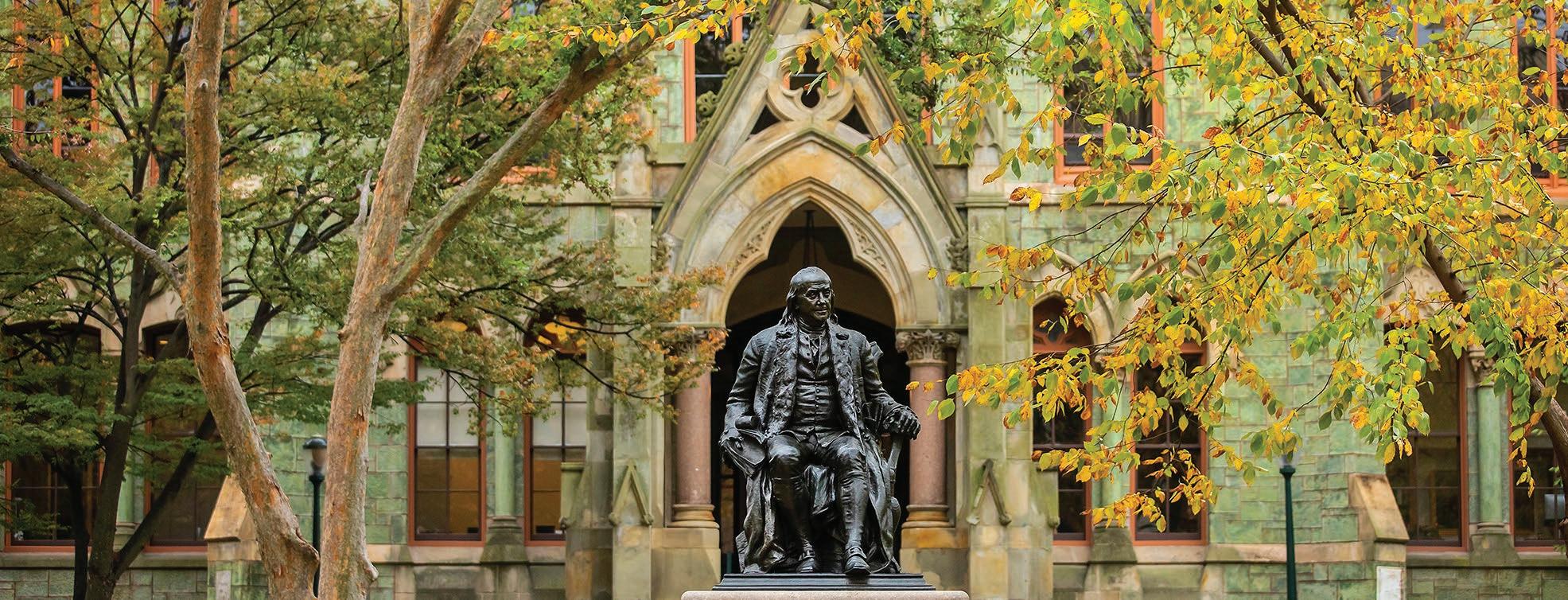
Organic Learning
As we head into the holiday season, we are excited to again deliver OMNIA in printed form. One focus of this issue is connection with nature. In our cover story, “The Physics of Us” (p. 16), we explore how living matter works— whether it’s the vasculature in leaves or the neurons in our brains—and find that it breaks standard rules and produces fascinating phenomena that could impact everything from medicine to robotics.
Our focus on nature also includes an examination of issues surrounding climate change, a central priority for the School (p. 2). “Beyond the Margins of Land and Water” (p. 46) follows two interdisciplinary research initiatives that provide insight on worldwide climate disasters and water crises, analyzing everything from melting glaciers to intensifying monsoon cloud bursts. “Tree Wisdom” (p. 8) profiles a new book that examines 5,000 years of living trees through the lens of science, religion, and history, as well as the long-term relationships between people and individual trees. And in our Last Look visual feature (p. 65), a postdoctoral researcher collects coral samples to study how ocean acidification—caused by rising CO₂ levels—is affecting the health of reefs.
Though the election season will be behind us by the time you read this, concerns over the economy and global affairs will certainly remain. In “OMNIA 101: The Federal Reserve Bank” (p. 12), we speak with a former Fed employee turned professor to learn more about why the
institution is especially relevant in times of financial crisis. We also learn how a fateful trip to Eastern Europe in 1989 inspired a professor to pursue a career studying the impact of the Cold War and its aftermath on the lives of individuals in “Ordinary Lives, Extraordinary Times” (p. 24), and how the Department of Russian and East European Studies is helping to bring Ukrainian scholars to Penn.
One of the strengths of Penn Arts & Sciences learning is the diverse classroom experiences our students share. With this in mind, our In the Classroom segment explores the “flipped classroom,” a learning model in which lectures and presentations are delivered outside of class time while in-person learning features active student engagement (p. 14). “Moments in Time” (p. 34) tells the story of a long-form nonfiction class that met over dinner, following two students as they create detailed portraits of life around campus, while “Threading the Needle” (p. 52) highlights an initiative in the College of Liberal and Professional Studies’ online Bachelor’s of Applied Arts and Sciences degree program that guides students in curating a digital collection of materials to showcase their academic abilities. This portfolio has helped graduates build their careers, including a professional ballerina who parlayed her new-found confidence into a leadership role at her ballet company.
In our Movers & Quakers alumni profile (p. 60), we speak with Victor Scotti, C’13, who is harnessing technology to work
towards a future where diversity, equity, and inclusion are the norm. Scotti also operates his own company, which “accelerates Black boys’ self-efficacy” through professional experiences, job shadowing, mentorship, and socio-emotional support.
A number of programs in the Penn Arts & Sciences community recently celebrated anniversaries, among them Kelly Writers House, the Center for the Advanced Study of India and its counterpart in New Delhi, the University of Pennsylvania Institute for the Advanced Study of India, and the Barbara and Edward Netter Center for Community Partnerships.
In “Celebrating the Past—and Planning for the Future” (p. 32) we explore how these initiatives’ combined 110 years of experience, research, education, and collaboration continue to have enormous impact at Penn and in the world.
We also share in the campus-wide welcome of Elizabeth Magill, the new President of the University of Pennsylvania. Magill recently met with Penn Arts & Sciences faculty, students, and staff to learn about highlights and priorities across the School (p. 5).
We hope you enjoy all the issue has to offer. Happy holidays.

Blake Cole, Editor
Ramanan Raghavendran Named Chair of Board of Advisors

Ramanan Raghavendran, Chair of the School of Arts and Sciences Board of Advisors
Ramanan Raghavendran, ENG’89, W’89, LPS’15, was appointed the new chair of the School of Arts and Sciences Board of Advisors, effective July 1, 2022. Raghavendran succeeded Michael Price, W’79, who stepped down from the Board after more than 20 years of service.
Raghavendran has been a member of the Board of Advisors for a decade and is also a University Trustee. He is a member of the Advisory Board for the Center for the Advanced Study of India and chair of the University of Pennsylvania Institute for the Advanced Study of India. He is the Global Coordinator of the Penn Alumni Interview Program and a member of the Orrery Society, and has long been a champion of financial aid.
“Ramanan truly walks the walk when it comes to his commitment to the liberal arts, and even earned a Master of Liberal Arts degree from our division of Liberal and Professional Studies while a member of our Board,” says Steven J. Fluharty, Dean and Thomas S. Gates, Jr. Professor of Psychology, Pharmacology, and Neuroscience. “He has always been extremely thoughtful and imaginative in his engagement with the School, and I am looking forward to his continued counsel and involvement as our Board’s new chair.”
Raghavendran is the co-founder of Amasia, a venture capital firm that invests in companies that help fight the climate crisis and enhance sustainability through behavior change. He is also active on the boards of several charities and NGOs.
New Faculty
Penn Arts & Sciences welcomed 14 new faculty members for the 2022–23 academic year.
Caroline Batten, Assistant Professor of English
Jane Esberg, Assistant Professor of Political Science
Chloe Estep, Assistant Professor of East Asian Languages and Civilizations
Jasmine Henry, Assistant Professor of Music
Aman Husbands, Assistant Professor of Biology
Corine Labridy, Assistant Professor of Francophone Studies
Melissa Lee, Klein Family Presidential Assistant Professor of Political Science
Dylan Rankin, Assistant Professor of Physics and Astronomy
Javier Samper Vendrell, Assistant Professor of German
Tahseen Shams, Assistant Professor of Sociology
Sabina Vaccarino Bremner, Assistant Professor of Philosophy
Beans Velocci, Assistant Professor of History and Sociology of Science
Secil Yilmaz, Assistant Professor of History
New Penn President Gets to Know Penn Arts & Sciences

Elizabeth Magill, the new President of the University of Pennsylvania, met with Penn Arts & Sciences faculty, students, and staff to learn about highlights, priorities, and challenges across the School. Magill held discussions with faculty and staff from all departments, and a virtual session with students in the online BAAS degree program for working adults & other non-traditional students. She also met with members of the First-Generation, Low-Income Dean’s Advisory Board and the College Dean’s Advisory Board (above), groups of undergraduate volunteers who work with Paul Sniegowski, Stephen A. Levin Family Dean of the College of Arts and Sciences, on initiatives to serve undergrads.
School
Funds Faculty
Initiatives in Global Change and Social Justice
Penn Arts & Sciences has awarded grants for six projects through the Making a Difference in Global Communities and the Klein Family Social Justice initiatives.
Making a Difference in Global Communities supports multidisciplinary, faculty-led projects that involve students and address societal challenges internationally, including inequities in race, gender, sexual identity, socioeconomic mobility, education, health care, and political representation, as well as the grand challenges of climate change, poverty, and immigration.
The 2022 Making a Difference in Global Communities projects are:
LAVA: Laboratorio para apreciar la vida y el ambiente, led by Michael Weisberg, Professor and Chair of Philosophy.
Using Animated Video to Address Sea Level Rise, led by Simon Richter, Class of 1942 Endowed Term Professor of German.
Regional Collaboration for Better Crime Policy, led by Anthony Braga, Jerry Lee Professor of Criminology and Director of the Crime and Justice Policy Lab.
Klein Family Social Justice Grants offer awards for academic activities that use the arts and sciences to contribute to positive social change in the United States, including Penn’s engagement with its surrounding community. They are intended to stimulate scholarship and education on topics of anti-racism, inclusion, diversity, and social justice and to promote additional opportunities for community engagement.
The 2022 Klein Family Social Justice Grants are:
Personalized, Accelerated Science Learning, led by Lori Flanagan-Cato, Associate Professor of Psychology.
Free State Slavery and Bound Labor: Pennsylvania, led by Sarah Barringer Gordon, Professor of History and Arlin M. Adams Professor of Constitutional Law, and Kathleen Brown, David Boies Professor of History.
Kitchen Science: A Platform for Inclusive and Accessible Outreach, led by Arnold Mathijssen, Assistant Professor of Physics and Astronomy.
Alex Schein


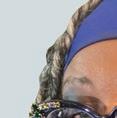



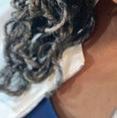






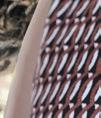
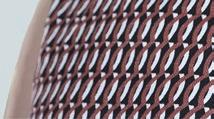
Faculty Honors

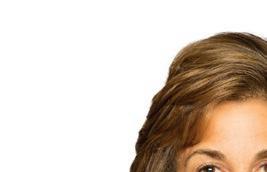










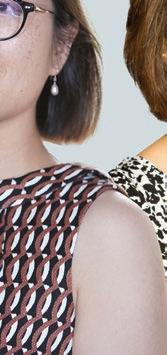

The outstanding work of the Penn Arts & Sciences faculty continues to be recognized with notable honors and awards. Here are just a few.
Anthea Butler, Geraldine R. Segal Professor in American Social Thought and Chair of Religious Studies, received the Martin Marty Award for the Public Understanding of Religion from the American Academy of Religion.
Diana C. Mutz, Samuel A. Stouffer Professor of Political Science and Communication, was co-winner of the 2022 Best Book Award from the American Political Science Association for Winners and Losers: The Psychology of Foreign Trade. Two members of the Department of History of Art were honored by the Society of Cinema and Media Studies for their books. Karen Redrobe, Elliot and Roslyn Jaffe Endowed Professor in Film Studies, received the Best Edited Collection Award for Deep Mediations: Thinking Space in Cinema and Media Cultures (co-edited with Jeff Scheible of King’s College, London), and Chenshu Zhou,






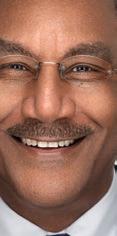






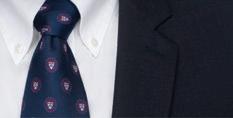





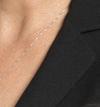

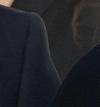





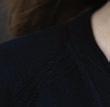


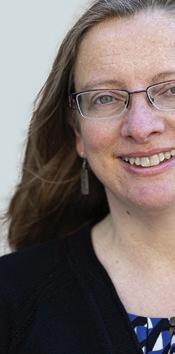
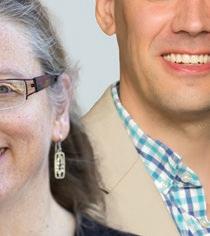
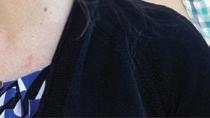
Assistant Professor of History of Art, won Best First Book Award for Cinema Off Screen: Moviegoing in Socialist China.
Evelyn Thomson, Professor of Physics and Astronomy, was named an American Physical Society Fellow, who are chosen for their outstanding advances in physics through original research and publication or significant innovative contributions in the application of physics to science and technology.
Several faculty members were recognized for their work in chemistry. The American Chemical Society’s (ACS) Physical Chemistry division established a new award, the Marsha I. Lester Award for Exemplary Impact in Physical Chemistry, in honor of Lester, Christopher H. Browne Distinguished Professor of Chemistry. Karen Goldberg, Vagelos Professor in Energy Research, won the 2023 William H. Nichols Medal from the ACS for outstanding contributions in the field of chemistry. Joseph Francisco, President’s Distinguished Professor of Earth and Environmental Science,




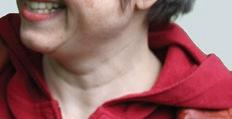


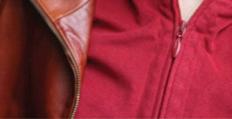
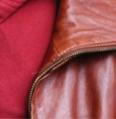

received the 2022 Centenary Prize from the Royal Society of Chemistry and the Philadelphia Section Award from the ACS. Eric Schelter, Professor of Chemistry, and his team won the 2022 Anders Gustaf Ekeberg Tantalum Prize, awarded to the lead author of the published paper, book, or patent that is judged to have made the greatest contribution to understanding the processing, properties, or applications of tantalum.
(L–R) Anthea Butler, Geraldine R. Segal Professor in American Social Thought and Chair of Religious Studies; Chenshu Zhou, Assistant Professor of History of Art; Marsha I. Lester, Christopher H. Browne Distinguished Professor of Chemistry; Diana C. Mutz, Samuel A. Stouffer Professor of Political Science and Communication; Joseph Francisco, President’s Distinguished Professor of Earth and Environmental Science; Karen Goldberg, Vagelos Professor in Energy Research; Evelyn Thomson, Professor of Physics and Astronomy; Eric Schelter, Professor of Chemistry; Karen Redrobe, Elliot and Roslyn Jaffe Endowed Professor in Film Studies
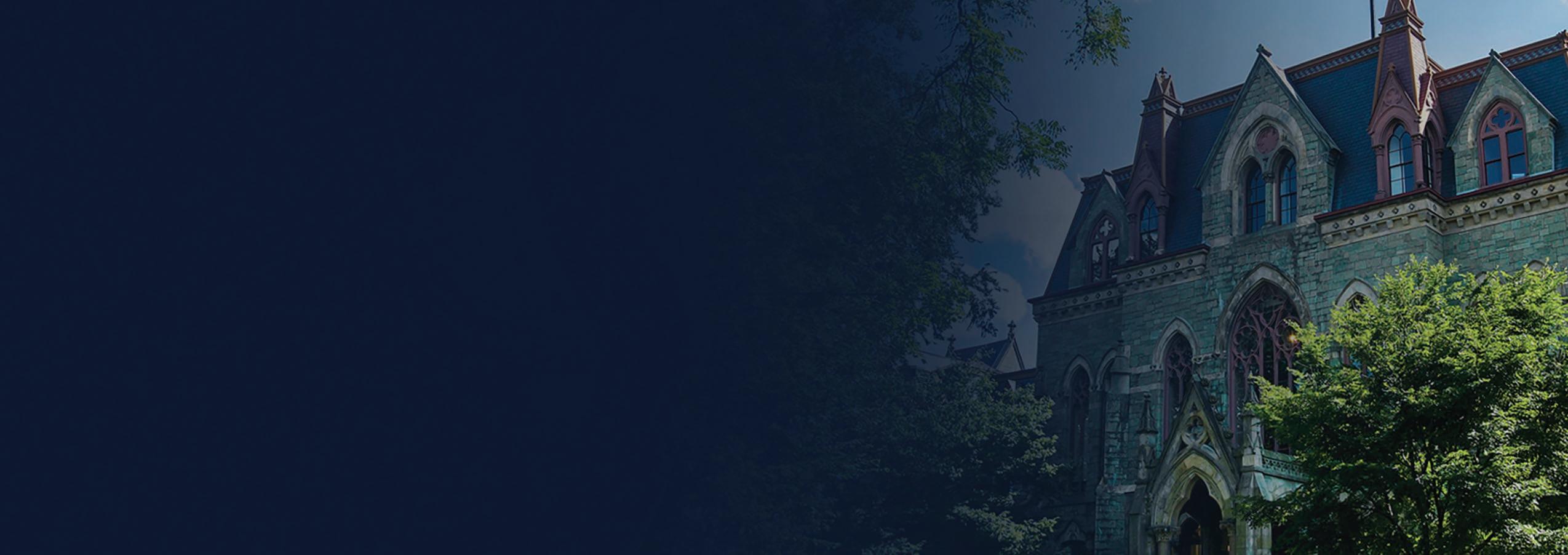
Asian American Studies Program Expands
The Asian American Studies Program will welcome three new core faculty members next year, expanding the range of topics and classes the program offers.
Tahseen Shams, currently an assistant professor at the University of Toronto who studies international migration, race and ethnicity, and religion, is due to arrive in the spring of 2023 as a member of the Department of Sociology. Hardeep Dhillon, a legal historian who recently earned her Ph.D. from Harvard University, will join the Department of History in fall 2023. Dhillon is currently a postdoctoral fellow at the American Bar Foundation researching law and inequality. Bakirathi Mani will also arrive during fall 2023 as a member of the Department of English specializing in Asian American studies, postcolonial studies, and
transnational feminist and queer studies. Mani, who currently teaches at Swarthmore College, is a founding member of the Tri-College Asian American Studies program at Swarthmore, Bryn Mawr, and Haverford Colleges.
The Asian American Studies Program was established in 1996 as a result of collective student, faculty, and alumni action, and celebrated its 25th anniversary this year. It is an interdisciplinary program that offers a minor as well as a broad range of courses, events, and research opportunities to contextualize the history, experiences, and contributions of Asian immigrants and persons of Asian ancestry in North America and the diaspora. It is led by Faculty Director David Eng, Richard L. Fisher Professor of English, and Co-Director Fariha Khan
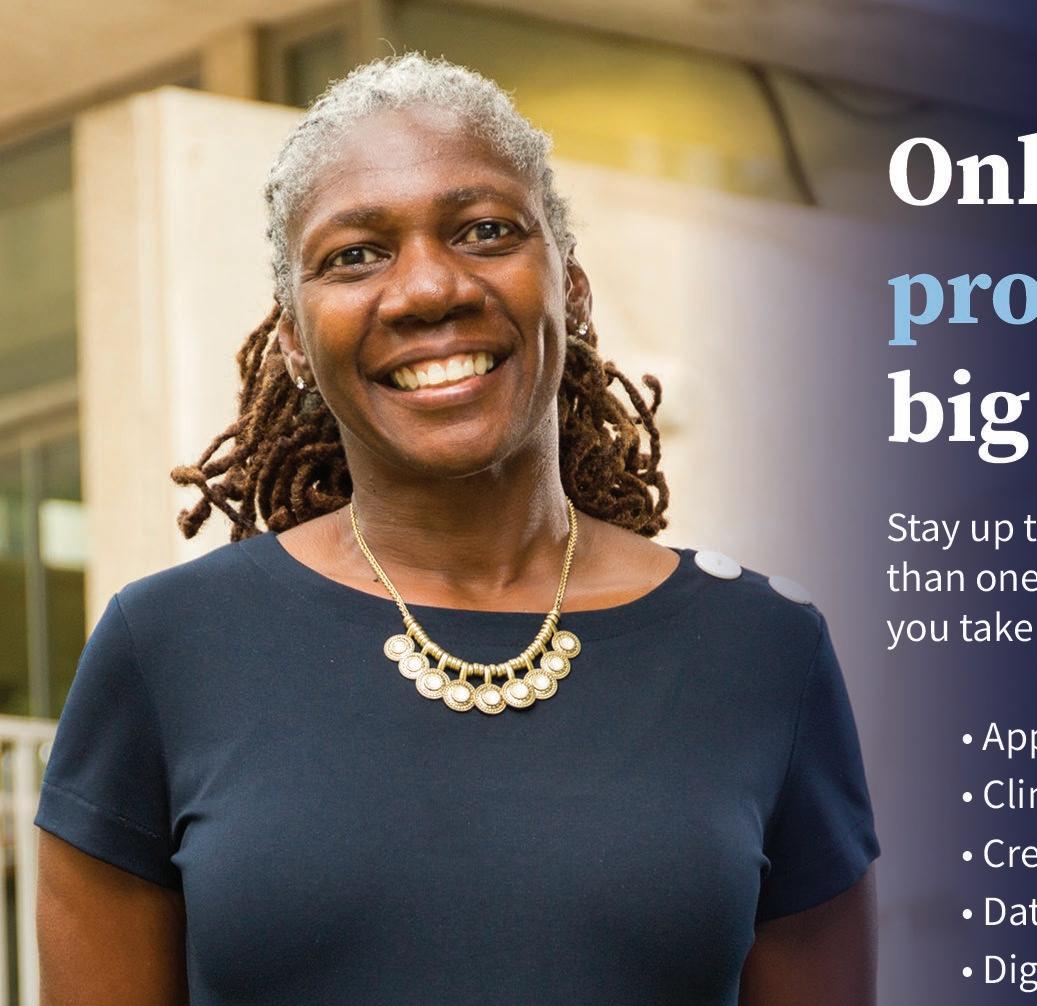
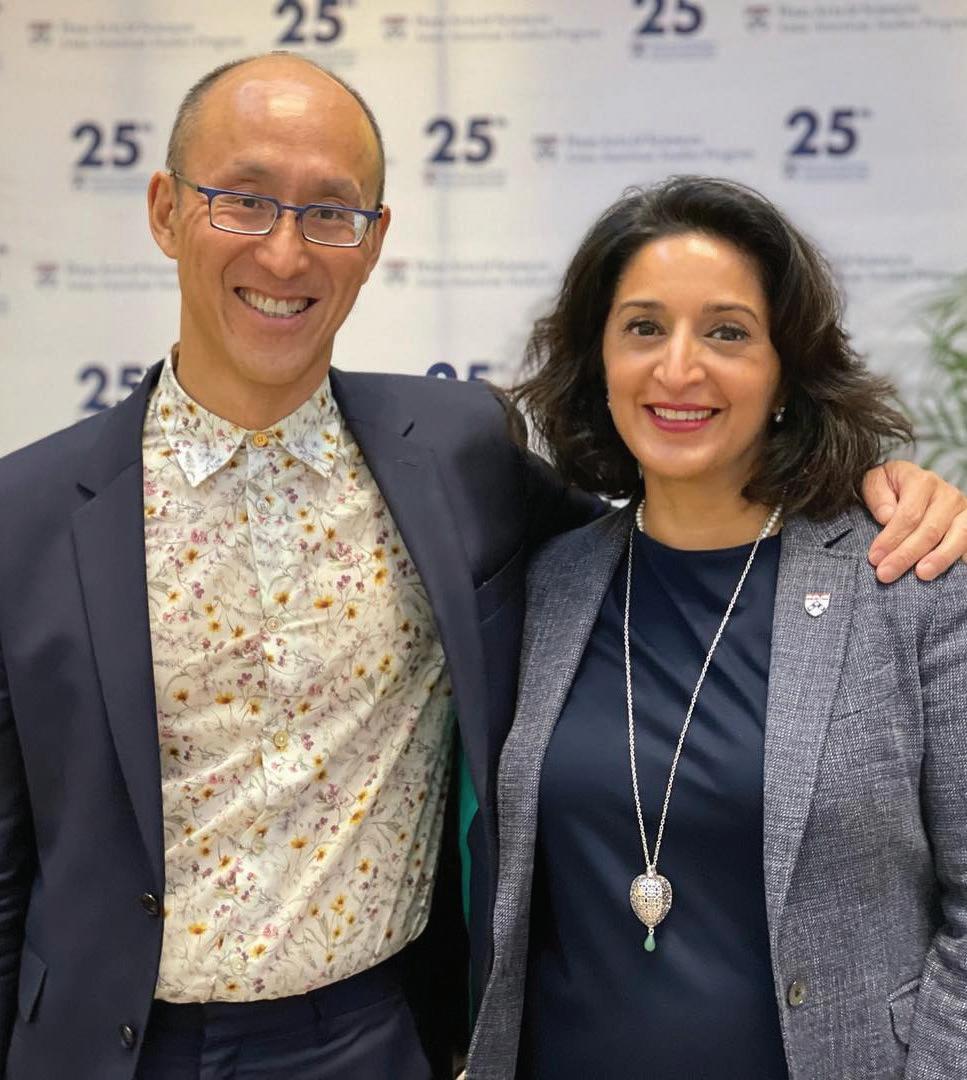
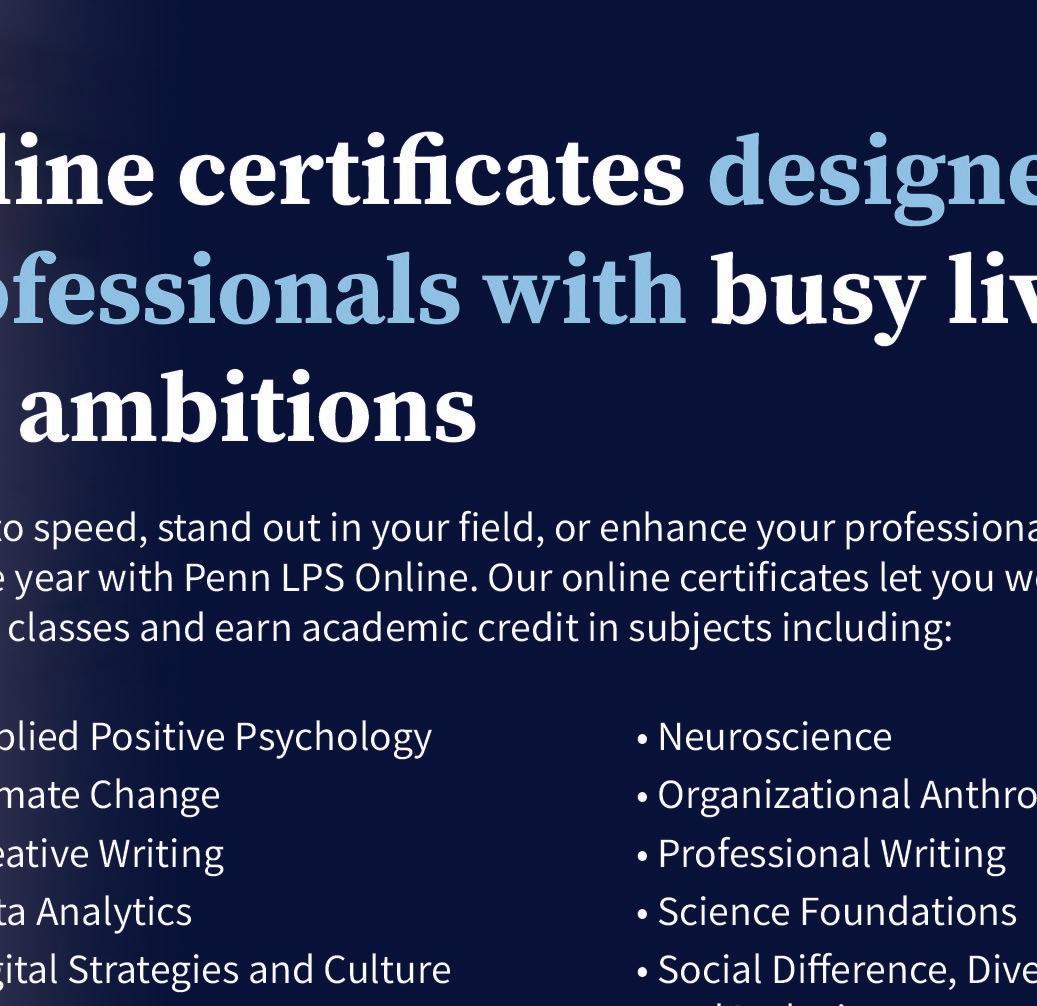



David Eng, Asian American Studies Program Faculty Director and Richard L. Fisher Professor of English, and Fariha Khan, Program Co-Director
Tree Wisdom
In his new book, Jared Farmer, Walter H. Annenberg Professor of History, examines what trees can teach us about the climate crisis and our relationship with time.
BY KATELYN SILVA
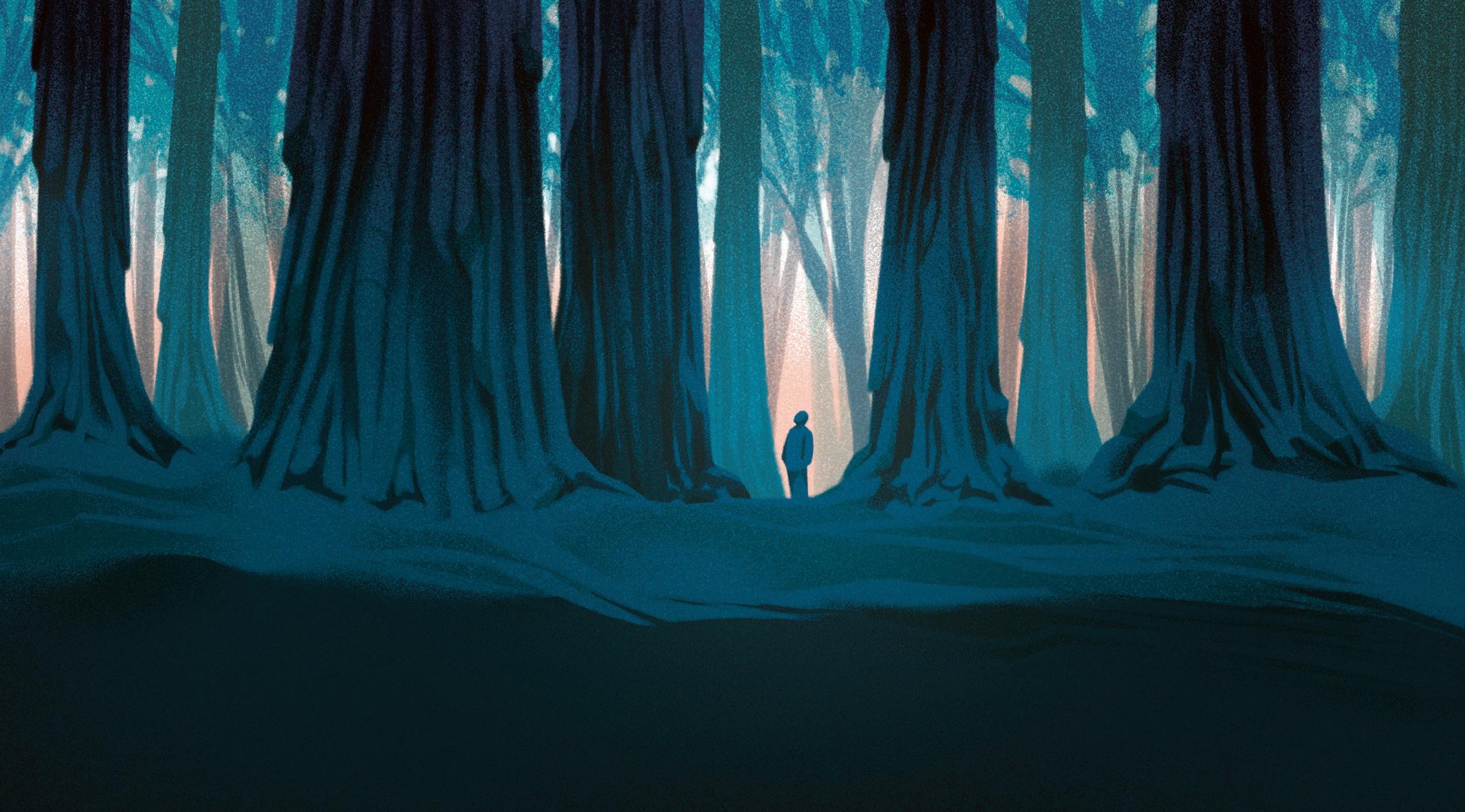
Humans have a long history of venerating ancient trees. That reverence and caretaking took a modern turn in the 18th century, when scientists embarked on a quest to locate and date the oldest living things on Earth, as Jared Farmer, Walter H. Annenberg Professor of History, narrates in Elderflora: A Modern History of Ancient Trees. The book takes readers from Lebanon to New Zealand to California, looking at the complex history of the world’s oldest trees, their relationship to time, and how they can help us address the climate crisis.
Humans are remarkably skilled at looking into our deep history, says Farmer, but they’re not particularly adept at thinking about the long future. Trees, however, are ideal for long-term climate thinking. Trees can persist for thousands of years. Their wood rings store valuable data about past climates, weather events, and natural disasters, and offer insight into events on a planetary to regional to local level that can be tied to calendrical dates and therefore historical chronicles. This makes trees powerful timekeepers, says Farmer.
“Ancient trees are bridges between short time and deep time, between lived human time and abstract geological time,”
continues Farmer, whose book looks at 5,000 years of living trees through the lens of science, religion, and history, as well as the long-term relationships between people and individual trees.
Elderflora joins a growing group of arboreal science- and tree-themed books released in the past decade, including the forest ecologist Suzanne Simard’s best-selling memoir, Finding the Mother Tree; the Pulitzer Prize-winning The Overstory by Richard Powers; and Barkskins, by Pulitzer-winner Annie Proulx.
Farmer believes this surging popularity relates to both the human desire for the connection that trees embody through their mycorrhizal network, as well as the increasing urgency surrounding the climate crisis, which has already killed or damaged ancient sequoias, ancient olives, ancient kauris, and other longlived tree species. He says, “The ‘mother tree’ is a metaphor for connectivity based on mutualism and care. This idea is very attractive in our current moment of miscommunication, disinformation, animosity, distrust, and political breakdown. This notion that there are beings out there who have a wholly different model of sharing and cooperating is inspiring.”
Farmer highlights Indigenous groups and religious figures who serve as caretakers for ancient trees. He also quotes from his conversations with scientists, who agree there’s a “real crisis right now for forests and trees, especially old trees, and most especially big old trees, whose climate of establishment is now long gone.”
Humans have already changed the climate going forward centuries, perhaps millennia, Farmer notes. He hopes that understanding ancient trees and our relationship to them will develop our capacity for hindsight and foresight and create emotive connections to the far future in order to work together on climate now.
“There is much to learn about how to best live on Earth from trees,” he says. “Trees are solar-powered, vegetarian, and committed to their locale. There’s something deeply inspiring and deeply Earth-appropriate about that way of living. There’s no reason to think our species can’t have at least a few million more years in its future, if we learn to live appropriately alongside life-forms that preceded us and will surely outlast us.”
Listen on Repeat
Mary Channen Caldwell, Assistant Professor of Music, explores the medieval refrain in song outside of vernacular contexts.
BY DUYEN NGUYEN
hile working on a directed study on medieval dance in graduate school, Mary Channen Caldwell, Assistant Professor of Music, kept coming across references to Latin songs with refrains. In contemporary music, the refrain refers to a song’s repeated lines, or its chorus— think of the part that you somehow always remember and sing along to.
But the refrain in the repertoire that caught Caldwell’s attention is distinctive in a number of ways. “You can have the same refrain in different songs, for example,” Caldwell says, explaining that there is more to the medieval refrain than its association with dance. Her new book
Devotional Refrains in Medieval Latin Song explores these possibilities, tracing how the Latin refrains and refrain songs were created, transmitted, and performed.
Devotional Refrains in Medieval Latin Song focuses on devotional songs that would have been part of the musical practices of the Latin-literate communities attached to churches, abbeys, and schools across medieval Europe. The book, which includes five chapters, as well as an introduction and conclusion, highlights the versatility of the Latin refrain as a devotional tool in these communities— and as an interpretive framework for modern-day scholars. Each chapter analyzes a specific aspect of the Latin refrain, from its relationship to medieval notions of time to the refrain’s role in the formation of devotional communities. To carry out her study, Caldwell compiled and studied over 400 vocal works from dozens of manuscripts located in archives in France, Italy, Ireland, and elsewhere.
The book considers songs chiefly from the 11th to the 16th century, first examining the relationship between the Latin refrain and perceptions of time in the
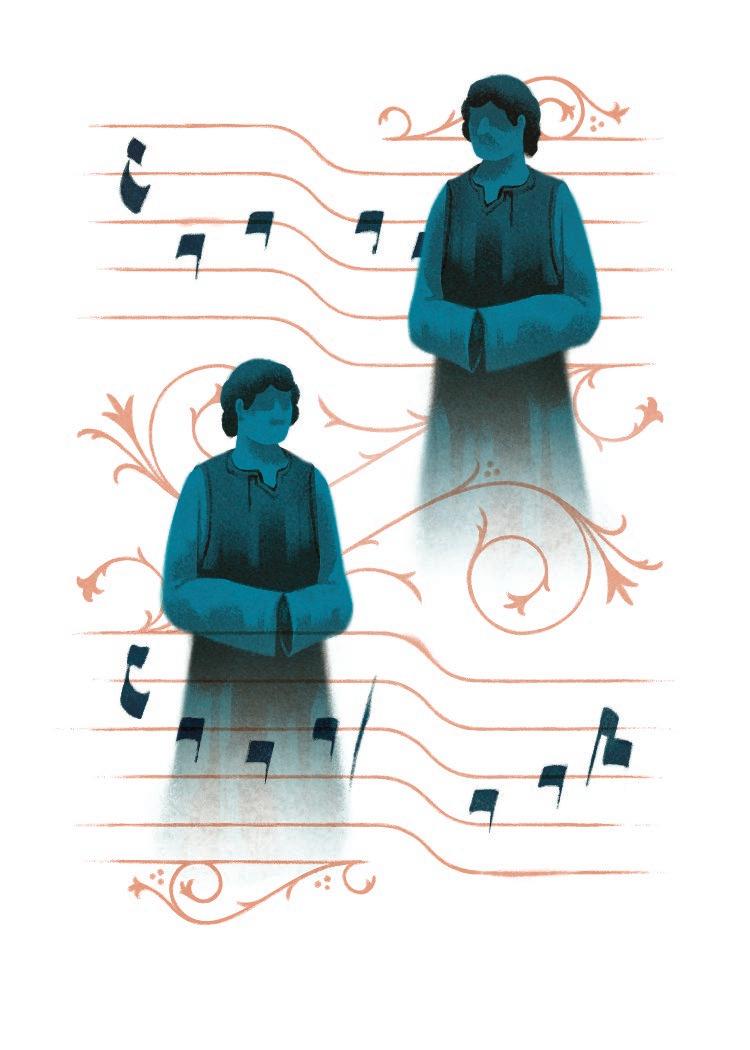
Middle Ages. “Latin refrain songs and the refrains in them negotiate different poetic and musical temporalities,” Caldwell explains. While medieval Christians understood time through liturgical celebrations like Christmas or Easter, Caldwell says that Latin refrain songs merged the liturgical calendar with the seasonal experience of time—spring, summer, winter, and fall.
Another notable feature of the Latin refrain appears in the manuscripts themselves as inscriptions, rubrics, and marginalia. This is significant for both scholars studying medieval music and those trying to reconstruct medieval cultural traditions. Caldwell says, “One of the hardest things about studying medieval music is that we don’t know how it’s performed. We can make educated guesses— we can study the theoretical treatises and make interesting hypotheses—but at the end of the day, there’s a lot that we just don’t know.”
The annotated manuscripts of many Latin refrain songs shed some light on these unknowns, sometimes indicating who would sing what or even explaining why a collection included a certain song. One of the sources that Caldwell examines—the Moosburger Graduale, a manuscript containing Latin chant and devotional songs from 14th-century Moosburg, Germany— includes a preface written by the dean of the local church’s song school. “Textual introductions to songs are pretty rare, but this gives us insight into the medieval perspective on this repertoire from someone who is actively involved in the musical life of, in this case, choir boys,” says Caldwell. Songs like those in the Moosburger Graduale would have likely been adapted to other contexts. A key finding of Caldwell’s research, then, is that Latin refrains were rarely fixed, despite their repeatability. “From the 12th to the 16th centuries in Europe, you have these refrains that appear across multiple songs and each time they appear in any song, you have the possibility of remembering what it was in the original song and also creating a new context for that same refrain,” Caldwell says, explaining how the Latin refrain moved across time and space while simultaneously creating “networks of memory and allusion.”
“Some of these songs continue to be sung for hundreds of years and a couple of them actually end up getting translated into vernacular and sung as Christmas carols,” Caldwell explains. “These are songs that have had a lifespan of millennia and that’s really unusual. But this speaks to the idea that these little units of text and music were somehow meaningful—they were meaningful enough to continue being part of traditions that in other ways had changed dramatically.”
Marrying Models With Experiments to Build More Efficient Solar Cells
Andrew M. Rappe, Blanchard Professor of Chemistry, and postdoctoral researcher Arvin Kakekhani lend their expertise to a study on solar cell efficiency.
BY LUIS MELECIO-ZAMBRANO

n a single day, enough sunlight strikes Earth to power the world for an entire year. While the cost of solar energy has decreased dramatically, current silicon-based solar cells are expensive and energy-intensive to manufacture, prompting researchers to look for alternatives. One of the prime contenders for the next generation of this renewable energy is called perovskite solar cells. These synthetic materials are cheaper and require less energy to produce, but fall behind many silicon-based cells in terms of their stability and efficiency.
Now, a paper published in Nature Communications from the groups of Andrew M. Rappe, Blanchard Professor of Chemistry at Penn, and Yueh-Lin Loo of Princeton University, gives insight into how the molecular make-up of certain perovskites might affect their efficiency and offers a path forward to better solar cells using a simple metric.
“The world currently needs more efficient and cost-effective photovoltaic cells, and 3D hybrid perovskite PVs have taken the world by storm,” says Rappe, who also co-directs Penn’s undergraduate Vagelos Integrated Program in Energy Research. “But they are irreversibly damaged by water, which is a showstopper for practical applications.”
In the study, researchers investigated a certain class of perovskites called 2D
hybrid perovskites. Initially, the Princeton team prepared a set of 2D perovskites with different organic molecules, studying how those molecules affected the inorganic layer’s alignment and the solar cell efficiency. They noticed that the type of molecule influenced the structure and energy efficiency of the solar cells but didn’t exactly know why or how. They needed an atomistic insight to complement the experimental findings and hypotheses, so they reached out to Rappe and Arvin Kakekhani, then a postdoc in the Rappe group, both experts in using computers to model chemical interactions.
From the current quantum mechanical calculations and charge modeling work, Kakekhani and Rappe found that the molecules in the organic layer could interact with each other, lining up in pairs or in zigzags between the metal-based layers of the perovskites. When forming these pairs or zigzags, the organic molecules interacted less with the metal-based layer, giving the layer space to align properly and improving the performance of the resulting solar cells.
But Kakekhani wondered whether he could find a way to capture this phenomenon in a simple value that described the interaction between the organic and inorganic layers. After testing various models, he landed on one that described how far away the interactions in the
organic layer pulled the positive charge from the inorganic layer. Then he tested it to see whether it might predict how well the inorganic layer would align and how well the solar cells might perform.
Kakekhani predicted the real-life trends with surprisingly high fidelity. In mathematical terms, his model gives a coefficient of determination of >0.95, almost a perfect linear correlation. Because this metric only needs a computer to predict solar cell performance, it could allow scientists to choose which molecules might work best in perovskites before stepping into the lab, helping researchers narrow their efforts to only the most promising candidates.
“There are literally millions of molecules that people could try. But it’s not so easy to make millions of solar cells,” says Rappe. “This gives people a simple scoring rule, where they could analyze whether a molecule they’re considering is likely to enhance the productivity of the solar cell.”
In the future, Rappe says these insights might also help with perovskite LEDs. If these perovskites can turn light into energy efficiently, they should be able to do something similar when turning energy to light. More generally, he says, “This study shows that we are learning how to assemble materials, atom by atom and molecule by molecule, that can solve the world’s most pressing energy challenges.”
Cancer Cells Selectively Use ‘Drones’ to Keep T Cells From Infiltrating Tumors
Wei Guo, Class of 1965 Term Professor of Biology, identifies a new tool to help predict how a patient might respond to checkpoint inhibitor drugs.
BY KATHERINE UNGER BAILLIE
Checkpoint inhibitor drugs have been a gamechanger for many cancer patients. Yet around 70 percent don’t respond to these medications, which work by removing the “brakes” on the immune system’s response to a tumor. In some non-responders, the immune system’s killer T cells can’t penetrate the tumor boundaries.
In a new study, Wei Guo, Class of 1965 Term Professor of Biology, identified a mechanism responsible for keeping killer T cells from infiltrating a tumor. The work, published in Nature Communications, offers a new tool to predict how a patient might respond to checkpoint inhibitor drugs.
“Infiltration of the tumor is crucial for the success of checkpoint blockade therapy,” says Guo, senior author on the work. “Because this T cell infiltration is so crucial, it’s also important to know the molecular mechanism of how it works and when it doesn’t.”
Guo’s lab has explored how cancerous tumors secrete exosomes, small vesicles that serve as biological drones that do battle with the immune system at sites well away from the primary tumor. Exosomes loaded with the protein PD-L1 can interact with T cells’ PD-1 protein, causing the T cells to tire before they reach the tumor. “If you consider exosomes as drones, then PD-L1

is the weapon loaded on the drone,” Guo says.
Many checkpoint inhibitor drugs block this interaction, aiming to keep T cells invigorated and ready for a fight. Guo and colleagues wanted to understand how cancer cells load their “drones” with PD-L1, and whether this activity prevents T cells from infiltrating tumors.
Turning their focus to the process by which cancer cells generate exosomes, the researchers paid particular attention to a molecule called HRS, a member of a large complex called ESCRT involved in sorting the “cargo” placed in exosomes. In the lab, they looked in metastatic melanoma cells and found that frequently ERK, an enzyme well known to be activated in melanomas, added a phosphate group to HRS.
“We hypothesized that the tumor is regulating HRS, which has a major role in generating
exosomes and uploading PD-L1 to their exosomes,” Guo says.
Guo and colleagues created different cancer cell lines, some of which had regular HRS, and some of which had HRS with either reduced or elevated levels of phosphorylation. Mice exposed to the more highly phosphorylated HRS developed tumors that grew significantly faster; these animals also had lower levels of T cell infiltration in their tumors.
When the researchers gave these mice a checkpoint inhibitor drug that blocked PD-1, the tumors did not respond. Yet when they added an ERK inhibitor drug, the tumors shrank. Further studies showed that exosomes processed by phosphorylated HRS had cargos enriched with PD-L1, promoting resistance to the checkpoint blockade.
In tissue samples from melanoma patients, different areas of the tumors had varying levels of phosphorylated HRS. “In the
areas of the tumor with a lot of phosphorylation, the T cells stayed outside the border,” says Guo. “They just could not cross.”
The findings suggest that screening cancer patients’ tumors for HRS phosphorylation may help predict their responsiveness to checkpoint inhibitors. And reducing HRS phosphorylation could be a strategy for boosting the immune system’s defenses against cancer. While ERK inhibitors alone could be toxic, says Guo, an approach that blocked phosphorylation of HRS specifically could prevent it from loading PD-L1 to exosomes in the first place.
Guo’s group will continue investigating how tumor cells can be so selective in choosing which cargo to send out in exosomes—and how T cells, in turn, can selectively send out their own exosomes to fight back.
“It’s a clash of two titans,” Guo says.
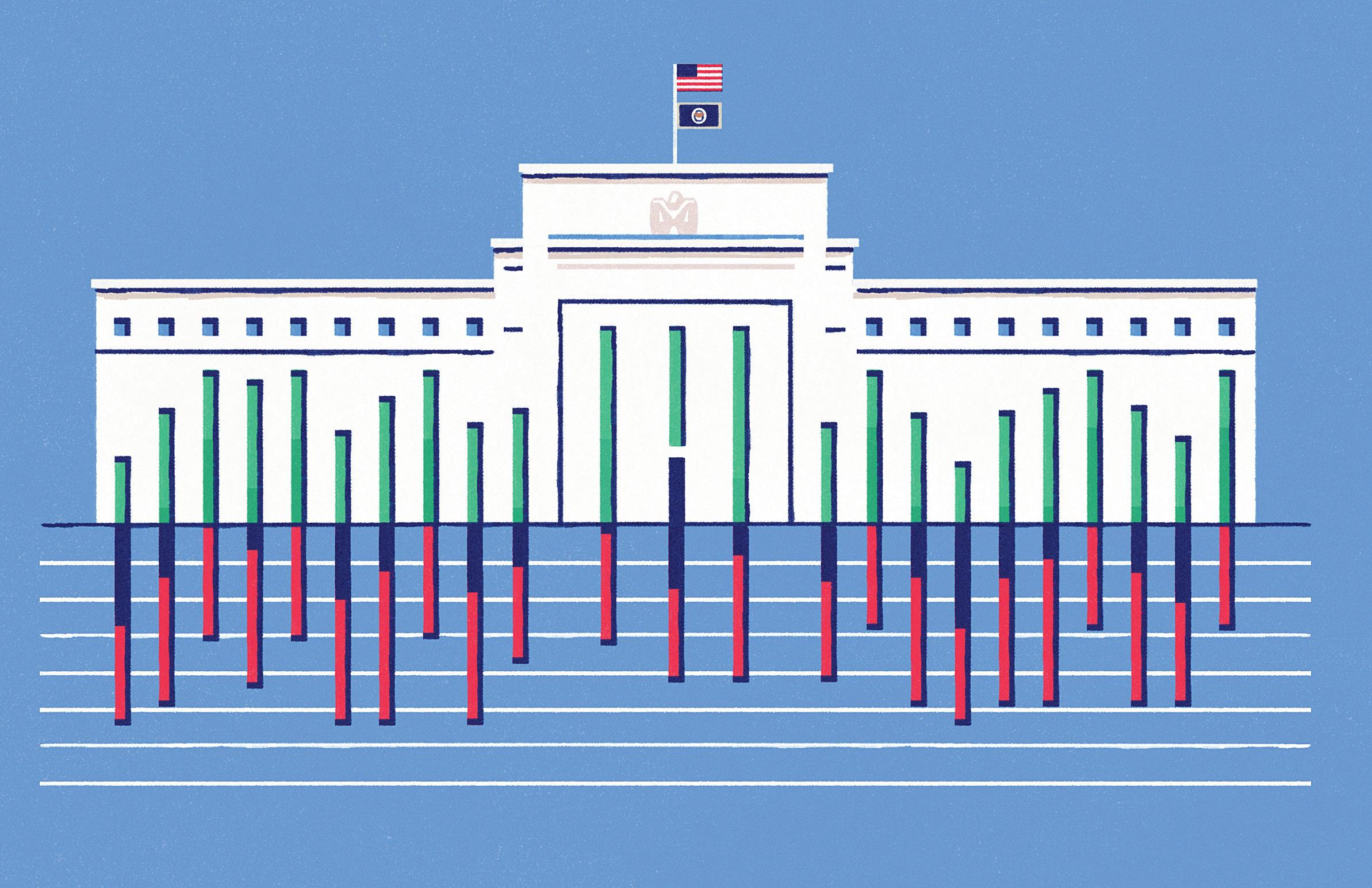
THE FEDERAL RESERVE BANK
We speak with Harold Cole, James Joo-Jin Kim Professor of Economics, to learn more about the Fed’s structure, objectives, and capabilities—and why it is especially relevant in times of financial crisis.
By Blake Cole
Illustration by Gracia Lam
OMNIA 101 offers readers a peek into what faculty do each day in their classrooms and how their research and expertise are inspiring the next generation. he Federal Reserve Bank, more affectionately known as the Fed, impacts many important aspects of our everyday lives, from purchasing power to job security. We spoke with Harold Cole, James Joo-Jin Kim Professor of Economics, who worked at the Minneapolis Federal Reserve for more than a decade, to learn more about the Fed’s structure, objectives, and capabilities— and why it is especially relevant in times of financial crisis.

What is the role of the Fed— historically and now?
The Fed was created well before the Great Depression and basically was a response to various banking crises. In particular, the government was worried about the kind of bank run you see in the film It’s a Wonderful Life with Jimmy Stewart, where everyone panics and withdraws their money all at once, and the bank has to sell its assets at a fire sale. Then, suddenly, you’re not going to get your money back. So, the Fed was designed to try to stabilize the banking system—to buy up assets and underpin their value, to make emergency loans to banks that they think are solvent, and to try and prevent these crises from snowballing.
Historically, the Fed also had a supervisory role where they would go out and inspect the banks. In 1933, Roosevelt basically shut down the U.S. banking system because of runs. He had auditors inspect all the banks in fairly short order, and had them start reopening, and it stopped the banking crisis.
Over time, the Fed’s role has expanded, where they now look to stabilize the price level, keep the financial system stable, and also maintain the economy running at a high level. However, all of these goals are in opposition to each other. One classic example of this
is that stabilizing the price level to prevent inflation could have employment consequences, and that’s the big one we’re talking about right now.
The main Fed, also known as the U.S. central bank, is made up of 12 smaller Feds divided into geographic districts. Why?
The smaller Feds were created as part of an effort to decentralize the power structure within the Federal Reserve system. I was at the Minneapolis Fed from 1990 to 2000—a dinky, regional Fed—but they had fantastic people working there and fantastic people visiting. The number of Nobel prizes that are associated with the Minneapolis Fed is amazing. So, it was a very different intellectual environment than you would see at the Federal Reserve board. It was much more open and academic, and it became a conduit by which new ideas flowed into the Fed. I think your average Fed chairman is probably more conscious of the public good than I would argue a lot of politicians are, because of how they’re able to react to the community’s needs.
One of the Fed’s key duties is to set interest rates. What does this entail?
If the Fed raises interest rates, that discourages consumption today versus consumption tomorrow, because you’re saying, “If I put aside $1 today, that translates into more money in the future.” But if you’re undertaking any finance activity, like buying a house, mortgage rates are higher, so it tends to depress economic activity. But, the hope is that by cranking up interest rates, it will bring the demand side more in line with the supply.
What are some of the potential effects on everyday citizens when interest rates are adjusted?
When we put in very low interest rates during the Great Recession and the COVID crisis, that hurt a lot of conservative savers. If you were in the stock
market, though, it’s been very good to you. We know that wealth is very skewed in this country, but another factor is what form of wealth people have. As you go up the income distribution, people tend to hold much more stock and private equity—a bunch of things that are going to be responding positively to reductions in the interest rate. But if you were someone who was saving using these interest-bearing assets, you have not done so well.
One ripple effect in terms of inflation is that some prices adjust right away, but others, like wages, are much slower to adjust. So, real earnings might be doing pretty well, but then turn down. That’s because even though nominal earnings are going up, they’re not keeping pace with inflation. If you’re on social security, for instance, because that adjusts slowly, you’ll take a significant hit.
What is your opinion on how the Fed is addressing the dual challenges of inflation with threat of recession?
I think right now, there’s a lot of uncertainty. We had some shocks that they didn’t anticipate—the Ukraine war would be a big example of that. The stock market also came down a lot, so that’s going to make people poorer directly. I think what’s relatively obvious is if inflation continues to be high, they’re going to continue this policy of ratcheting up the Fed funds rate until they bring it down.
Should there be a push for increased public awareness in regard to the Fed and the impact that changes in interest rates have?
One thing that really strikes me is we have all these high schools that are advising kids on where they should go on to college, but maybe we should take a few minutes and talk about debt and interest rates. You’re investing in yourself, which is a good thing, but if you’re going to take on all this debt, you need something that’s going to offset it—you need a return on it.

WHEN SOMETHING CLICKS
How Structured, Active, In-class Learning is changing the calculus on teaching.
By Jane Carroll
Photography by Brooke Sietinsons
Philip Gressman, Professor of Mathematics
he idea of the “flipped classroom”—in which lectures and presentations are delivered outside of class time and in-person learning features active student engagement—is becoming a familiar concept to many in education, but Professor of Mathematics Philip Gressman says that’s only one example of a more comprehensive teaching approach called SAIL.
The idea is that anything you’re doing that’s getting your students engaged, that’s having their thinking happen in that classroom— that’s SAIL.
“Structured, Active, In-class Learning, or SAIL, is an acronym that’s unique to Penn,” explains Gressman. “It describes a whole host of ideas for how to run a classroom. The idea is that anything you’re doing that’s getting your students engaged, that’s having their thinking happen in that classroom—that’s SAIL,” he says.
In the humanities, students have long been accustomed to coming to class ready to discuss pre-assigned readings, but that’s not always the case in math and science classes. Gressman says, “STEM students are often treated by instructors like empty vessels—that the information should be poured into them, and what we’re trying to do is push back against that. So, I might say, ‘Please read this section, try these exercises, and then come to class and let’s do the next steps together.’”
Gressman uses the SAIL approach primarily in his Calculus I course, and he puts a heavy emphasis on group work. Students tackle exercises together, slowly building on the basics of a new concept. The aim is to capture that “aha” moment in real time, to be present with students when something clicks.
It’s not easy to do, and Gressman says getting it right requires trial and error. “You’re balancing on a knife edge,” he says. “If you go too far, if you make it too hard, then you have to deal with frustration and you create unnecessary problems. It takes a while to get a sense of exactly where the line is, because being right on the edge of failure—but succeeding—that’s the optimal spot for learning.”
Gressman was drawn to SAIL out of a desire to “bring his teaching where it’s needed most.”
“Penn is a place where there are plenty of students who are very strong, and they can do well in any class without much help, but in a traditional calculus class, some students really struggled,” he says.
After switching to SAIL, Gressman says his grade distributions in Calculus I became much more compact, and the grades of students at the lower end jumped up. Overall averages were higher, too, suggesting that everyone benefits. Gressman says SAIL also helped him create a more inclusive environment that addresses persistent stereotypes about who is good at math and who is not.
Gressman also has adopted a few of the technological tools he used for remote learning during the height of the COVID-19 pandemic, such as having students collaboratively edit documents on Google Docs outside of class time. He also moved his office
hours online, which he says is much more accessible for students and easier for him.
Some students are initially uncomfortable with the SAIL approach, Gressman notes, not only because it’s unfamiliar, but also because they may sense that they are not “getting” the material.
One theory, he says, is that a good lecture that’s pleasant to listen to creates a cognitive fluency effect— it’s entertaining, but it may not stick. Another possibility is that students are not used to confronting the feeling of struggle in the company of their peers and instructors. “It can be an uncomfortable thing, but that’s exactly what we want,” Gressman says. “We want that struggle to happen in the classroom, so that it is done and overcome when the exam comes. You have to explain that that’s not a mistake—it’s a feature.”
Gressman explains the SAIL approach to his students at the outset of the course, including the research behind it. He says this transparency has pedagogical benefits. “When students have an opportunity to examine the way you’re thinking about the course, and see for themselves what the evidence is, they’re more willing to go along.”
This transparency carries over to the students. For instance, to counter concerns they are experiencing more difficulty than their peers, Gressman asks students to openly share how much time they spend on problems.
“I actually have the whole class go up and make a histogram,” he says, “so that everybody can see what everyone else’s experience is like.”
Most, he says, ultimately embrace the SAIL approach. “I have students come up to me at the end of the semester and say, ‘I need to take the next course in the sequence. Which one is being offered in this format?’”
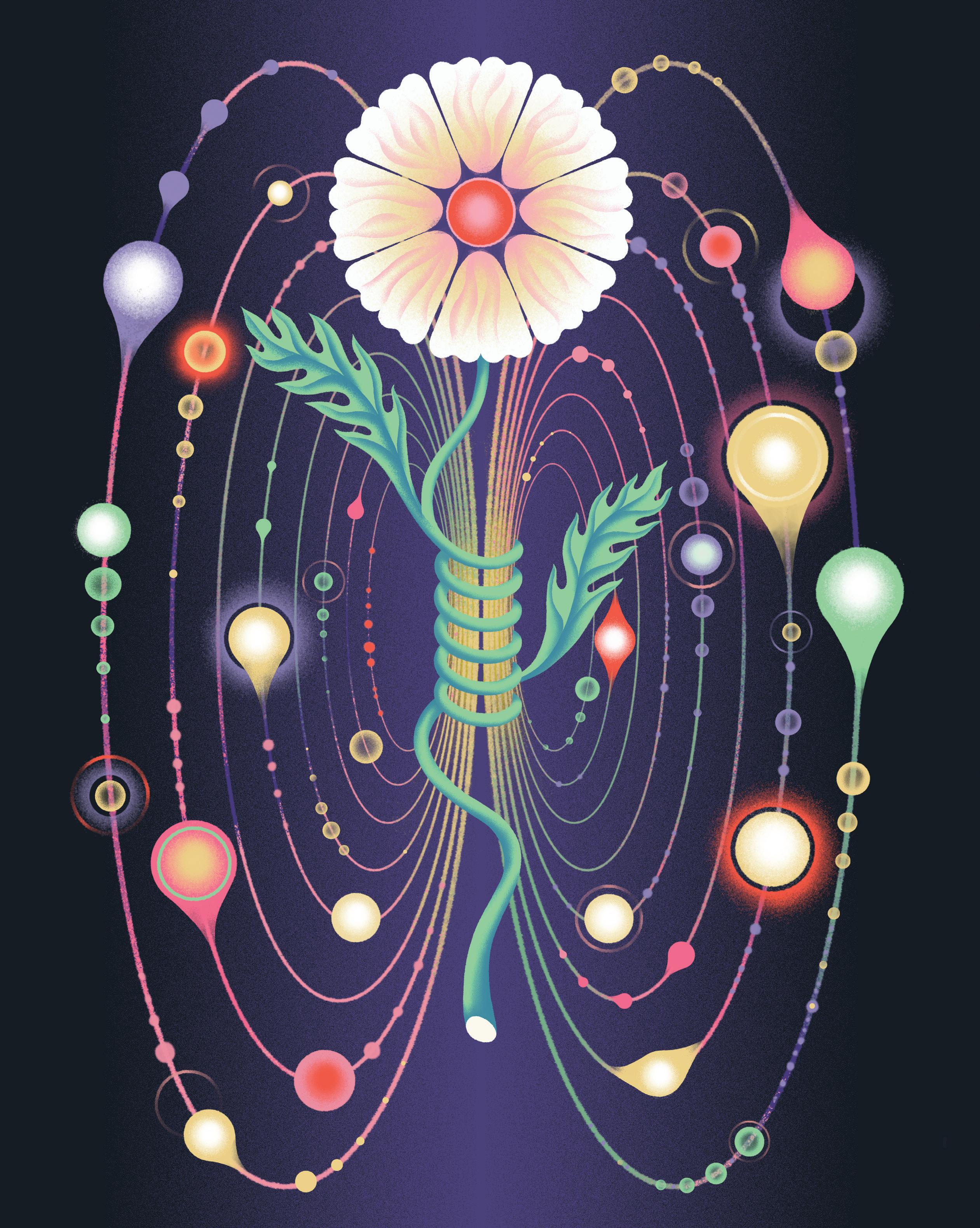













The Physics of Us










Physicists are studying how living matter works, and find that it breaks the standard rules and produces fascinating new phenomena.
By Susan Ahlborn | Illustrations by Marina Muun
The James Webb telescope is showing us our universe in vibrant new detail. Some physicists, though, are looking in another direction: at us and other living matter here on Earth, from the cilia in lungs to the vasculature in leaves to the neurons in brains. What they’re finding is equally marvelous, and it’s challenging some of the current understanding of physics.

How can an intelligent system arise from the collective dynamics of its basic components?
Ultimately, they’re working to discover the rules that govern how matter lives and evolves, and their research may lead to better medicine, robotics based on biology, and an expanded understanding of the physical and biological world.

“We’re using physics principles to understand life and living matter,” says Eleni Katifori, Associate Professor of Physics and Astronomy, who studies vasculature in plants and animals. “But we are also using living matter as an inspiration to discover new physics, for asking the right questions or new questions.”
“Biology has already invented a lot of things. Living matter, from bacteria to leaves to humans, works in ways that physicists don’t understand, much less can duplicate,” adds Arnold Mathijssen, Assistant Professor of Physics and Astronomy. His goal is to unravel the physics of pathogens, design biomedical materials, and understand the collective functionality of living systems out of equilibrium. “It’s fundamental research. For example, how can an intelligent system arise from the collective dynamics of its basic components? It’s also directly relevant to our society, as in, what is the probability of SARS-CoV-2 transmission within a food supply chain?”
Leading the Way
The study of biophysics is not new; Luigi and Lucia Galvani were already investigating animal electricity in the late 1700s. In the last 20 years, though, technological advances have allowed researchers to see microscopic phenomena in living tissue with unprecedented detail, record simultaneously from thousands of neurons, and even track the large-scale behavior of ecosystems. All of these new methods produce vast amounts of quantitative data from which we can infer the laws of living matter. But it wasn’t until 2022 that the National Academies of Science, Engineering, and Medicine recognized biological physics as a separate field.
Penn Arts & Sciences physicists have been studying living matter for decades, bringing Penn to the front of this area. Philip Nelson, Professor of Physics and Astronomy, wrote key books in the field, starting with Biological Physics: Energy, Information, Life in 2014. He’s been honored with the Emily Gray Award of the Biophysical Society for his “far-reaching and significant contributions.” Arjun Yodh, James M. Skinner Professor of Science, has received the Michael S. Feld Biophotonics Award of the Optical Society of America for his pioneering work in demonstrating and clinically translating biomedical optics. A.T. Charlie Johnson, Rebecca W. Bushnell Professor of Physics and Astronomy, is using biological molecules as chemical recognition elements in disease diagnosis, security, and environmental monitoring. Marija Drndic, Fay R. and Eugene L. Langberg Professor of Physics, explores mesoscopic and nanoscale structures, including the detection and analysis of DNA and microRNA.
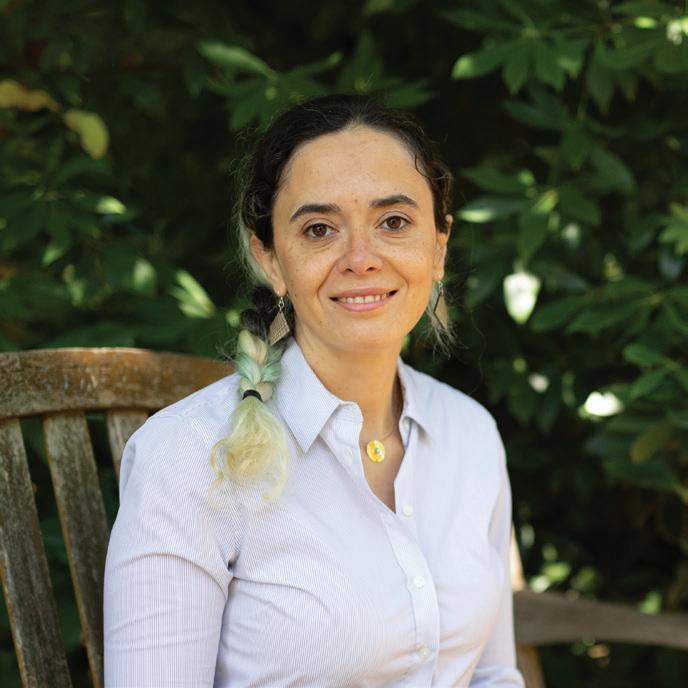

In 2021, Penn Arts & Sciences and Penn Engineering made a unique investment in this interdisciplinary study with the new Center for Soft and Living Matter. Led by Director Andrea J. Liu, Hepburn Professor of Physics, and Associate Director Douglas J. Durian, Mary Amanda Wood Professor of Physics and Astronomy, the center brings together more than 60 faculty from the two schools. And Penn’s Computational Neuroscience Initiative, cofounded by Vijay Balasubramanian, Cathy and Marc Lasry Professor of Physics and Astronomy, involves researchers from Arts & Sciences, the Perelman School of Medicine, and Engineering.
“If you look at a different scale or regime, new phenomena always pop up,” says Balasubramanian, a theoretical physicist who also holds a secondary appointment in neuroscience in the Perelman School of Medicine. “It’s the interactions between the components of living systems that make them so interesting, unlike, for example simple gases in a room. The brain contains a hundred billion interacting neurons. Molecules can talk to the whole organism, pheromones can change the behavior of entire colonies of organisms, stress can change gene expression. So, living systems interact across scales of organization unlike most physical systems that we are used to.”
What Is Living?
Physicists don’t all agree on how to define living matter, but Balasubramanian gives it three characteristics: It is complex, it adapts according to circumstances, and it often acts as if it has a purpose like staying alive or reproducing.
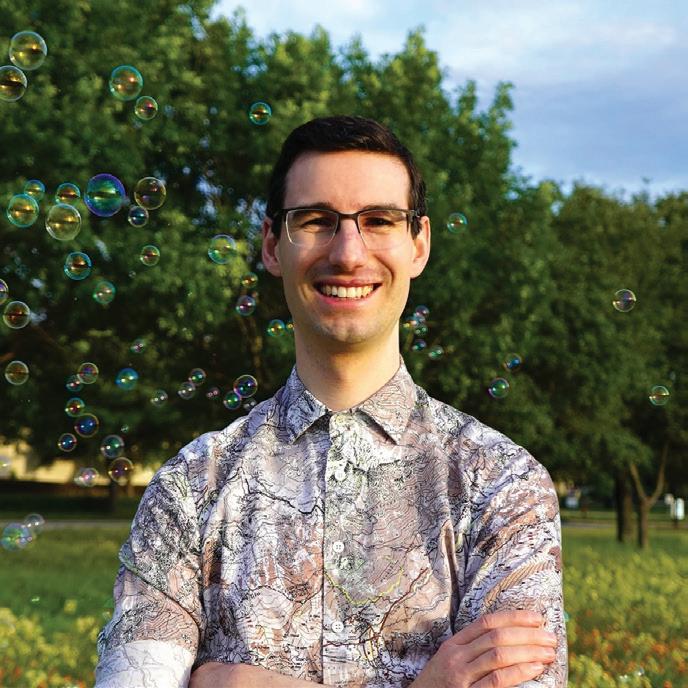
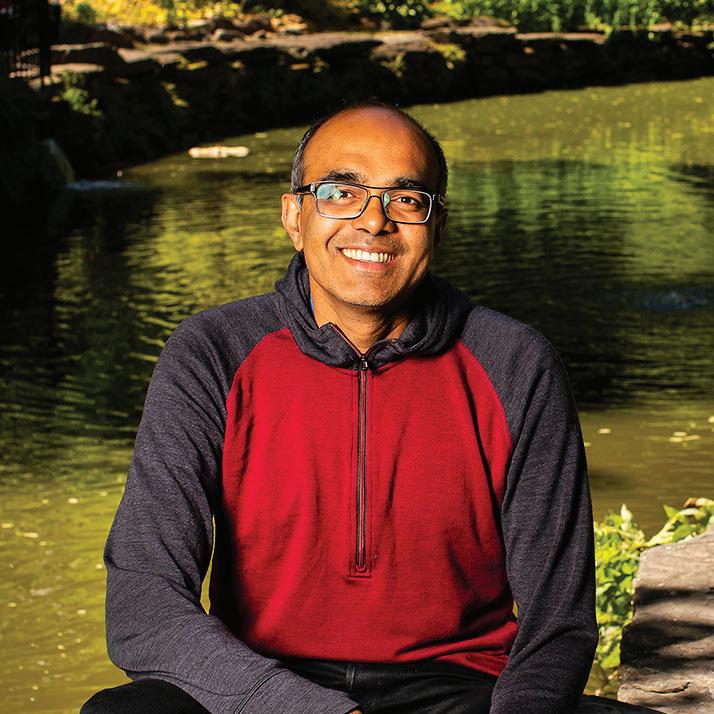
Eleni Katifori, Associate Professor of Physics and Astronomy; Arnold Mathijssen, Assistant Professor of Physics and Astronomy; Vijay Balasubramanian, Cathy and Marc Lasry Professor of Physics and Astronomy
(L-R) Brooke Sietinsons; Wanying Wang; Eric Sucar, University Communications

It is also unique because its components work together is such complicated ways. “A single molecule, you cannot really call alive,” says Mathijssen. “But when you put a bunch of enzymes and proteins and molecular motors in a membrane and we call that a cell, then suddenly these things have shared functions and they will cooperate with each other in such a way that we call that living.”
We know very little about how to deal with systems that interact to produce a collective effect across a range of scales from genes to ecosystems, and that are exceedingly complex with many different interacting parts. Molecules work together to form organelles and cells; cells form tissues, and tissues give rise to organs and eventually organisms. “And even these organisms will work together, like bird flocks to confuse predators,” says Mathijssen, who was named one of Scientific American’s 30 Under 30 in 2012 and received the Charles Kittel Award from the American Physical Society in 2019.
“This notion of cooperativity and shared functionality is something that, in physics, we don’t know how to explain. But that’s exactly what we try to do in physics, to find rules of universality, to see if a school of fish behaves the same as a school of bacteria.”
Inspiration for this work is everywhere; one of Mathijssen’s projects grew out of a conference dinner at the Georgia Aquarium. “We were looking at this school of fish, and there were these little particles in between them, and we were really just curious,” he says. “Does the school push these particles forward, or are the tails of the fish pushing the particles back instead?”
How materials are transported in a group is a question of survival for microbes like bacteria, which run out of food and oxygen quickly because they live in very high concentrations. “So, it can be curiosity, but then you think, hey, wait, this is actually not just applicable to this one aquarium, but it ranges across a set of questions in microbiology,” says Mathijssen.
“But then also maybe you can use this in microrobotics. Because if you want to deliver drugs, then you can also use this to move things from A to B.”
Mathijssen studied particle physics in college but began working on biophysics while earning his doctorate, “because life itself fascinates me.” He and his lab move back and forth between microorganisms and microrobotics, collaborating with researchers in Penn Engineering and the Singh Center for Nanotechnology. They’ll sometimes build a device based on a biological finding, and sometimes try to build a model to help figure out a biological function.
“It’s entirely possible to come up with a thought on a Monday, and then by Friday you may already have tested something in the lab,” he says. “This close connection of going back and forth all the time and testing your idea and then maybe changing your theory again, that dialogue is something that really attracted me.”
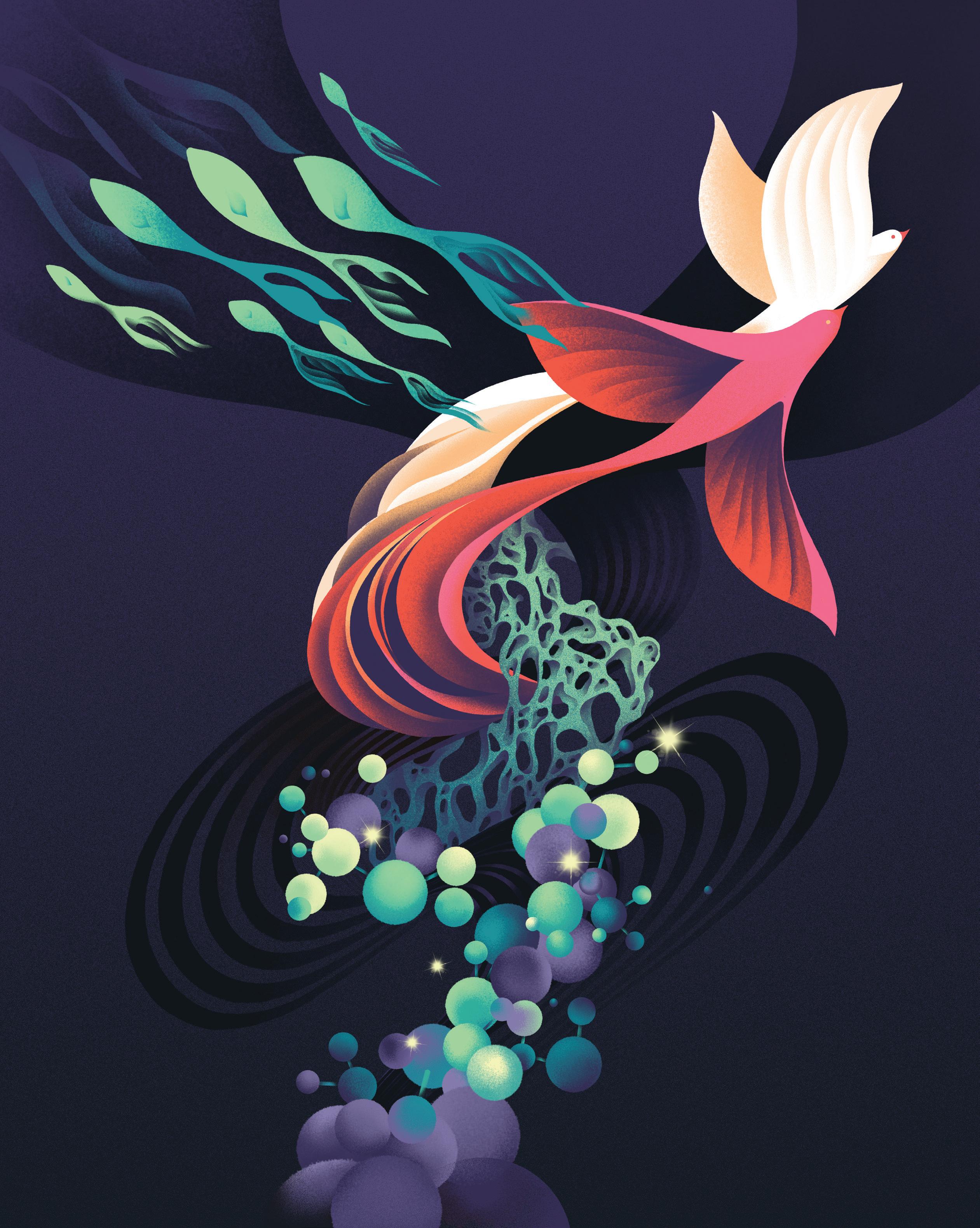
One recent project was based on long filaments, called microtubules, found inside cells. Molecular motors can move along these filaments against a flow. In the past, free-swimming microrobots have been explored as a way to deliver therapeutics within a blood vessel, but these can disperse in the strong flows. Mathijssen and his group made a system using filaments with embedded magnets, which would allow precise delivery and could someday treat blocked blood vessels or cancerous tumors.
The lab’s study of how bacteria move in and are cleared out of the lungs, inspired by the COVID-19 pandemic, led them to build another device: tiny magnetic beating hairs that pump liquid, emulating the cilia that are the main driving force behind mucus clearance in lungs. They’re trying to learn if there is a connection between the alignment of the cells and the efficiency of bacterial clearance, something that links to conditions like cystic fibrosis.
The Math of Life
Eleni Katifori also studies flows in the context of understanding the topology and architecture of vascular networks, whether it’s the xylem and phloem in leaves and plants, or the arterial, venous, or lymphatic system in animals.
“Everything that is larger than, let’s say, a millimeter has to have some sort of vascular system. We can’t have life without it,” she says. “And yet there is still so much we don’t understand. I get up in the morning, I brush my teeth, go to work, and the whole system seems to work. So, this idea that something that is very everyday is still so mysterious is quite intriguing to me.”
Katifori became “enamored with plants” while earning her Ph.D., and began working on biological flow networks in plant leaves during a postdoctoral appointment. Then she realized that for dynamics, animal vasculature was more interesting
mathematically. She received an NSF Career Award—the National Science Foundation’s most prestigious award in support of early-career faculty— in 2016, and was named a Simons Investigator in the Mathematical Modeling of Living Systems in 2018. She and her lab are seeking to uncover the physical principles behind how these complex networks build themselves and what functions they’re optimizing through evolution.

You have to talk about everything from the whole colony down to the individual neurons.

The vasculature in our bodies is not entirely genetically directed, she says, but instead self-organizes according to a set of equations she’s trying to discover. “We are asking, is this consistent with optimizing efficiency? Is this consistent with optimizing robustness? And if it’s not, what constraints came in the way? Maybe the absolutely optimal architecture would look different, but this biology cannot build that version.”
Ultimately, she wants to be able to predict how the vasculature will form—or malform, like when an artery narrows, or how a vessel will change downstream from a blockage. “If I put in what I’m trying to optimize and what my constraints and costs are, basically, I crank the machine and I get some principles,” she says. “This is what makes it very exciting for me, just discovering what kind of math biology is using to solve a particular problem.”
Katifori says her biggest challenge is deciding what to leave out. “There is a tremendous amount of stuff going on inside the vessel. It’s not just water flowing through a pipe.” Vessel walls are elastic and every time the heart beats, a pulse is transmitted to the rest of the body, something she believes impacts how the network builds itself.
There are also different kinds of cells interacting with each other inside the fluid, and the potential for coagulation. “It’s a living thing. So, figuring out which of that information is relevant is something I struggle with.”
Seeing Life in Action
Along with faster computers and machine learning, new technological tools for biophysics include ways to record and analyze neurons, or to genetically modify them to fire under laser light or to glow when they fire. DNA and nanostructures can be manipulated. Cameras can take hundreds of images per second, and there are new ways to bring light to microscopes which allow researchers to study living systems.
Technology is allowing Balasubramanian to go to the birds—he’s collaborating with Marc Schmidt, Professor of Biology; and Kostas Daniilidis, Ruth Yalum Stone Professor of Computer and Information Science at the School of Engineering, to study how cowbirds pair bond at Schmidt’s aviary at the Pennovation Center. “At the beginning of the season, you have 10 males and 10 females. You introduce them into the aviary,” Balasubramanian says. “The males sing. The females evaluate them: Is that a good song, is that not a good song? And they decide whose song is better.” The cowbirds use this information to form a social hierarchy that guides their interactions. By the end of the season, they’re mostly pair bonded, and the success of these bonds affects the success of the egg laying. The process is a little reminiscent of high school, complete with cliques and bullying if we anthropomorphize the behavior, but it has serious implications for the long-term success of the flock.
Previously, to analyze the birds’ behavior, researchers would need to sit outside an aviary and make notes on what they saw and heard. Now they’re close

to getting a 24/7 recording of all of the birds’ poses and songs, and automating the analysis of the data. “It’s a complex system, and it crosses scales,” says Balasubramanian. “You have to talk about everything from the whole colony down to the individual neurons. It takes neuroscientists, physicists, and engineers all working together to do this kind of thing. This is not the kind of collaboration you could have envisioned 20 years ago.”
Balasubramanian talked his way out of every biology course after sixth grade, arguing he wouldn’t need it. In college he earned degrees in physics and computer science, then an M.S. in computer science, with the goal of understanding information processing, including by the brain, the computer inside our heads. He then realized that the engineering approach wasn’t answering the questions he had, and switched to physics for his Ph.D. An advisor suggested that he might be interested in systems neuroscience as a field, and he began working more and more with biologists. Now his research focuses on how natural systems manipulate and process information to produce new forms of self-organization.
Balasubramanian, a Fellow of the American Physical Society, has worked on neural systems that are involved in the senses of sight, hearing, and smell; control of the body; spatial navigation; and decision-making. Recently, he realized that some ideas on molecular sensing in his work on olfaction (the sense of smell) could also be used to understand aspects of adaptive immune systems in vertebrates and bacteria. For example, his work with postdoctoral fellows Hanrong Chen, now at the Genome Institute
of Singapore, and Andreas Mayer, now at University College London, led to a paper identifying a new scaling law for immune memory in the CRISPR-based system used by bacteria to defend against recurrent viruses.
A Team Effort
The collaboration available at Penn, with all its schools on a single campus, is vital to the study of living matter. “You get to talk to people that have a very different view about things and very different backgrounds than you,” says Katifori.
She is working with researchers who have been able to digitize the vessels in the brain, from capillaries to arteries. This lets her see data and use machine learning to examine, for example, statistical differences between different areas, or how disease affects the vasculature. “We know that Alzheimer’s, for example, correlates with microvascular phenotypes in the diseased brain,” she says. “I’m not claiming this is the reason for Alzheimer’s, but there’s definitely a lot going on that we don’t understand. And these types of techniques to image the micro-vasculature will be revolutionary for understanding flow, for understanding the biology, but also for disease.”
“I’ve been working on hydrodynamics for maybe two or three years, and I had never seen the bacteria under the microscope,” says Mathijssen. “And you realize for the first time you look through those goggles that, wow, this is somewhat what I expected, but there are really different things going on as well.
And you need the right people to come together for that, and the right facilities and tools. The Singh Center for Nanotechnology is unparalleled when it comes to the nanofabrication techniques that they can do here.”

Biology found a similar solution to the same physical problem, transport, using very different tools, very different biology.

There are challenges to collaboration in that researchers from different areas need to learn each other’s lingo. “You have to pick these things up by working with somebody, or reading enough papers,” says Balasubramanian. “And you learn how to talk to each other.”
There is also often a degree of luck in finding a pathway to biophysics during graduate school and after. Mathijssen believes that Ph.D. programs should try to give students that training to bring fields together and help them get out of silos, “but that’s often easier said than done. And so, the risk is then that you could get stuck in your own area because you don’t understand what someone else is doing.”
The Big Picture
Balasubramanian has long theorized about William of Occam’s “razor,” which states that causes should not be multiplied beyond necessity. Scientists now use it as a rule of thumb that says when you don’t have much data, a simple explanation is better than a more complicated one. He’s working on a paper with former postdoc Philip Fleig, now at a Max Planck institute in Germany, in which they argue that systems making decisions with limited information—for example, bacterial colonies deciding which
phenotype to express—do better by implicitly using simpler models of the world.
Beyond bacteria, Balasubramanian says that data are showing that both humans and machine learning systems working with limited information implicitly implement a tendency toward simplicity. “Probability theory says to prefer simple explanations when you don’t have much data. And these two learning systems, the human brain and deep learning networks, seem to learn such biases against complexity without being told that they should. I think these common features of learning in animals and machines are very exciting.”
Looking ahead, he says, “Anything involving the theory of learning directly affects the question of what kind of learning engines can be built, what can they learn, and why they learn. Understandings of how the brain works always have potential applications, in medicine as well as in things like building neuro-prosthetics. You could build a replacement retina, if you knew how it worked. You could also put in a robot.”

The study of living matter suggests nearly endless avenues of usefulness. Understanding immune systems would have applications from making yogurt by helping the relevant bacteria to better survive bacteriophage
attacks to designing vaccines to help defend humans against seasonal viruses. We could develop materials that heal themselves or learn, or even an item that can become a different toy depending on what a child wants.
Katifori also sees universality in her work. “You look at vasculature in these wildly different organisms with entirely different genes that evolved completely independently, in a plant leaf and in our bodies. And yet you see the same core principles emerging. And that is very, very exciting. Biology found a similar solution to the same physical problem, transport, using very different tools, very different biology. The physical truth is the same.”
“We don’t know how to describe, for example, what is the temperature of an active system,” says Mathijssen. “It does not follow the same laws of physics. And we don’t know what those new laws of physics could be, and so that’s why we try to come up with the simplest possible models to remove all the redundancies and really just think of the essence of the material and see if we can write down equations. And I think the field is now in a state where we don’t know whether this would work.”
He compares it to the beginning of quantum mechanics. “Now we are in a similar state, but we try a lot of different things and maybe we can solve small systems first and then see how it generalizes. In science, by definition, you head into the unknown. But what we do know is that there is progress every day, and there are really good new theories being developed in this field,” like equations that explain how the motion of individual birds in a flock affects the motion of neighboring birds. “And I think that’s why it’s so exciting to work in this field, because it is now really coming together.”








Ordinary Lives, Extraordinary Times


A fateful trip to Eastern Europe in 1989 inspired Kristen Ghodsee, Professor and Chair of Russian and East European Studies, to pursue a career studying the impact of the Cold War and its aftermath on the lives of ordinary people.



By Duyen Nguyen
Illustrations by Mariya Pilipenko











Kristen Ghodsee collects Cold War-era typewriters. Some in her collection are even older, dating back to the 1920s. The majority were manufactured in the former socialist countries of Eastern Europe. Over the summer, while completing a fellowship at the Freiburg Institute for Advanced Studies (FRIAS) in Germany, she added three more to her collection.




“Each typewriter tells a unique story,” says Ghodsee, Professor of Russian and East European Studies. In a recent talk titled “Cold War Keys: The Curious Lives of East European Typewriters,” she explained how the machines— once strictly regulated in many parts of the region—shed light on the lived experiences of socialism and post-socialism. A Marista 11 model that she found at a flea market in Sofia, Bulgaria, for instance, invokes bitter memories of the corrupt privatization and liquidation of the country’s onceflourishing typewriter industry.
Ghodsee, who was recently appointed Department Chair of Russian and East European Studies, is a prolific author for both academic and general audiences. She also harnesses other media, like podcasting. Her newest book, Red Valkyries: Feminist Lessons From Five Revolutionary Women, focuses on the lives of five socialist women and their legacy for modern-day feminists, including one from Ukraine—a region which Ghodsee has been reflecting upon of late, given current events.














An award-winning ethnographer, Ghodsee is also interested in the stories that people tell— particularly those of ordinary people living in Eastern Europe during the region’s transition from state socialism to capitalism in the late 1980s and early 1990s. Ghodsee joined Penn in 2017. She was previously a professor at Bowdoin College, where she directed the gender, sexuality, and women’s studies program. Throughout her career, she

















has sought to understand from Eastern Europeans themselves how the end of the Cold War changed their lives. Much of her research involves fieldwork, specifically in the Balkans and the former German Democratic Republic, where she has lived for months at a time, meeting with locals and learning about the countries’ social, cultural, and political histories. For her first book, The Red Riviera: Gender, Tourism and Postsocialism on the Black Sea, an ethnography of women working in Bulgaria’s popular sea and ski resorts, Ghodsee spent 18 months living in Bulgaria, conducting survey research, and interviewing the women she met, including a waitress, a tour operator, and a travel agent. The book was published in 2005. Ghodsee began this fieldwork as a doctoral candidate in social and cultural studies at UC Berkeley, but the origins of her interest in Eastern Europe date further back—to the summer of 1989.
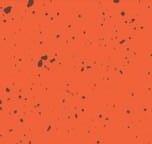




A Fateful Trip
That year, Ghodsee, who’d just completed her freshman year at UC Santa Cruz, decided to drop out of college. Convinced that the Cold War would eventually escalate to a point that would make any travel impossible, she bought a one-way ticket to Spain.
But on November 9, only a few months after she’d arrived in Europe, the Berlin Wall came down, marking the end of the decades-long geopolitical conflict. The timing, Ghodsee says, seemed serendipitous. She began making her way to Germany, eager to witness and take part in the hope and exuberance spreading across the region. Setting off from Turkey, Ghodsee traveled through Bulgaria, former Yugoslavia, Romania, Hungary, and former Czechoslovakia, before finding herself on Alexanderplatz, the plaza in East Berlin where nearly a million people had recently gathered to demonstrate for political reforms. Ghodsee was there with thousands of revelers in the summer of 1990 when East and West Germany unified their currencies.
“It was huge—to be there and to feel the possibility of what the world was going to be like,” Ghodsee remembers, describing the experience as a turning point in her life.
Though she didn’t yet know it at the time, the trip would also go on to shape her career in profound ways. “I did not at all in any way have a traditional path into academia,” Ghodsee says, explaining that, after she returned to UC Santa Cruz the following year, she’d had no clear plans except to pursue opportunities that would allow her to continue engaging with the world. She studied abroad at the University of Legon in Accra, Ghana, during her junior year and spent three years teaching English in Japan after completing her undergraduate studies in creative writing and theater arts. While she’d been interested in political and economic issues since high school, describing herself as “a model United Nations dork,” Ghodsee says that she applied to graduate school on a lark.

A Prolific Career
To date, Ghodsee has held residential research fellowships at several institutions, including FRIAS; the Woodrow Wilson International Center for Scholars; the Institute for Advanced Study in Princeton, New Jersey; the Radcliffe Institute for Advanced Study at Harvard University; the Imre Kertész Kolleg at the FriedrichSchiller-Universität in Jena, Germany; the Max Planck Institute for Demographic Research in Rostock, Germany; and the Aleksanteri Institute of the University of Helsinki in Finland. Back in 2012, she won a John Simon Guggenheim Fellowship for her work in Anthropology and Cultural Studies, and she was an invited professor at Sciences Po in Paris, France, in 2021.
Ghodsee is the author of 11 books, eight of which are academic explorations of the lives of ordinary people, especially women, in the former Eastern Bloc both under socialism and in the aftermath of the Cold War. Her most recent book, Red Valkyries, which was mentioned in the New York Times Book Review, profiles five socialist women who were prominent activists in the 19th and 20th centuries but whose stories are lesser-known than those of their male compatriots. The book
reflects another focus of Ghodsee’s work: the forgotten stories of “people who have these incredible moments of meaning and profundity in their lives and actually end up changing the world.”
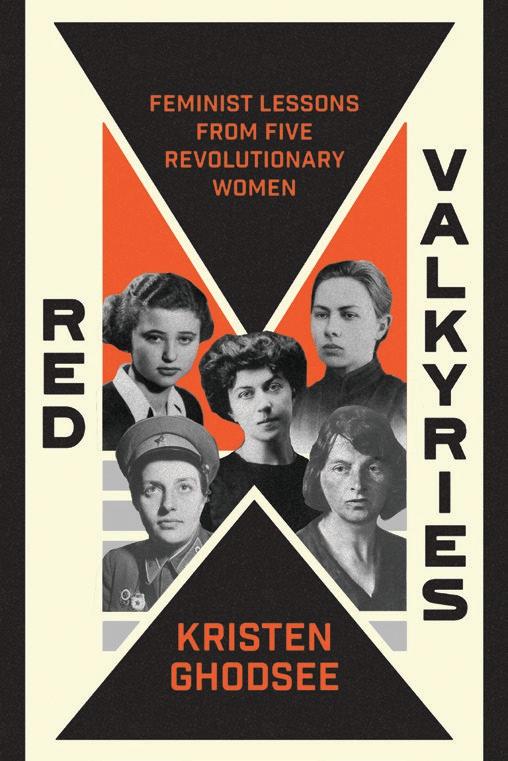
Kristen
In the summer of 1990, Ghodsee joined revelers in Berlin when East and West Germany united their currencies.
(L) Kristen Ghodsee, Professor and Chair of Russian and East European Studies
Courtesy of Kristen Ghodsee
Red Valkyries: Feminist Lessons From Five Revolutionary Women
By
Ghodsee Professor and Chair of Russian and East European Studies

Lyudmila Pavlichenko, a Ukrainianborn sniper whose 309 confirmed kills in World War II makes her the most successful female sniper in history, is one of these extraordinary figures. “Ukraine has a long history of women in the army,” says Ghodsee, who writes about Pavlichenko’s resistance of traditional women’s roles in Red Valkyries
The implications of this history are visible today as the ongoing war between Russia and Ukraine continues to disrupt the lives of millions of Ukrainians. “Legislation adopted in 2018 gave Ukrainian women the same legal status as men in the armed forces, and today there are over 50,000 women serving in the armed forces,” in both combatant and non-combatant roles, Ghodsee explains. Since the war began on February 24, 2022, many women have remained in or returned to the country to fight against Russian forces. While in residence at FRIAS this summer, Ghodsee met a psychologist from Ukraine who counseled soldiers at the frontlines of the war via Zoom. “She said that many women are more committed
fighters than the young men who were draftees and forced to fight. The women who volunteered are well-trained and deeply committed to the defense of their homeland,” Ghodsee recalls.
The Diversity of Human Experiences
While at UC Berkeley, Ghodsee received a Fulbright grant to conduct fieldwork that would shape the focus of her own interest in Eastern Europe.
“I always knew I wanted to go back—it was just a question of which country,” Ghodsee says. Several factors tipped her in the direction of Bulgaria. At the time, few scholars in the field were focusing their studies on Bulgaria, let alone its tourism industry, the subject of Ghodsee’s dissertation and subsequently her first book, Red Riviera. Because of her own mixed heritage—half Puerto Rican and half Persian—she’d initially considered a transatlantic comparison of Bulgaria’s
and Cuba’s tourism industries. But the complications of working around U.S. sanctions against Cuba meant that she would’ve had to shift her research method away from ethnography—the immersive approach to studying a culture or society that would eventually become indispensable to her academic pursuits.
“Ethnography was the motivating thing for me,” Ghodsee remembers. In 2016, she published From Notes to Narrative: Writing Ethnographies that Everyone Can Read, a guide to writing accessible ethnographic texts.
Ghodsee’s first exposure to ethnography came in graduate school, where she learned the importance of fieldwork. In order to fully understand and write about a people’s way of life, “You’ve got to live with those people, speak the language, you have to fully immerse yourself in that culture,” Ghodsee explains. At UC Berkeley, with the fall of the Berlin Wall still fresh in her mind, Ghodsee took a class on the anthropology of Eastern Europe with Alexei Yurchak. “That class, combined with the methods classes I had with these
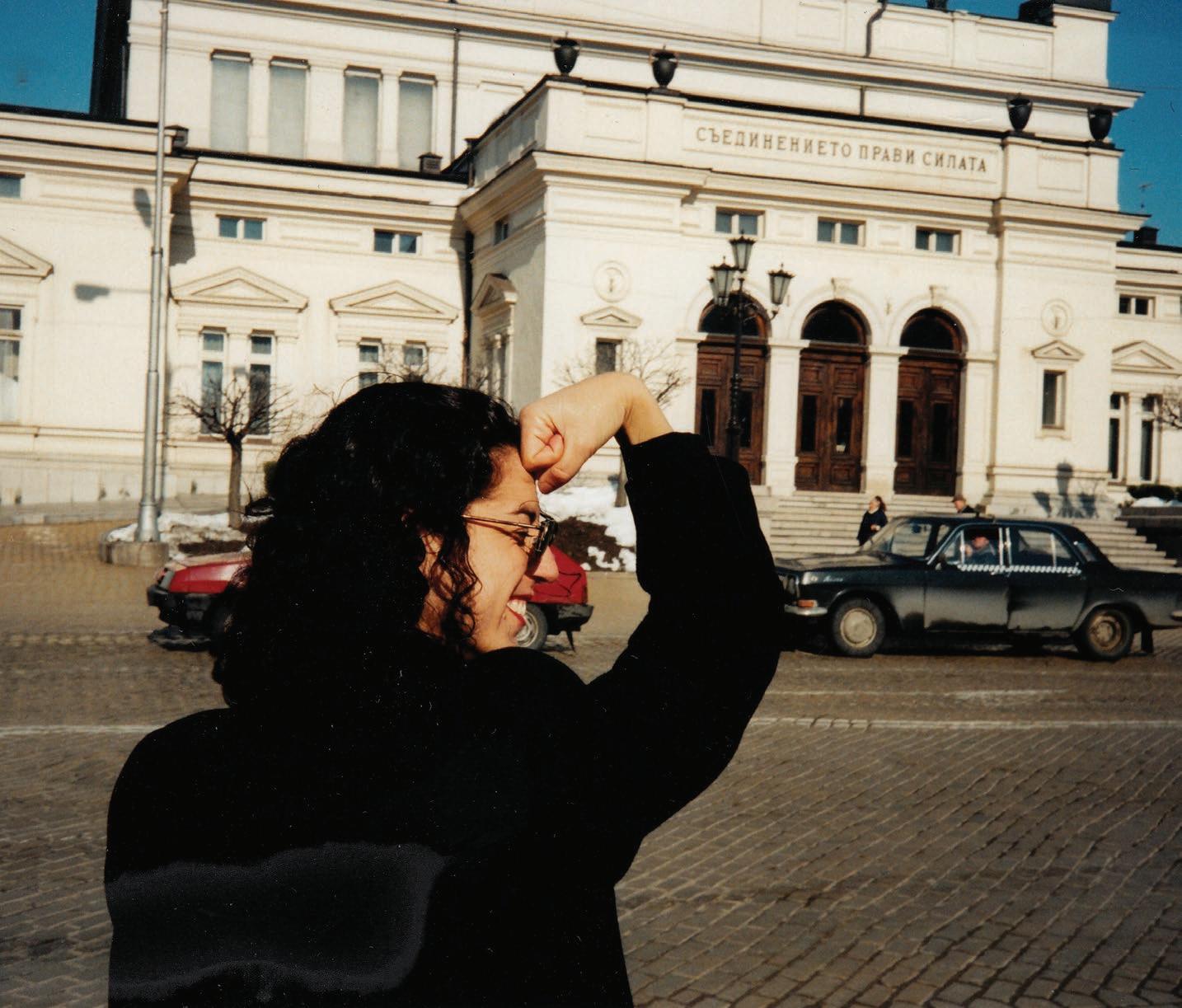
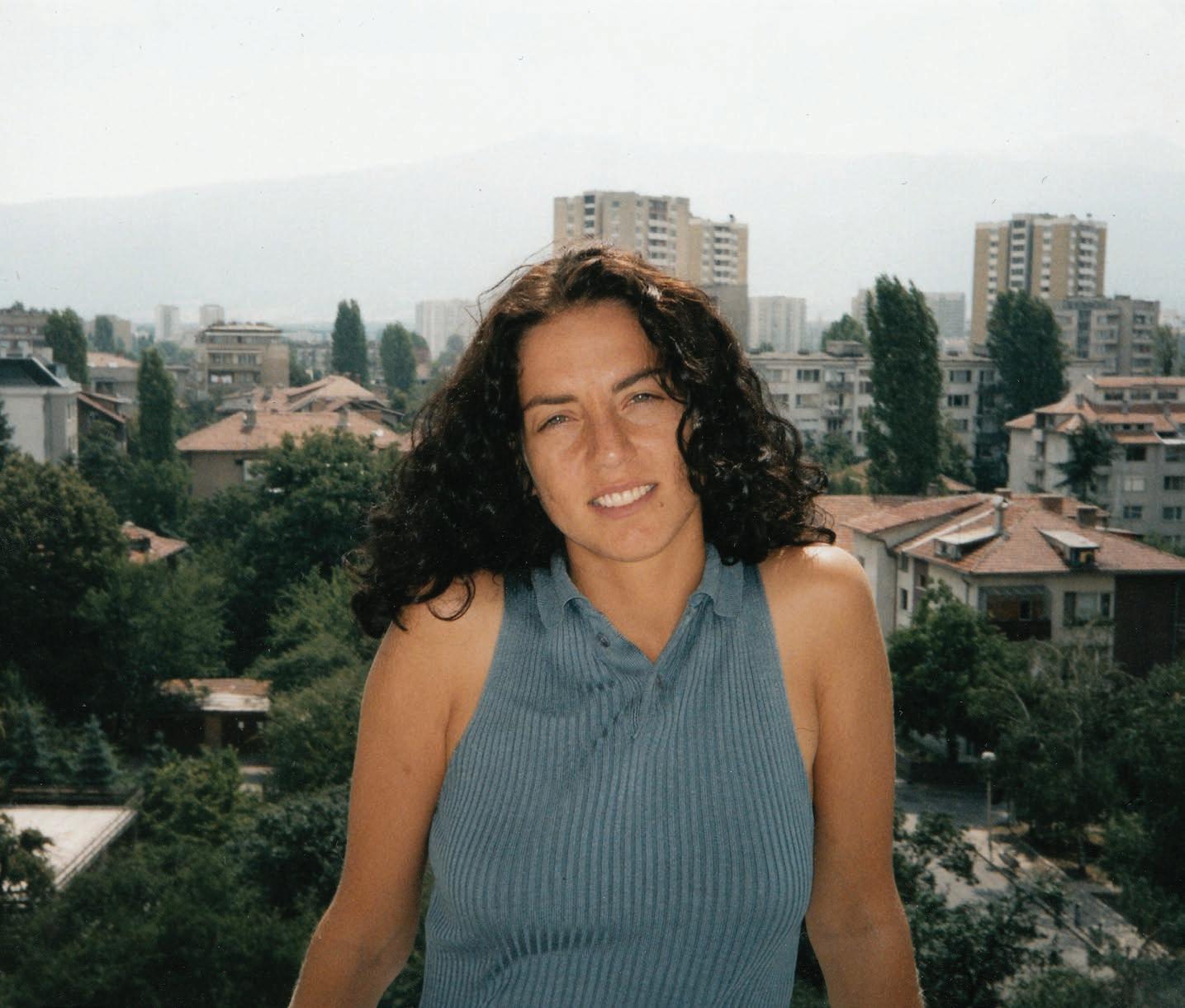
two powerhouse female anthropologists, Carol Stack and Jean Lave, really shifted me in that direction,” she says, explaining her motivations to return to the region in 1998.
In order to
fully
understand and write about a people’s way of life, you’ve got to live with those people, speak the language, you have to fully immerse yourself in that culture.

For Ghodsee, the greatest draw of ethnography is that it “helps us get in touch with the diversity of human experiences in a way that is deeper and more profound.” Ethnography captures and preserves different peoples’ ways of life, Ghodsee explains, fighting against what anthropologist Wade Davis calls “ethnocide,” or the gradual loss of human cultures and societies. Her second book, Muslim Lives in Eastern Europe: Gender, Ethnicity, and the Transformation of Islam in Postsocialist Bulgaria, which came out in 2010, follows the Pomaks, a group of Slavic Muslims in Southern Bulgaria, and explores how the community’s gender relations shifted in the aftermath of the Cold War. The book won numerous awards, including the 2011 William A. Douglass Prize in Europeanist Anthropology and the 2011 Harvard Davis Center Book Prize in Political and Social Studies. Today, Ghodsee is a member of the Graduate Groups in Anthropology, Comparative Literature, and the Lauder Institute for Management and International Studies, and advises a wide variety of Ph.D. students doing work in or on Eastern Europe.



(Top to bottom) Ghodsee stands in front of the Bulgarian Parliament in 1998. An award-winning ethnographer, Ghodsee’s research involves extensive fieldwork; Ghodsee in Sofia, Bulgaria in 1999. For her first book, The Red Riviera: Gender, Tourism and Postsocialism on the Black Sea, Ghodsee spent 18 months living in Bulgaria, interviewing the women she met and conducting survey research.
Courtesy of Kristen Ghodsee








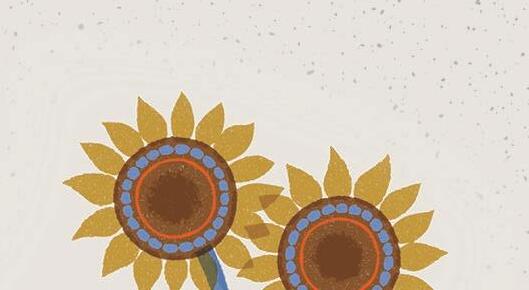
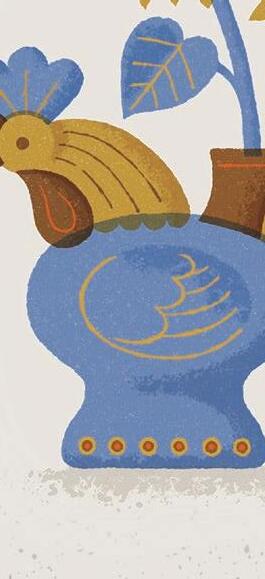





In July, Kristen Ghodsee was appointed Department Chair of Russian and East European Studies. She reflects on the department’s future, particularly in light of the surge in interest in Eastern Europe brought on by the war between Russia and Ukraine: “I am really interested in creating more content that looks at the culture, history, and society of different East European nations, including Ukraine,” she says. “I think there’s a real hunger for knowledge about this part of the world and, as chair, I’m hoping that we can maintain our program but also build in some new components to the major.”



The department is currently in the process of bringing in a Ukrainian Fulbright scholar, as well as three doctoral candidates from Ukraine whose studies have been disrupted by the war. Ghodsee says that she hopes there will be more opportunities, especially in Western media, for scholars from the country to share their own stories.



Extraordinary Lessons
In her fieldwork, Ghodsee’s path has often crossed with those whose untold stories turn out to offer extraordinary lessons. In The Left Side of History: World War II and the Unfulfilled Promise of Communism in Eastern Europe, which was published in 2015, she tells the stories of two people whose socialist ideals inspired them to fight against Bulgaria’s Nazi-allied monarchy during World War II: British officer Frank Thompson, whose story Ghodsee initially heard from the late physicist Freeman Dyson, and 14-year-old Elena Lagadinova, the youngest female member of Bulgaria’s armed anti-fascist resistance.

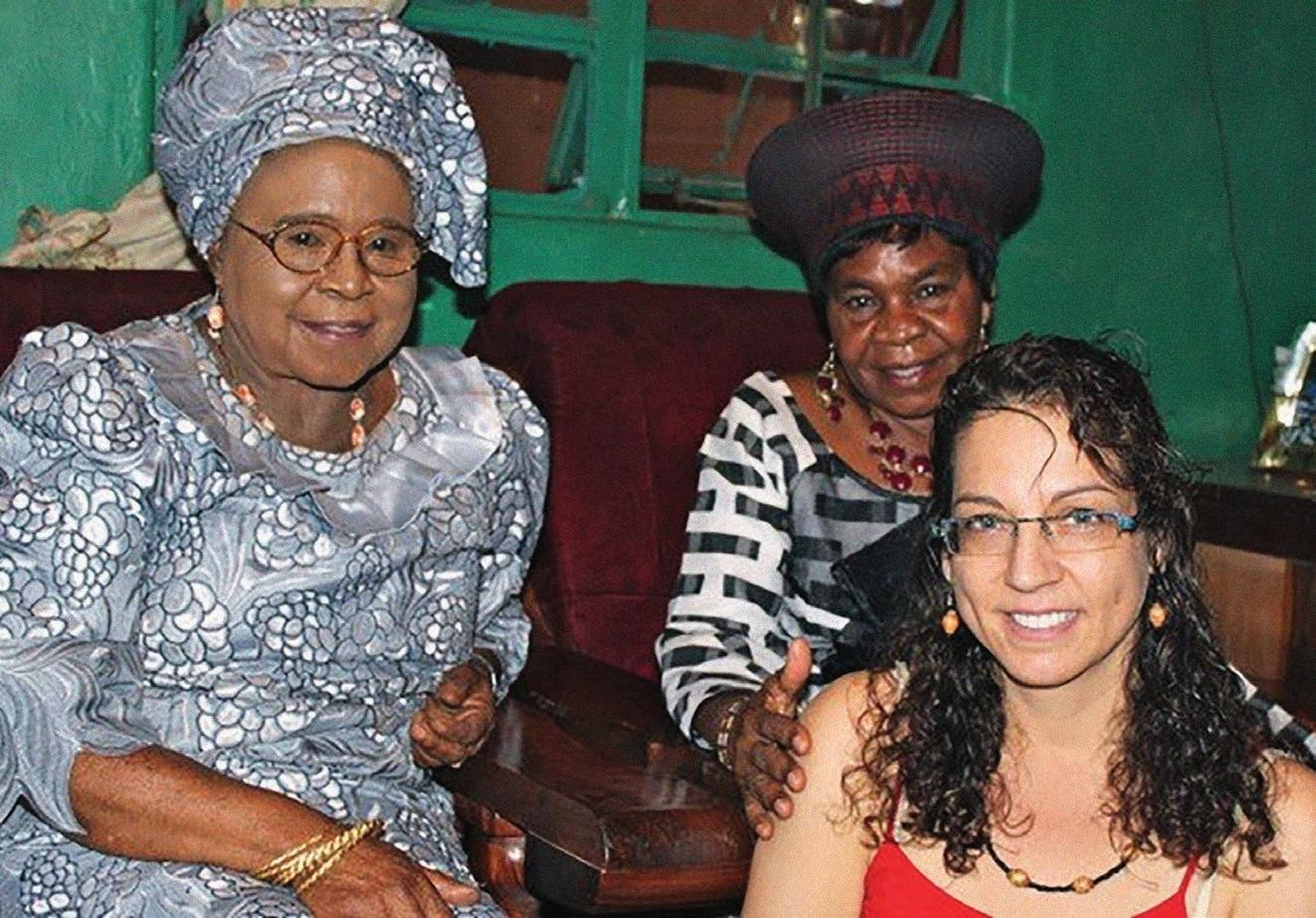
Courtesy of Kristen Ghodsee
(Top to bottom) Ghodsee with Elena Lagadinova in 2013. Lagadinova, who passed away in 2017, is one of the five women profiled in Ghodsee’s new book, Red Valkyries: Feminist Lessons from Five Revolutionary Women; For her eighth book, Second World, Second Sex: Socialist Women’s Activism and Global Solidarity During the Cold War, Ghodsee worked with women and archives in Zambia.
Ghodsee first met Lagadinova in 2010, while she was in Bulgaria conducting interviews for what would become her eighth book, Second World, Second Sex: Socialist Women’s Activism and Global Solidarity During the Cold War, which also included research with women and archives in Zambia. Lagadinova, who passed away in 2017, is one of the five subjects of Red Valkyries, along with the Ukrainian sniper Pavlichenko; Alexandra Kollontai, the aristocratic Bolshevik whose works Ghodsee discusses in her podcast A.K. 47; Nadezhda Krupskaya, the wife of Vladimir Lenin and an influential figure in her own right; and Inessa Armand, Lenin and Krupskaya’s close comrade and a talented polyglot.
The greatest draw of ethnography is that it helps us get in touch with the diversity of human experiences in a way that is deeper and more profound.

While working on Second World, Second Sex, Ghodsee also published three other books, including the popular Why Women Have Better Sex Under Socialism: And Other Arguments for Economic Independence, which originally came out in 2018 and has since appeared in 15 international editions and in 14 languages, including those of several former socialist countries in Eastern Europe. Her 2011 book, Professor Mommy: Finding Work/Family Balance in Academia, which Ghodsee co-authored with Rachel Connelly, her colleague at Bowdoin, was inspired by her own experience of navigating the academic job market as a new mother.
Red Valkyries is also a popular book, ending with nine lessons that contemporary audiences can learn from the lives of the book’s revolutionary subjects. The timing of the book’s publication—shortly after the United States Supreme Court overturned Roe v. Wade—throws these
lessons into even sharper relief. “Roe v. Wade shows very clearly that you can change a law, but if you don’t actually change the underlying cultural context or social context within which women gain those rights, then you can just overturn that law, even after 50 years,” Ghodsee says, explaining that the socialist feminists profiled in Red Valkyries fought for social change that doesn’t merely fold women into the prevailing power structure.
Stepping Outside of the Familiar
Like her interest in Eastern Europe, each of Ghodsee’s books has emerged from a confluence of factors: curiosity about the world, conversations with people, and being in the right place at the right time. For instance, her 2021 book Taking Stock of Shock: Social Consequences of the 1989 Revolutions, co-authored with Mitchell Orenstein, Professor and Graduate Chair of Russian and East European Studies, began as a debate in Williams Hall over a blog post.
“I’m the poster girl for ‘unplanniness,’ if that’s a word,” Ghodsee reflects. “The books—to me, the best ones—they emerge organically.”
But what’s consistently defined both her life and career is her willingness to step out of her familiar surroundings and into the everyday lives of others. “I’m constantly pushing myself out of my comfort zone and constantly challenging myself to see the world through a different set of eyes,” she says.
While Ghodsee returns to the physical classroom this fall for the first time since March 2020, her current research on Cold War-era typewriters—part of a work-in-progress on the material culture of communism—will eventually take her back to Eastern Europe, where she’ll track down more typewriters and more people with stories to tell.
Ghodsee pictured with Mitchell Orenstein, Professor and Graduate Chair of Russian and East European Studies, at the multidisciplinary research conference, Social Impacts of Post-Socialist Transition and Policies for the Future.
Alina Yakubova

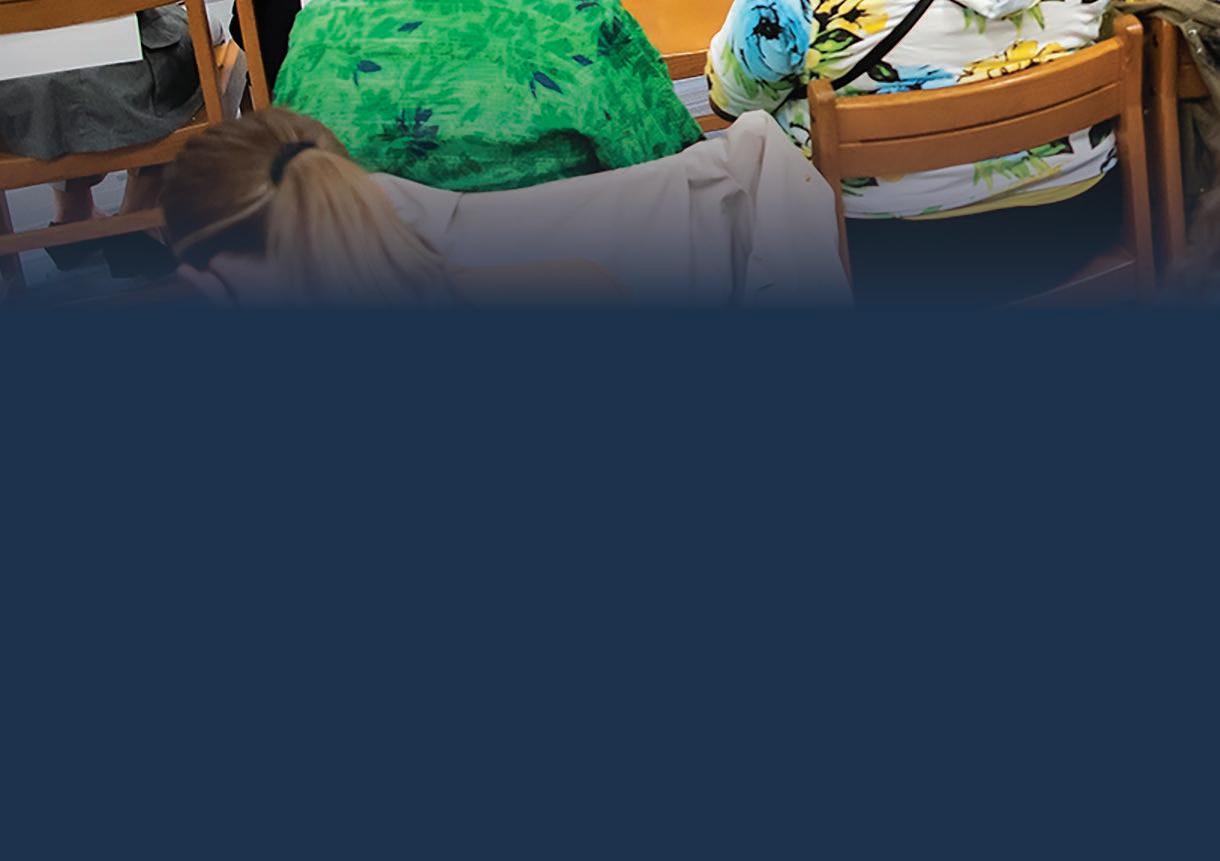
Celebrating the Past—and Planning for the Future
By Susan Ahlborn and Blake Cole
Four programs in the University’s academic community are celebrating anniversaries: Kelly Writers House (KWH), the Center for the Advanced Study of India (CASI) and its counterpart in New Delhi, the University of Pennsylvania Institute for the Advanced Study of India (UPIASI), and the Barbara and Edward Netter Center for Community Partnerships. The combined 110 years of experience, research, education, and collaboration provided by these ground-breaking institutions have had an enormous impact at Penn and in the world.
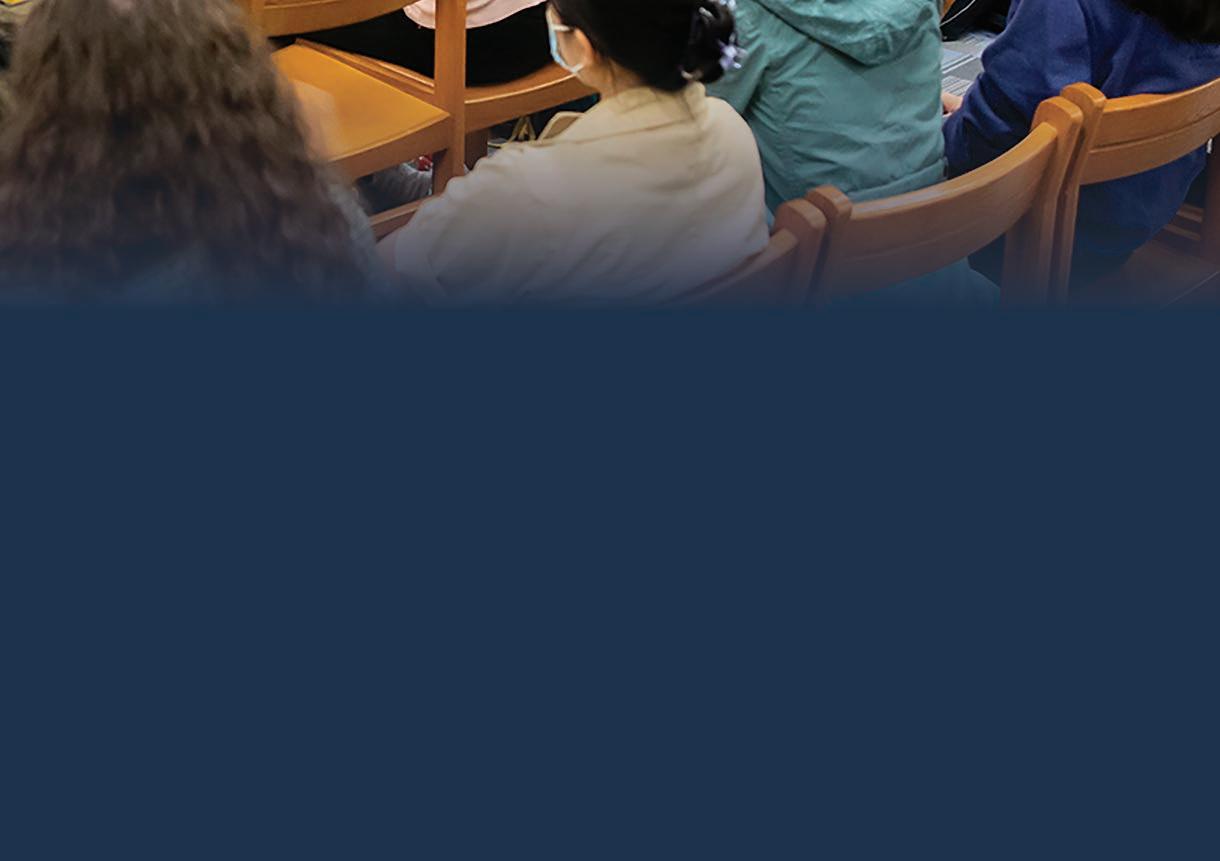

KWH launched the celebration of its 25th anniversary with a series of events held during Homecoming Weekend. KWH is a 13-room house on Penn’s Locust Walk that serves as a center for writers of all kinds from Penn and the Philadelphia region, with about 500 people visiting each week. KWH hosts about 150 public programs and projects each semester, including poetry readings, film screenings, seminars, web magazines, lectures, dinners, radio broadcasts, workshops, art exhibits, and musical performances.
“A quarter century ago a group of students, faculty, and Penn staff came together in a lovely, old, but somewhat run-down house on Locust Walk to talk about what it would take to make a collaborative, writer-centered space, where novices and eminences had equal say in deciding what events to offer, which admired writers we would invite to visit,” says Al Filreis, Kelly Family Professor of English, Director of the Center for Programs in Contemporary Writing, and Faculty Director of Kelly Writers House.



“Those visits immediately became endless conversations, improvised seminars, literary be-ins,” continues Filreis. “We have learned how to learn from each other, discovering that the open door, the ample food, the bottomless coffee, the soft old couches, were among the key ingredients to an actual writerly education. It felt very radical at the origin. Maybe its radicalism hasn’t diminished but rather, somewhat miraculously, it’s been accepted as part of the campus landscape.”
As KWH celebrates its past, it is also looking to the future. Its “A House of Possibility” campaign—named after Emily Dickinson’s idea of “possibility” as a founding principle— seeks to raise $10 million by May of 2026, coinciding with the 30th anniversary of KWH. The campaign’s Possibility Endowed Fund, established in honor of Filreis, will support all the activity that happens both in KWH and online, including projects, events, prizes, and internships.
“We’ve always done well with support from donors who give annually toward our Friends of the Writers House fund,” says Filreis. “But now it’s time to look to the future, to make sure the Writers House will always be here, doing what it does for talented Penn writers. The Possibility Fund and our program endowments will provide our successors, and their successors, the funding they need to keep the house open, vibrant, and inventive.”

One of the celebratory events hosted a group of “amazing KWH people from across the years,” who reminisced about what KWH has meant to them, including Herman
President of the University of Pennsylvania Liz Magill visits the Andrew Hamilton School in West Philadelphia and gives brief remarks as part of a Netter Center 30th Anniversary event.


Sucar, University Communications
Beavers, Julie Beren Platt and Marc E. Platt President’s Distinguished Professor of English and Africana Studies.
“Our model is the poem that is at first seemingly impossible to understand: alone we are stumped, but then we do a collaborative close reading, and finally we realize that meaning, if it is to be powerful, is always co-created,” says Filreis. “We mean only together.”
The Center for the Advanced Study of India (CASI) was founded in 1992 as the first academic research center in the United States focused on the study of contemporary India. In 30 years, CASI has built a rich and diverse community of India scholars and specialists, and it is unique in its two-way exchange of knowledge between India and the U.S. This back-and-forth flow is furthered by the University of Pennsylvania Institute for the Advanced Study of India (UPIASI), CASI’s counterpart institution in New Delhi. Established in 1997 and celebrating its 25th anniversary this year, UPIASI has its own array of projects, institutional fellowships, and original research, and is home base for students and academics in India.
For three decades, CASI has provided policy-focused research and programs on India. More than 100 visiting scholars have interacted with Penn students and faculty, and over 230 students have traveled to India to participate in internships and conduct research since 2007. The center

acts as a public forum by hosting seminars, workshops, and conferences, and producing the internationally read India in Transition, now published in English, Hindi, Bangla, and Tamil.
“CASI would not be the leader it is today without the partnership of our faculty, our International Advisory Board, and our many supporters,” said Steven J. Fluharty, Dean and Thomas S. Gates, Jr. Professor of Psychology, Pharmacology, and Neuroscience, at the center’s 30th anniversary symposium. “In 30 years CASI’s energy, vision, intellectual resources, and network have grown into a research institution of international excellence. I am eager to see all that CASI accomplishes in the next 30.”

Also celebrating its 30th anniversary this year is the Barbara and Edward Netter Center for Community Partnerships. Founded in 1992, the Netter Center advances civic and community engagement at Penn, bringing together the resources of the University and the wider community. The center develops and helps implement democratic, mutually transformative, place-based partnerships that advance research, teaching, learning, practice, and service. These partnerships help improve the quality of life on campus and in the community.
The Netter Center works with and serves as a model for other higher education institutions across the United States and around the world. Academically Based Community Service (ABCS) courses, in which Penn students work collaboratively with students and teachers within K-12 schools, along with their professors and other groups to develop and implement projects that help solve real-world problems, are just one example of the innovative work being done by Netter.
The center will celebrate its anniversary with special events throughout the year, including panels, concerts, and lectures.
To learn more about these programs, visit the links below:
Kelly Writers House: writing.upenn.edu/wh
The Center for the Advanced Study of India and the University of Pennsylvania Institute for the Advanced Study of India: casi.sas.upenn.edu
The Barbara and Edward Netter Center for Community Partnerships: www.nettercenter.upenn.edu
The “India at 75, CASI at 30” symposium audience listens to Panel I: India’s Economy, Trends, and Prospects.
Alumni, students, staff, and friends gather in the Class of 1942 Garden to mark the 25th Anniversary of the Kelly Writers House.
Courtesy of Kelly Writers House





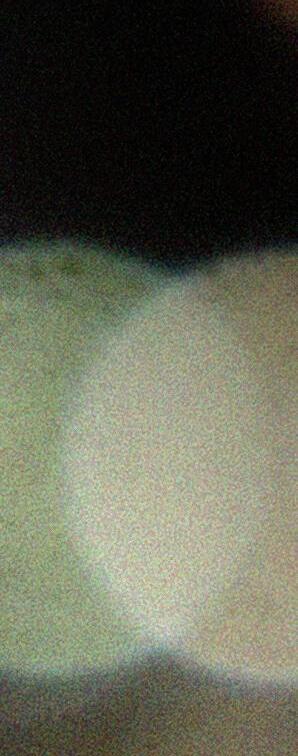


BY BLAKE COLE
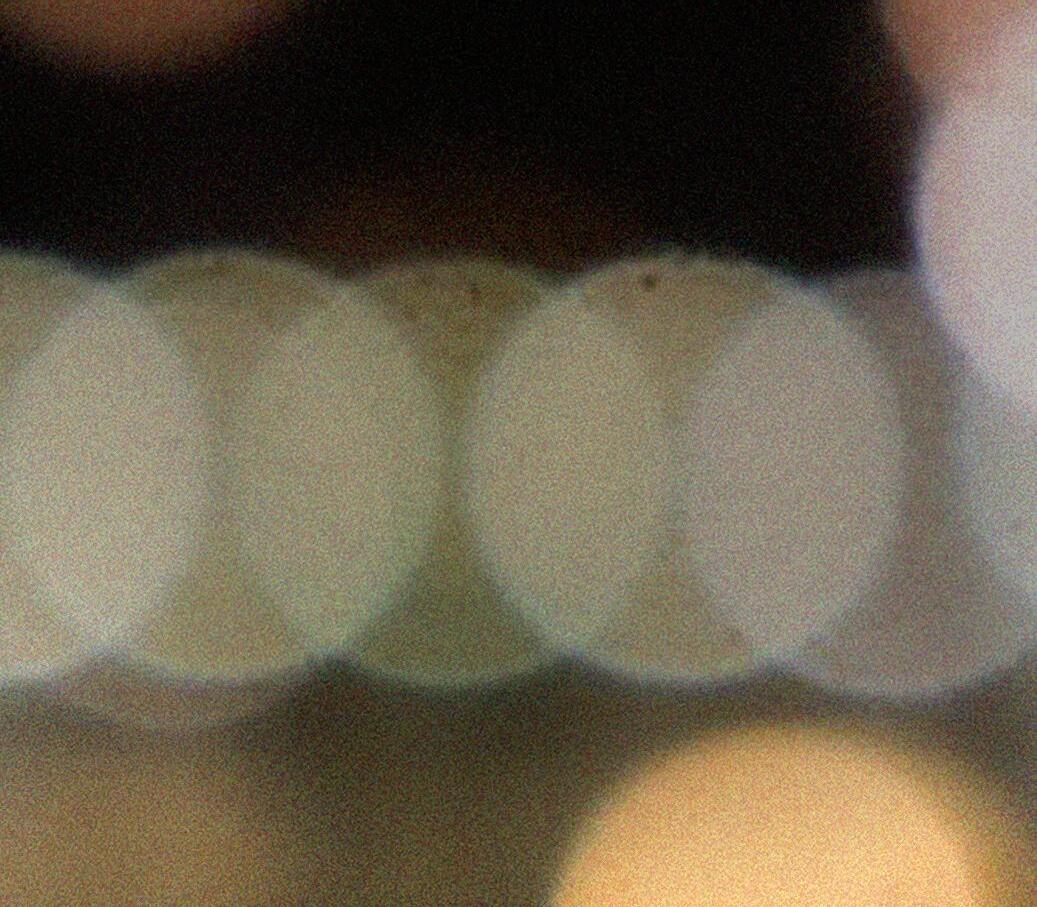


Students from Senior Lecturer in English Paul Hendrickson’s long-form nonfiction master class share powerful passages from their intensely personal projects.



Philosophizing with a club bouncer, comparing wall decorations with the woman who occupied the same campus housing space 35 years prior—these are just a few of the epiphanic moments that grew out of Paul Hendrickson’s Advanced Writing Projects in Long-Form Nonfiction course. For Lily Stein, C’22, Alan Jinich, C’22, and their classmates, it wasn’t merely an academic experience, but a deeply personal one.
“If you’ve read The Secret History by Donna Tartt or watched Dead Poets Society, I’d say it’s a bit like that,” says Stein. “Our little class would meet once every two weeks over the dinner hour. Jazz or folk would be playing in the background, the five of us nestled into plush chairs in the faculty lounge of the English building. [Hendrickson] has a rare gift for finding beauty and significance in everything. What becomes quickly apparent in his class is that there is no difference between writing well and living well.”


Hendrickson, Senior Lecturer in the Department of English, is a veteran author and journalist. Before coming to Penn, where he received a Provost’s teaching award in 2005, Hendrickson worked as a staff feature writer at The Washington Post from 1977 to 2001. He is the author of numerous books, the most recent of which, Plagued by Fire: The Dreams and Furies of Frank Lloyd Wright, was published in 2019. He also authored the 2011 New York Times bestseller and National Book Critics Circle Award finalist Hemingway’s Boat: Everything He Loved in Life, and Lost, and in 2003, won the National Book Critics Circle Award for Sons of Mississippi: A Story of Race and Its Legacy.

“Experience in writing long-form nonfiction gives the student-writer, who might one day try to make a vocation of this work, a sense of how hard it is to do something long and sustained,” says Hendrickson. “It makes them morally and ethically accountable to their subjects— that is, they are not just swinging by for one or two interviews, but they are building up a relationship built on trust: their
trust of the subject, the subject’s trust of them. Trust is always the implicit bargain, whether it is ever stated as such or not. For the student to come to terms with this in a long-form project pays dividends they don’t even realize at the time.”
Students engaged closely with Hendrickson on topics until they landed on one that really resonated.
“The professor and I were on the phone over winter break trying to brainstorm some ideas for a long-form project before the start of the semester,” says Jinich. “Initially I was thinking of just following one person around for the entire semester, but he seemed to be really excited by the idea of a tone poem, a sort of noir perspective of Penn after midnight. He sent me a link to ‘Round Midnight’ by Thelonious Monk and it set my mind loose.”
of indigenous Americans in the early part of the 20th century. She examined archival prints and held in-depth interviews with the curator. Curtis’ photographs had a big impact on Deveraux’s mother, which made the project even more meaningful.


If you’ve read The Secret History by Donna Tartt or watched Dead Poets Society, I’d say it’s a bit like that. Our little class would meet once every two weeks over the dinner hour. Jazz or folk would be playing in the background, the five of us nestled into plush chairs in the faculty lounge of the English building.

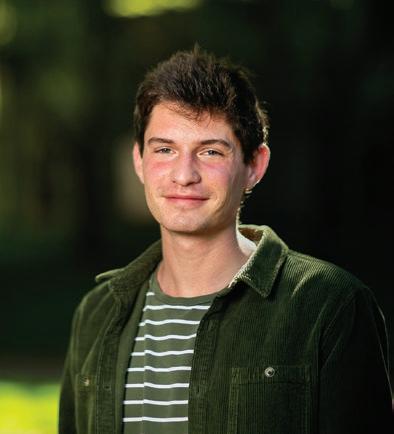
Mullins took a deep dive into the life and teaching career of Richard Polman, Maury Povich Writer in Residence in the Center for Creative Writing at Penn, whose class Mullins had earlier taken, and who is responsible for Mullins’s pivot toward a possible career in journalism.
Jinich’s ultimate piece, Penn After Midnight, saw him exploring nocturnal happenings around campus. “Would I follow the quiet moments of studiers walking home from Smoke’s? The Allegro delivery driver? Rodin security guard? How can I represent the living and breathing campus that never sleeps?”

The course, offered through Penn’s Creative Writing Program, maintained a small class size to maximize time for collaboration. Stein and Jinich’s classmates included Margaret Arfaa, C’24; Makena Deveraux, C’23; and Zachary Mullins, C’24.
Arfaa, whose grandfather was once highly connected at Annenberg, used storytelling to create a portrait of the Annenberg Center for the Performing Arts.

Deveraux visited Penn Museum to study the complicated legacy of the photographic genius of Edward Curtis, the premier photographer and ethnologist

Stein’s piece, The Immortal Life of the Green Monster, delved into the storied history of her housing at Penn, which she and her roommates have affectionately dubbed the “Green Monster.”
“I’ve always loved learning about history,” says Stein, “so hearing first-hand about what it was like to be 20 years old and a student at Penn in 1970, or imagining what it might have been like to raise a family under the Green Monster’s roof during the Great Depression was such an amazing and all-consuming experience.”

In the following pages, Stein and Jinich share some of the most powerful passages from their pieces, giving us a glimpse into their work process and literary journey.


Lily Stein, C’22; Alan Jinich, C’22
Photography courtesy of Lily Stein and Alan Jinich

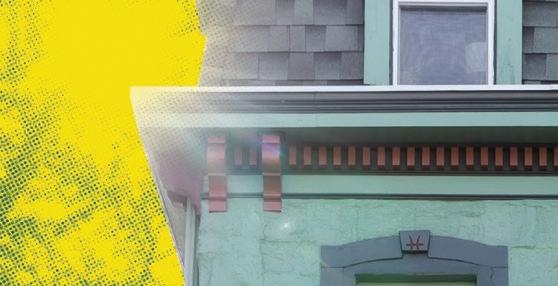


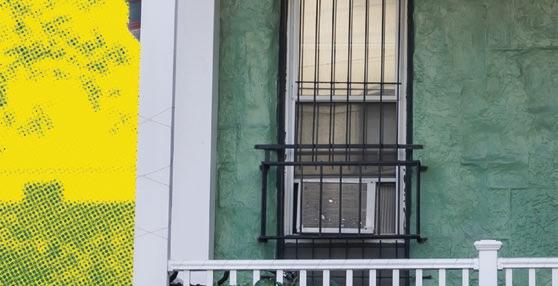

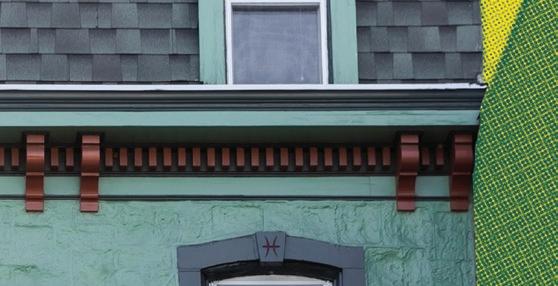

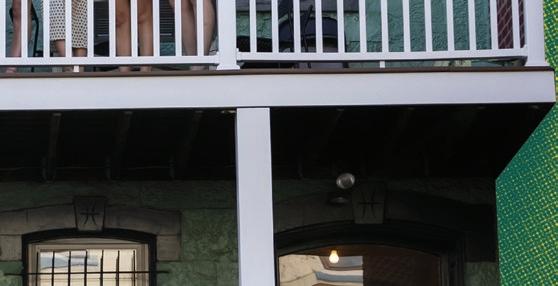
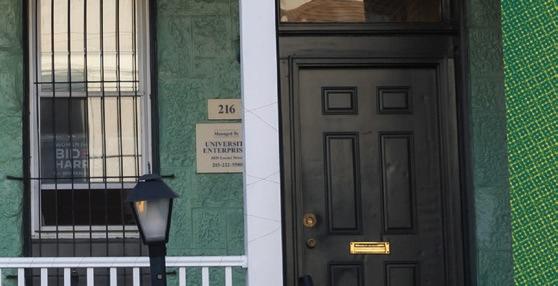
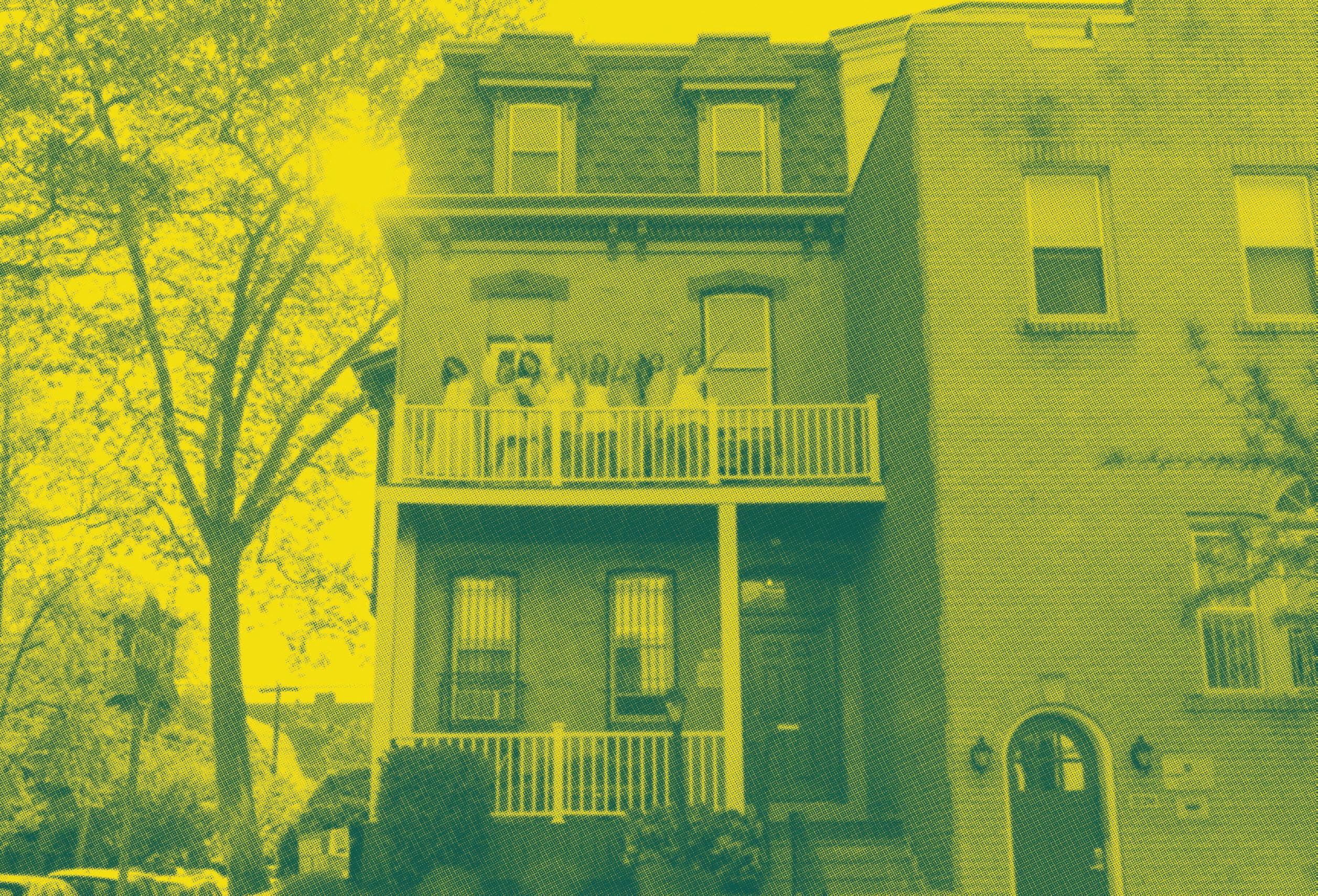
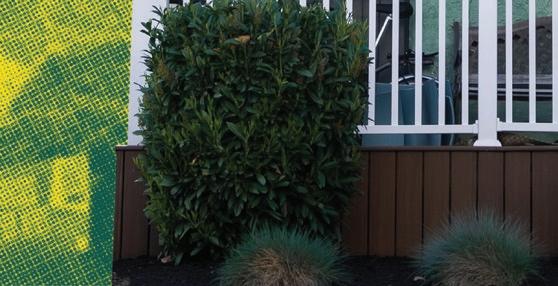



The Immortal Life of the Green Monster
By Lily Stein, C’22
What we made when we had to nothing to make // 2020–2022
We moved into the Monster in August 2020, height of the pandemic. Eight girls, planning to live there until graduation. In a simple world, the house was already a monument in the history of our lives—the last stop on our way out of college. But we carried in our many suitcases, second-hand furniture, and cardboard boxes with an appreciation greater than the run-down house probably warranted. It wouldn’t be just a monument to us, it would be a city.
We each had chosen a room when we moved in, which we meticulously and unintentionally personalized to become a physical manifestation of ourselves. When there was no longer space in the world for us, we
had to make our mark somehow. Glitter and pink makeup smudged across Sandra’s desk next to her sewing machine, where she expertly tended to hemming her dresses shorter and shorter. Ivy’s minimalist room with the white bay windows. A framed black-and-white portrait of a young couple kissing on a train hanging on the wall to the right of her desk: spontaneity within limits. Sam lying in bed surrounded by her collected and carefully-sourced antiquities. Maeve upstairs with a canvas photograph of planet Earth larger than her modest, sparsely decorated room. Most of my junior year was spent wandering from bedroom to bedroom, each its own ecosystem.




Seven of us posing in front of the Green Monster, our future house (circa 2019, a year before we moved in)

What they tell me in broken memories // 1986–1988
Robyn, Ronni, Deborah, Amy, and I all occupy a small square of my computer screen. The four women are graduates of Penn’s class of ’88. Some of their lives have remained intertwined despite the geographic distance—Robyn and Amy are Nashville natives and have been friends since they were three—but Deborah and Amy have lived in the same city for twenty years and have only just realized this on the video call. They pledge to get a drink soon in Manhattan.
The women talk fast, talk over each other, laugh loudly, and go on long tangents that take us far away from the house. I listen, and later, I don’t attempt to transcribe the call as I did for the other residents I interviewed. Four years of shared history and thirty-four years of separate histories are being crammed into the call. There aren’t neat quotes that show me who these women were when they lived in my house as much as there are actions. Like the way everyone yells at Amy for not remembering certain stories or the way Robyn has kept every shred of paper accumulated since she was a freshmen living in the Quad.






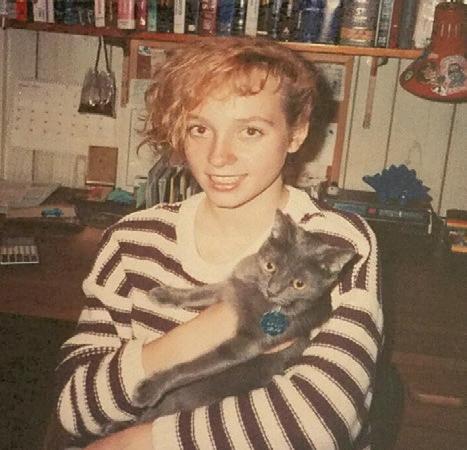
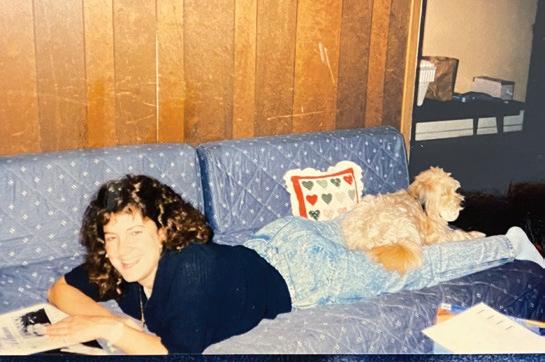

(L–R) Green Monsters donning their custom-made Spring Fling apparel. Ten years later, these boys gifted the author and her 2022 Green Monster roommates the same shirts; Green Monsters at their graduation in 2012.
What we will remember together // Then & Now
We stand outside on the Monster’s deck and people-watch hordes of kids darting around to various pre-games, many clutching bottles of cheap champagne. David provides a running analysis on how the fashion trends have changed (“guys don’t wear tank tops anymore”) and how out-of-place he feels on campus (“I don’t remember the last time I went to a party”). His final Spring Fling in 2012, the Green Monsters had hosted their annual pre-game brunch and kept a running tally of how many times Carly Rae Jepsen’s “Call Me Maybe” played. Life was all neon and Fling parties were on campus. Style has since lost a lot of its color and the parties have moved to clubs downtown. David can’t wrap his head around this.
(Clockwise from top left) Deborah posing in her third-floor bedroom, which is now my bedroom and decorated much too similarly; Bundy’s girlfriend and cat, Lynx, photographed in his bedroom; Theo, the house dog, napping on a resident.
What they took with them // 2009–2012
Charlie Oshinsky is the keeper of The Scroll. I have been told this by several of his housemates. He takes his job seriously— safeguarding The Scroll and carrying it with him through medical school, through various moves, through travels. The second I ask about his keeper status, he is walking to grab it. It has been ten or eleven years since a Green Monster “pledge” wrote out the Monster commandments on a piece of paper and dubbed it The Scroll, but Charlie still knows where that slip of paper is at all times.
He pulls out a tattered green folder. In chicken-scratch handwriting, he has written “Scroll” at the top of the folder, followed by “Birth certificate,” then “Social” underlined. He calls it his “folder of important documents” and it also happens to contain his medical license and the title to his car. But these don’t earn a spot on the title page. The Scroll comes first.


Before he leaves the deck—he has to get back to his girlfriend and the life of a 32-year-old adult—he tells me and Sam that he can see that we love each other and that it makes him happy to see. I smile and it reminds me of something he had said to me in an interview about the Monsters a few weeks ago: “I love them and I tell them I love them everytime I see them and everytime I say goodbye to them.” He still sees many of them every weekend. Their kids call him Uncle Fried.
The goodbye is coming soon for us, too soon. But I know we’ll be back standing on this deck one day, me and Sam. The music will be unrecognizable, the styles will have changed, and we will have changed with them. But we’ll be back all the same.

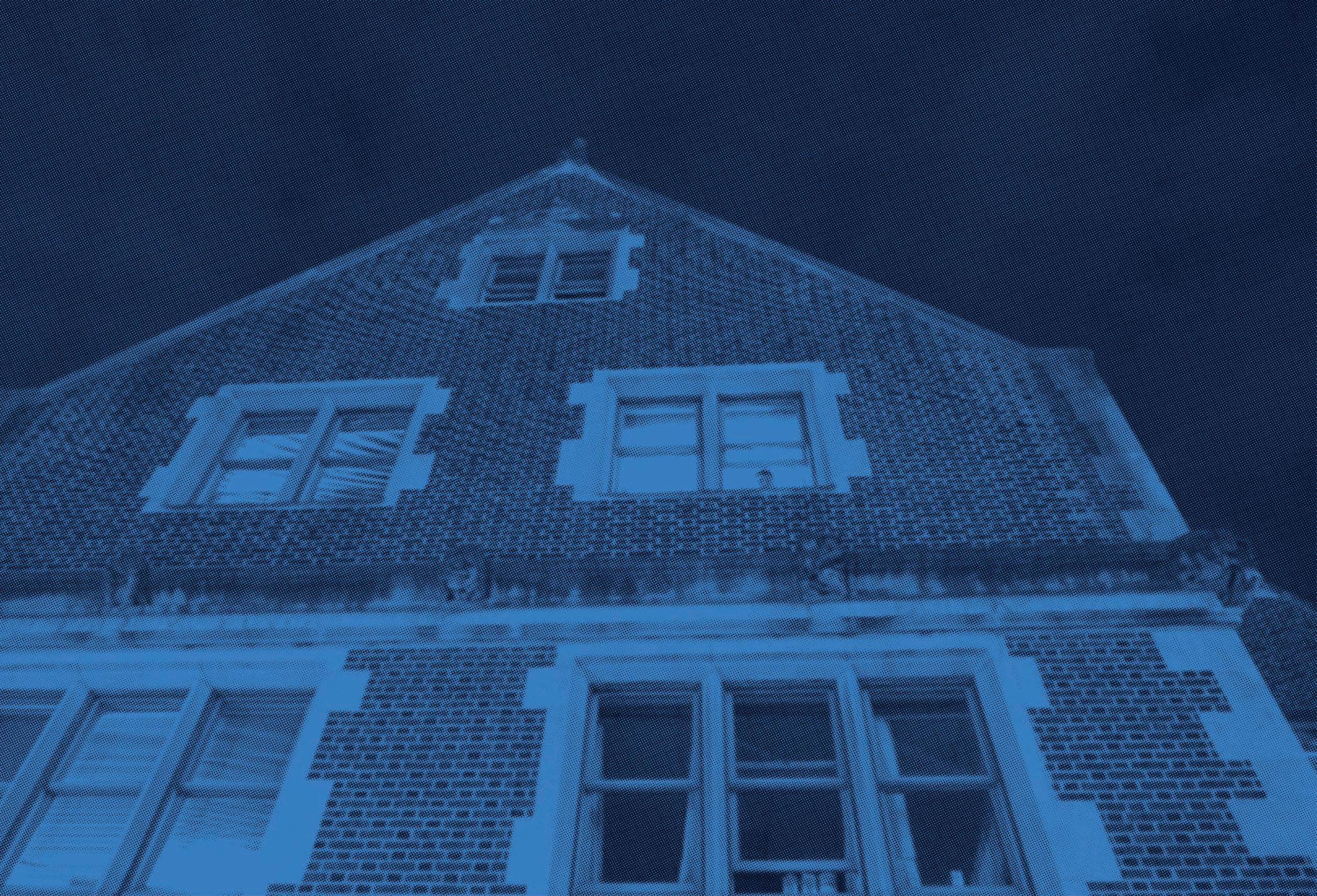

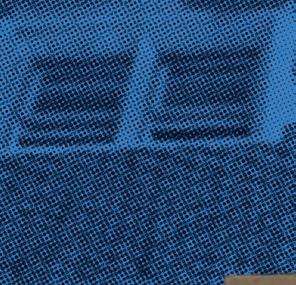




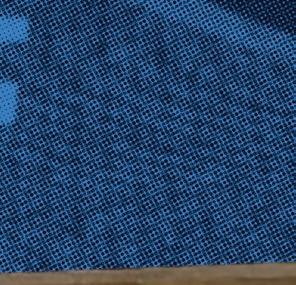

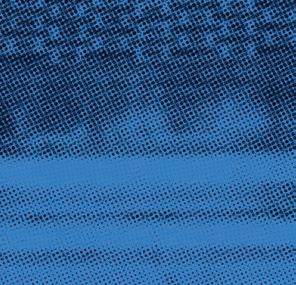









Penn After Midnight
By Alan Jinich, C’22
Harrison Lobby, 1AM
Five security guards declined to speak with me before I approached Amber at the wrap-around desk in Harrison, a highrise dorm built in 1970. She had arrived two hours earlier for her midnight shift and stood out with her sparkly headband warmer. A plastic barrier put up for COVID shields us from each other.
“I like the barrier,” she says. “I don’t really feel threatened by students here. But in the bar, people can become drunk and aggressive.” She used to bartend early morning shifts before becoming a security guard. It was an underground job at the height of COVID restrictions. “I couldn’t be a bottle service girl or server because
there are no boundaries. Having that bar between me and the guest gives me more confidence…
“There are times where I look good and I feel good. I’m in the middle of the dance floor and well aware that everyone is looking at me. Throwing your hands in the air, losing yourself in a moment, the music. I love it. [She laughs]. Maybe it’s just liquid courage.” But behind this barrier she’s invisible. From midnight to 8am she pays bills, watches movies, writes goals, manifestations, to-dos, lists of people she would invite to her future wedding and people she would break money to if she ever won the lottery.




(Top to bottom) Lewis looks out his window of Mask & Wig, 305; Harrison Dorm


West & Down
There’s a line on 39th. It’s not crooked or straight, but sways with the pulse of music and breaks as bodies cut in. Fingers scramble through purses and wallets in search of driver’s licenses, foreign passports, spare cash. When Nasir raises his voice, the line stands on its tiptoes and turns to the front like a pack of meerkats. Nasir says, “straighten up”, and they straighten up. He folds fake IDs like cardboard and the line moves on. The 23-year-old bouncer of the West & Down nightclub is vigilant and assertive. No one gets in unless they comply.

“As I’ve grown older, I started to realize that not everybody has those opportunities to be able to process what they’ve gone through and then release it. So I come to a club with a whole bunch of college kids who are fresh outta their parents’ cribs, have had zero time to rectify all the trauma that they’ve been through, and they’re trying to figure out how to be an adult, pay for college. And now they gotta learn some shit. So when they come outside they just wanna let go of all that. I get it.”
Mask & Wig, 305
The door reads “Lewis: Hampstead, QC.” He opens the door with a smile and I introduce myself as a past resident. At first glance, his face reminds me of my younger brother’s.
The room is exactly as I remembered, except now it’s filled with Canadian sports memorabilia, posters, and hats. There’s even a TV.
Lewis sits up on his raised twin bed. I sit in his swivel chair and look up at him like my friends used to do for me. As in a dream, I feel that he’s taken my place.
“So do you like the room?” I ask.

“I’m fortunate to be here. You look outside and you’re nearly on Locust! And I’m a big history guy. I love tradition. As you can see by the room, I’m a diehard Montreal Canadians fan. So it’s very cool to be part of a long standing tradition here. I get to sit here and look into that old world.”


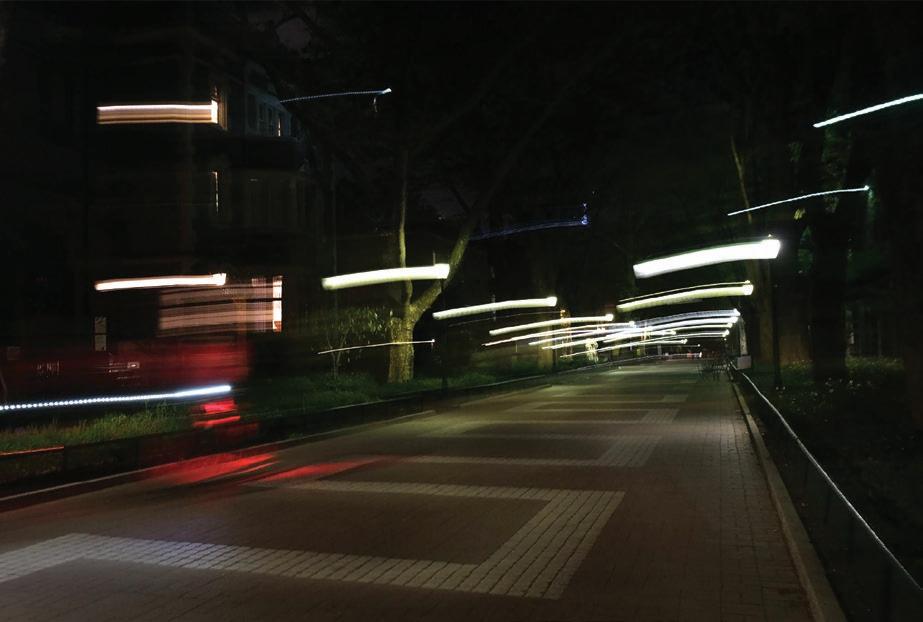

Harrison Lobby, 2AM

I return to Harrison a few weeks later. The fireplace is turned off tonight. I ask Amber if she’s ever left Philly.
“I went to St. Thomas once. It had the most amazing weather. Waking up in that type of environment I thought how could you ever be sad? But it’s not home. Like I can’t get a cheesesteak around the corner. I can’t just pull up on my cousin’s.”
Her smile widens.
“As a young Black girl, there is like a certain culture. Meek Mill has a song called ‘Oodles O’ Noodles Babies’. It’s the pack of ramen

noodles you get for like 25 cents at the store. And it’s just a staple for growing up in Philly. Like, if you were a young Black kid you grew up on that stuff. There’s a certain culture with being raised here. Like you’re gonna pass somebody that might not talk like you, look like you, dress like you. But somehow, someway, something links y’all because y’all from here.
“Do you think Penn feels like Philly?” I ask.
“I mean, Phil-a-del-ph-ia, the City of Brotherly Love, the Independence Hall, the book—the textbook Philly, sure. But the one I’m used to, the culture, no. Definitely not.”

Photography by Alan Jinich
Nasir poses in front of the West & Down nightclub, where he used to be a bouncer.
Locust Walk
Amber sits behind the front desk in Harrison.
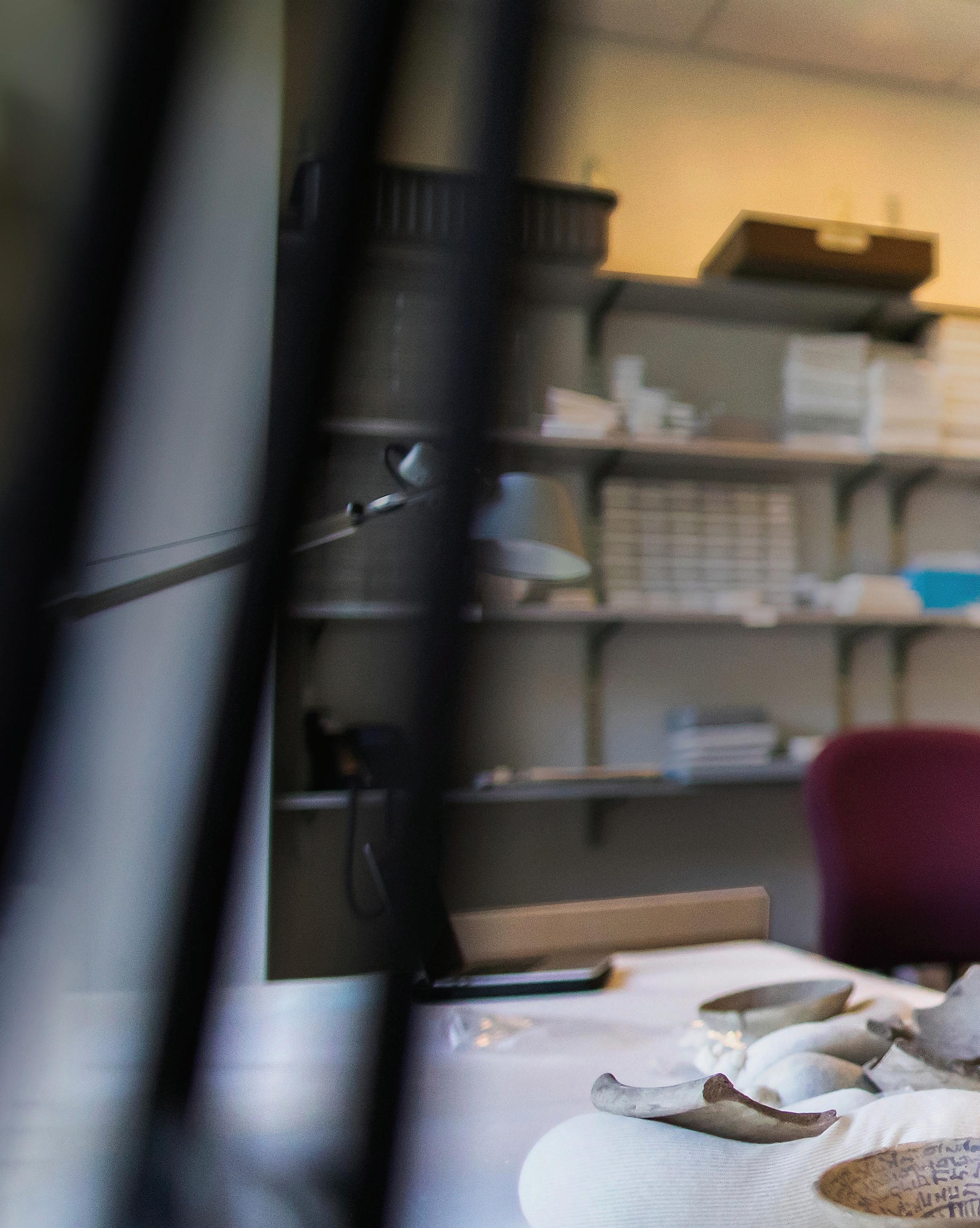
The BowlsThe story Tell
By Michele Berger
In an ambitious new project, Simcha Gross, Assistant Professor of Near Eastern Languages and Civilizations, studies hundreds of ancient incantation bowls in the hopes of eventually building a worldwide database.
Photography by Eric Sucar, University Communications

In a nondescript room on the fourth floor of the Penn Museum, researcher Simcha Gross cradles a small, earthenware bowl in his gloved hands. Markings cover its inside entirely, swirling inward until they stop at a cartoonish figure with black, beady eyes and squiggly arms in the shape of a semi-circle.
Simplistic or “cute” as the drawing may seem, it’s actually quite complex, extraordinary even, Gross explains: The character represents a demon, and the text surrounding it details a specific and personal request for protection or love, maybe a counter curse—or something else altogether. Both the drawing and text were inscribed hundreds of years ago.
“In the mid-19th century, we begin to unearth incantation bowls that name the clients who purchase the bowl, their problems, their families. These people invoke various powerful forces and deities to resolve a variety of issues, offering a literary corpus that provides a new perspective,” says Gross, Assistant Professor of Near Eastern Languages and Civilizations.
By that day in early August, Gross has seen this special object—and many other “magic” bowls—at least half a dozen times,
but he’s as excited now as he was initially. An estimated 2,500 incantation bowls exist worldwide, with 290 at Penn, most of which are not displayed publicly. This summer, Gross and colleague Rivka Elitzur-Leiman, a Harry Starr fellow at Harvard University, began a massive undertaking to catalogue and study the antiquities.
We're finally beginning to move past this idea that magic is strange, this separate domain of life.
word placement, vessel type and size, and language choice. Longer term, Gross also says he’d like to correlate dig archives to actual bowls, which hasn’t previously been done, and ultimately, create an online database that includes every one of these items around the world.
“We’re finally beginning to move past this idea that magic is strange, this separate domain of life,” says Gross, also part of the Jewish Studies Program and a fellow at the Katz Center for Advanced Judaic Studies. “We’re also beginning to better understand that previous ideas that assumed that the bowls represent the interest of a lower, popular, or nonelite class of Jews, Christians, and others simply do not hold; the bowls were a surface on which scribes from a range of social, educational, and religious background wrote incantations.”
Nippur Excavations
They have many goals for the research. They want to improve the technological toolkit available to read illegible text on these objects and test the materials from which they’re made. They hope to contextualize and understand not just the literal words, but the reasons behind
Five of the bowls—variously called amulets, incantation bowls, or magic bowls—are currently on display at the University of Pennsylvania Museum of Archaeology and Anthropology. These and the 285 more in storage have a long history with Penn.
This summer, Simcha Gross, Assistant Professor of Near Eastern Languages and Civilizations, and Rivka Elitzur-Leiman, a Harry Starr fellow at Harvard University, familiarized themselves with more than five dozen bowls and fragments in Penn Museum’s collection. The bowl on the left is one of four the research team discovered had been made by the same scribe. They were able to tell by the similarity in the writing and the “demon” pictured at center.

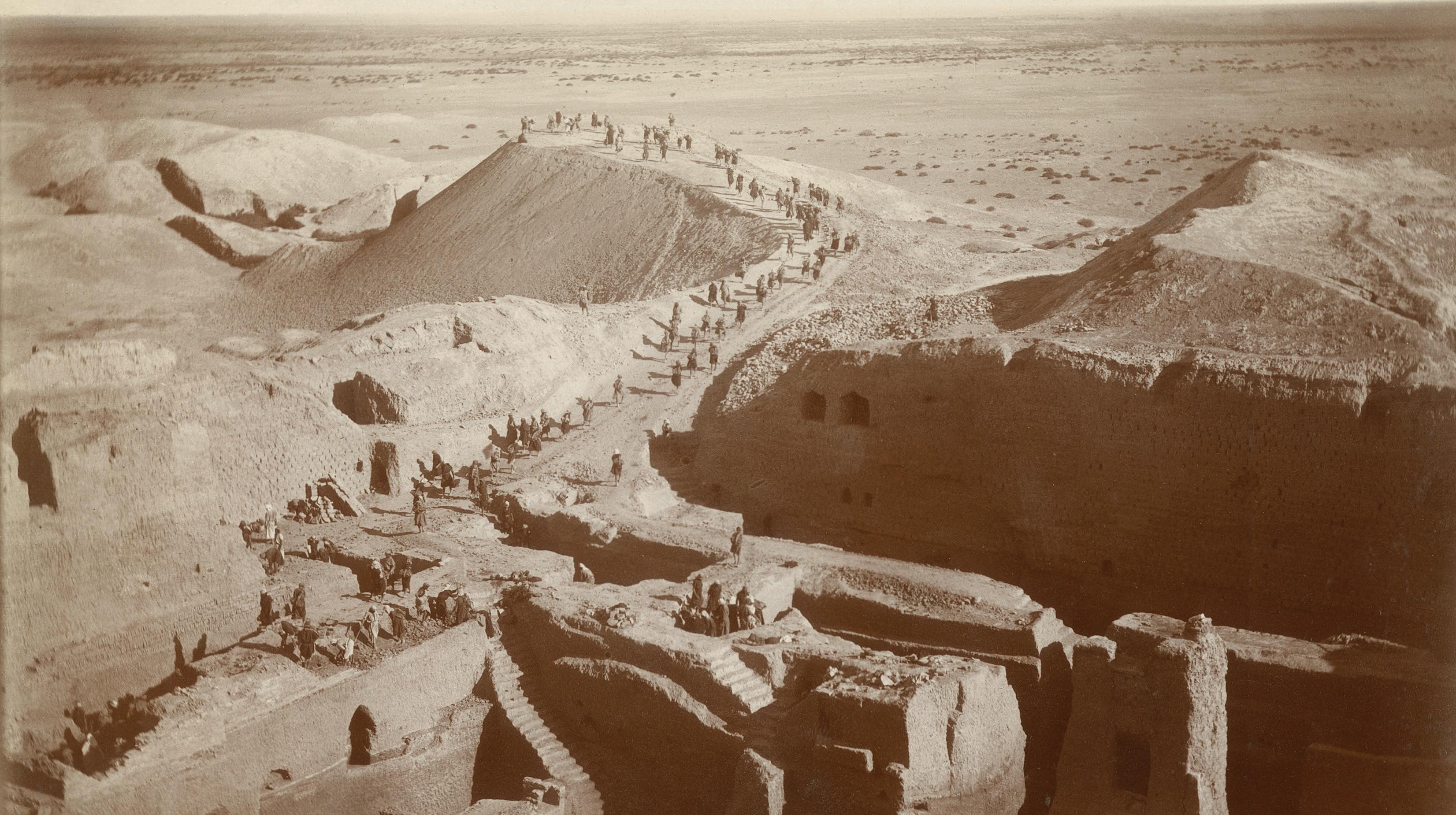
In 1888, John P. Peters, a Penn professor of Hebrew, organized and carried out an archaeological excavation in Nippur, part of the Ottoman Empire and located in modern-day Iraq. Penn received permitting from the Ottoman Sultan to conduct the excavation, the first of its kind there by an American institution, and a private group of prominent Philadelphians raised the money for it. That excavation, and
several that followed, unearthed a slew of important items, including cuneiform tablets and many incantation bowls.
It wasn’t just the bowls themselves that left an impression; it was also how they were situated when discovered. “The bowls were buried upside down under the floors of houses in strategic locations— under the door sills, in the corners of rooms—likely to protect against evil
demons,” says Richard Zettler, Associate Professor of Near Eastern Languages and Civilizations and associate curatorin-charge of the Penn Museum’s Near East Section. “Sometimes they put bowls together, rim to rim, and sealed them.”
Penn’s collection of these antiquities is well-known, with more than three dozen appearing in the first critical academic text on incantation bowls published

John Henry Haynes, Penn Museum
Starting in the late 1880s, excavations at Nippur in what is modern-day Iraq unearthed a slew of important archaeological items, including cuneiform tablets and many incantation bowls.
in 1913 by James Montgomery, then an assistant professor at Penn and a professor at the Philadelphia Divinity School. That book, Aramaic Incantation Texts from Nippur, is still cited today.
Elitzur-Leiman suspects that the volume’s longevity likely stems in part from the fact that the bowls it describes come from a collection with a known and well-recorded history—a rarity for the field before the turn of the 20th century. “The Penn incantation bowls were a watershed in the study of ancient Jewish magic and amulets,” she says. “They were the first and the only major group of such items that emerged from a documented archaeological excavation.”
Montgomery focused only on the most beautiful and easily decipherable bowls, Gross explains, which, at the time, was a monumental task given the lack of comparable materials available. Yet “there are so many more. When I arrived at Penn, Richard walked me down to the storeroom and showed me the shelves where the bowls are kept. There are hundreds,” he says. “Some of them are too faded to read; some of them have writing that doesn’t make out a language.”
Gross and Elitzur-Leiman want to study them all, from the easy-to-read and unscathed to the tiniest fragments with indecipherable writing. “We’re interested in thinking about this collection holistically,” he says.
A Project Takes Shape
After Gross visited the Museum collection with Zettler back in 2019, he started envisioning what a project with the bowls might entail. He reached out to Elitzur-Leiman, a friend and colleague who specializes in ancient inscriptions and Jewish magic. He also enlisted Katherine Blanchard, the Museum’s Fowler/Van Santvoord Keeper of the Near East Collections.
As an object keeper, Blanchard is in charge of hundreds of thousands of items. For this project, she started by taking 275 new high-resolution photos of 17 bowls. Then this summer, Elitzur-Leiman and Gross studied 67 bowls and fragments— plus one inscribed eggshell—that Blanchard retrieved from the Museum’s basement. Between visits, the items lived in the fourth-floor research room, in a large metal cabinet on a pull-out drawer, sandwiched between objects slated for an upcoming Museum exhibit and large antique vessels.
“We had a few goals this summer, key among them to familiarize ourselves with the many bowls in the collection that remain unpublished,” Gross says. The work proved fruitful. The researchers figured out that the text on one bowl was backwards, readable only with a mirror. They found four bowls inscribed by the same person, the details nearly identical but for the client’s name. With a team
Penn Museum object keeper Katherine Blanchard (left) is helping facilitate the project. She took 275 new high-resolution photos of 17 bowls and retrieved 67 bowls and fragments— plus one inscribed eggshell—from the Museum’s basement for the researchers to study.


from the Museum, they tried a technology called multispectral imaging to make illegible words visible, which worked, but on just one of four faded bowls.
“There is always something exciting about holding ancient objects, primarily materials from your personal fields of interest,” Elitzur-Leiman says. “The experience of working at the Museum this summer was fascinating and enjoyable.” And it barely scratched the surface of what’s possible.
Questions Yet to Answer
So many questions remain about these incantation bowls: What’s special about each item? How do they differ from those found elsewhere? Why did the scribes choose bowls over other surfaces? Why are most cereal-bowl sized, except for a few larger, thicker bowls, which are the size of large salad bowls?
Inscription language also varies widely. “All of the bowls are written in Eastern Aramaic, but they are in different dialects,”

Gross and Elitzur-Leiman are studying some intact, pristine bowls and others, like the one above, that are in pieces. “The sherds tell a story, too,” says Blanchard.
Gross says, namely Jewish Babylonian Aramaic, which is a Hebrew script; Syriac, the language used in many early Christian texts; and Mandaic, used by a religious group in southern Iraq called the Mandaeans.
Though the bowls are in different dialects, Gross notes that the incantations reflect the fact that “neat religious lines don’t hold in the way we might imagine. There’s more porousness,” he adds. For instance, the names of rabbis appear in bowls with otherwise Christian-themed texts and the name Jesus Christ appears on an incantation bowl in Hebrew script.
There’s a question of why common themes like curses and counter curses, generic
protection, and love prevailed over others. Gross and Elitzur-Leiman also challenge the much-debated notion of whether charlatans took advantage of illiterate clients by writing in what is akin to ancient gibberish, known as pseudo-script.
A Complete Digital Catalogue
Ideally, the work the Penn-Harvard team hopes to do with technology and by correlating dig archives to specific bowls will bring into sharper relief the neighborhoods and people of southern Mesopotamia some 1,400 years ago. But the most ambitious part of the project, digitizing Penn’s collection
of incantation bowls, could potentially have the biggest impact.
“It would be an open-source database with all the bowls that we can collect, together with transliterations and translations, new photography, and possibly some technological, analytical work on the bowls’ material to see whether they stand out from the large corpus of ceramics that we have,” says Zettler.
He shares the excitement Gross and Elitzur-Leiman have for this particular aspect of the work. “I’m just thrilled that Simcha wants to work with this corpus of material, to use it as a springboard for something much bigger,” Zettler says.
To that end, Gross envisions places like the British Museum and Louvre, which also house collections of incantation bowls, adding theirs to this first-of-its-kind database. Eventually, he says, he’d love to build a single, accessible, comprehensive digital collection of all the magic bowls that are known around the world. The point would be to make them available to anyone who wishes to experience them.
“Beyond what these bowls tell us about Jewish magic, about what these communities were doing at the time, they answer bigger cultural and historical questions around interreligious context,” Gross says. “This environment is far richer than anyone could imagine.”

Nikhil Anand, Associate Professor of Anthropology, leads two interdisciplinary research initiatives that provide insight on worldwide climate disasters and water crises.
By Duyen Nguyen Portrait photography by Francis Augusto
Five years after Hurricane Maria killed 3,000 people and damaged 80 percent of Puerto Rico’s power grid, the island is now reeling from another catastrophic storm. Hurricane Fiona, which made landfall on September 18, unleashed more than 30 inches of rain in some areas, causing flash floods, shutting down the public water and sewer system, and plunging nearly all of Puerto Rico into darkness.
Halfway around the world, a record monsoon that triggered massive flooding submerged a third of Pakistan. More than 1,500 people died and tens of millions lost their homes. The floods, which have been described as apocalyptic, were likely driven by climate change, confirms a new study by 26 scientists affiliated with the research initiative World Weather Attribution. About 75 percent more water is now falling during Pakistan’s monsoon season, which began in June this year following months of scorching heat and drought. While the country is responsible for less than one percent of global carbon emissions, it is one of the regions hardest hit by—and least prepared to withstand— anthropogenic climate disasters.
“The massive flooding that is taking place in the world today is the outcome of both carbon emissions, on the one hand, and infrastructured landscapes, on the other,” says Nikhil Anand, Associate Professor of Anthropology. “Anthropogenic climate change—changing weather patterns, melting glaciers, intensifying monsoon cloud bursts—and an infrastructured landscape that magnifies these disasters, work together to produce these massive crises.”
An environmental anthropologist, Anand studies how the intersections of climate change, infrastructure, and state power affect cities and their most vulnerable residents. He is the author of Hydraulic City: Water and the Infrastructures of Citizenship in Mumbai, an award-winning study of how the poor in Mumbai—a city on the western coast of India that sustained heavy flooding in 2005— access water supplies amidst technological uncertainty and political marginalization. Anand also co-edited, along with UCLA’s Akhil Gupta and Hannah Appel, The Promise of Infrastructure, a volume of essays that examines the politics of infrastructure. He is also the Director of Envirolab, a workspace supporting graduate research on environment-society relations.
It is not just a material process through which wetlands are solidified. It’s a social process, a political process of placing vulnerable groups in harm’s way.
At the heart of Anand’s research is water—its governance, its presence, and its absence. He has co-directed two multidisciplinary initiatives, Rising Waters and Inhabited Sea, that explore the impact of water in its many forms on the past, present, and future of cities.
Supported by the Penn Arts & Sciences’ “Making a Difference in Diverse Communities” initiative, which facilitates research that addresses inequities and global challenges, Rising Waters considers the future of rivers and coastal cities by comparing Philadelphia and Mumbai, two cities with a history of building industrial infrastructure on landfilled wetlands. Found at the margins between land and water, these converted wetlands often sit in close proximity to communities that have been racialized and classed.
“It is not just a material process through which wetlands are solidified. It’s a social process, a political process of placing vulnerable groups in harm’s way,” Anand says. Rising Waters was also led by Bethany Wiggin, Associate Professor of German and Founding Director of the Penn Program in the Environmental Humanities.
Inhabited Sea—which Anand co-directed with the late Anuradha Mathur, Professor Emeritus of Landscape Architecture in the Weitzman School of Design, and her partner Dilip da Cunha—is a research collaboration with architects, artists, citizen scientists, oceanographers, social scientists, and urban planners working in Mumbai. The project began in 2019, emerging out of Mathur and da Cunha’s work in response to the Mumbai floods in 2005, which left parts of the city underwater and killed over 5,000 people in the span of 24 hours. Mathur and da Cunha published their research in Soak: Mumbai in an Estuary, which reimagines the city as relentlessly wet terrain—an estuary sitting between the sea and the monsoons.
“Building on Mathur and da Cunha’s work, we asked what might happen if we think about wetness not as a problem to be resolved but as a condition from which to think and design,” Anand says. “What kinds of futures of the city might be imagined from there?”
Enduring Harm
Along with Anand and Wiggin, several undergraduate and graduate students at Penn and the Tata Institute for Social Sciences in Mumbai contributed to Rising Waters, engaging in ethnographic and historical research over a three-year period. The project culminated in a collection of essays that was recently published in the International Journal of Urban and Regional Research
A few of the studies investigate how certain governmental projects produce harm. For instance, in her study Wiggin shows that, in Philadelphia, administrative decisions to build oil refineries on the city’s former wetlands, where many Black and low-income residents have been forced to relocate, has exposed these communities to enduring
harm. “We find refineries and other kinds of toxic industries at the margins of land and water,” Anand says, “and of course, these are the margins of land and water that are most at risk as sea levels rise, as floods become more common both in Philadelphia and in Mumbai.”
Bureaucratic actions—and oftentimes, inactions—around water governance have also contributed to continual water crises in both cities, Anand says. In Mumbai, the sewage department has long released untreated sewage into the Arabian Sea, evading national water quality standards and creating toxic environments for those who live on the coast. In Philadelphia, water mains burst and lead contaminates the water pipes on a regular basis.
I think there’s something really exciting in how the city recognizes that the existing way of doing things can only be temporary—that more durable and enduring ways of dealing with flooding or water need to account for how the city continues to be wet by the sea, on the one hand, and the rain, on the other.
“Why is it that it’s too costly to repair mains or to remove lead from water pipes or to ensure reasonable water quality for some populations when the costs of doing that for others don’t matter at all?” Anand asks. The results of Rising Waters suggest that these crises—currently mirrored in the water shortages facing the largely Black residents of Jackson, Miss.—stem from “racialized acts of administrative ignorance—not just of not acting, but knowing not to act, knowing not to know.”
Like Mumbai and Philadelphia, Jackson has struggled for decades with water issues because of aging, poorly maintained infrastructure. The crisis reached a boiling point in August when record levels of flooding damaged a major pump in the city’s main water treatment facility. “Administrative decisions of investment or under-investment or divestment continuously expose people to harm in cities like Jackson, but also in many cities around the world,” Anand says.
Climate Futures
Inhabited Sea continues the work begun by researchers in Rising Waters, this time focusing on the city of Mumbai. The main goals of that project were to investigate how to construct infrastructure landscapes in ways that don’t magnify disasters, and to intervene into ongoing conversations around Mumbai’s climate futures.

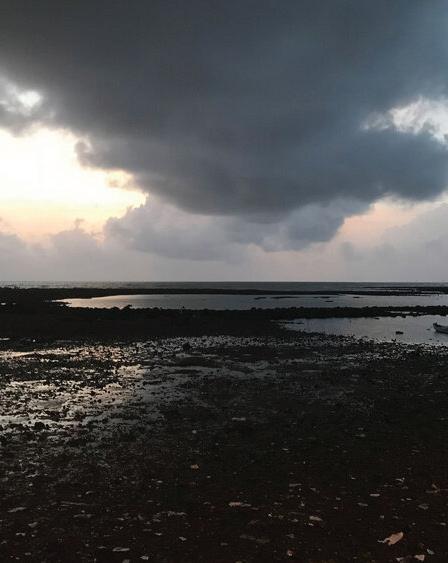


(Clockwise from top left) Amphibious living: fishing boats wait for the high tide at Juhu, Mumbai; Fishers negotiating an infrastructure sea; Dolphins in the urban sea; Dwelling in a wet city.
Photos courtesy of Nikhil Anand
The project concluded in early 2021, culminating in a series of public lectures and seminars, as well as publications in Scroll.in, an independent news outlet in India. Later that year, Mumbai city officials started the process of climate action planning—the first attempt the city had ever taken to officially address the climate crisis—with input from Anand, Rhea Shah, a research associate and transdisciplinary environmental designer, and others who had worked on Inhabited Sea.
“Many of us gave expert testimony, bringing what we’d learned from each of our projects into the conversation and into the process of making Mumbai’s climate action plan,” says Anand, who contributed to the sections of the plan concerning water management and urban flooding. Mumbai released its climate action plan this year.
“What’s interesting about that plan is that it’s not just about adaptation—how to manage floods or cyclones or heat waves that mark our climate emergency—but also how to mitigate carbon emissions through the conversion of energy sources and the like.”
Anand explains that the plan’s “Urban Flooding & Water Resource Management” section even promotes nature-based solutions and green infrastructure, “something we were only thinking of with Inhabited Sea.” He continues, “I think there’s something really exciting in how the city recognizes that the existing way of doing things can only be temporary—that more durable and enduring ways of dealing with flooding or water need to account for how the city continues to be wet by the sea, on the one hand, and the rain, on the other.”


Democratizing Climate Action
Another initiative that developed out of Inhabited Sea seeks to incorporate the voices of those who have endured the most harm from not only climate disasters, but also from the government’s responses to these disasters. Anand co-directs the new project, Stories of Climate Action: Democratizing Planning in Mumbai’s Wetscapes, which is led by Rohit Mujumdar, an assistant professor at the School of Environment and Architecture in Mumbai, and Lalitha Kamath, an associate professor in the School of Habitat Studies at the Tata Institute of Social Sciences—both of whom worked on Inhabited Sea.
“We’re focusing on three communities—two fishing communities in the western and eastern shorelines of Mumbai and a riverine community in the north—to look at how people are already dealing with some of the effects of climate change that are already here,” Anand explains. “One of the reasons we wanted to do that is because oftentimes, environmental
projects to save the city from flooding are very technocratic, not only denying the existence of local knowledges, but actually marginalizing those who are already living in climate change.”
It’s hopeful that we’re not ignoring climate change anymore, but we’re not addressing it fully either.
For example, after the Mumbai floods in 2005, the government proposed the eviction of tens of thousands of informal residents living in the floodplain, so that the river could have space to flood. The new project proposes to gather the stories of how Mumbai’s most vulnerable communities adapt to climate and ecological uncertainty and to include their expertise in urban policy and project interventions.
Anand’s current book project, Urban Seas, also considers the everyday practices of people living with climate change as possibilities for democratizing and rethinking climate action. “I’m interested in
how and why, despite other ways of living—marginalized ways of recognizing precarity—these voices are consistently exiled to the sidelines of urban planning and climate expertise,” Anand says.
What Remains
In Pakistan, the rainfall has decreased, but the deluge remains. It may take six months or longer for the floods to recede in some regions. In others, like the provinces of Sindh and Balochistan, there is nowhere for the water to go, with infrastructure—dams and levees— originally designed to control the flow of water now making matters worse.
“It’s hopeful that we’re not ignoring climate change anymore, but we’re not addressing it fully either. We continue to produce the same developmental projects that produce the same harms—even as we hope to do otherwise,” Anand says. “But that we hope to do otherwise, or have plans to do otherwise, is something new.”
Amphibious living: Worli fishing village at low tide.
Courtesy of Nikhil Anand
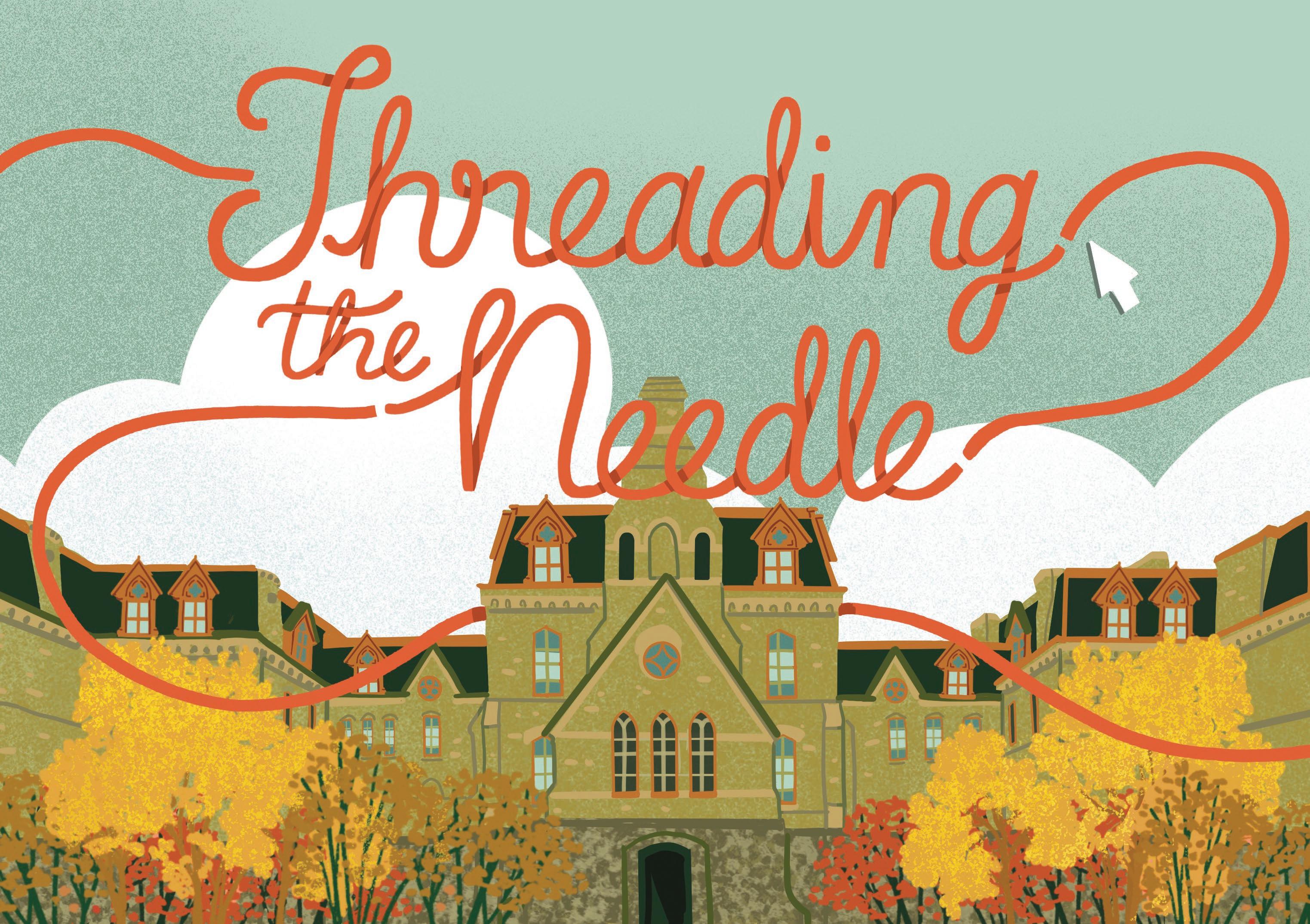
The B.A.A.S. Senior Portfolio demonstrates LPS students’ transferrable skills to the workplace and beyond.
By Katelyn Silva
Illustrations by Salini Perera
In 2016, Dean Steven Fluharty approached his team in the School of Arts & Sciences with a question: If we designed a bachelor’s program for working adults and other non-traditional students from scratch, what would it look like?
Those conversations and many months of brainstorming led to Penn’s College of Liberal and Professional Studies (LPS) Online Bachelor of Applied Arts and Sciences (B.A.A.S.) program, which was launched in 2019. Its mission is to provide an Ivy League degree through an online curriculum that integrates professional and academic opportunities. A linchpin of achieving that mission is the
Senior Portfolio, a digital collection of materials compiled by each graduating student to showcase their academic abilities and make connections to their current or future careers.
“When developing the B.A.A.S., we noticed that many of our peers and competitors were spending a lot of time talking about the importance of threading career planning and professional outcomes through their programs, but we weren’t seeing much clear integration. Instead, they tended to say, ‘look at our wonderful career services center,’” says Kristine Rabberman, Ph.D., Assistant Vice Dean and Director of Academic Affairs at Penn’s College of Liberal and Professional Studies.
“We wanted to do more, so we developed the Senior Portfolio. It was based on intensive research into high-impact practices and feedback from our Employer Advisory Board about what skills and competencies are most needed in the workplace.”
The aim of the Senior Portfolio is to help students translate their knowledge and skills from the classroom to the professional world. The portfolio includes eight examples, called artifacts, that symbolize the learnings from each of the program’s core competencies: analytical and critical skills, communication, creativity and innovation, digital literacy, ethics, global citizenship and diversity, historical perspectives, and scientific process and problem-solving. The artifacts can be presented in a number of ways, including through written coursework assignments, audio, video, visual arts, essays, and reports. The portfolio also asks each student to demonstrate career readiness through an updated resume, optimized LinkedIn profile, and virtual interview. Finally, each portfolio must include a synthesis project that ties together the program experience with the student’s life and career journey.
Beth Jamieson, LPS’22, who concentrated in creative studies, notes that her Senior Portfolio included assignments that were brand new to her, such as an essay transposed through digital imagery and a memo written from the perspective of an airline CEO doing damage control after a public relations crisis. Jamieson says those novel assignments, and studying poetry, storytelling, screenwriting, and copyediting, gave her a “well-rounded understanding of effective written communications, literary analysis, and the identification of the intersection between present day and historical texts, as well as the cross sections between the study of ethics, diversity, and culture.”
Jamieson completed the program while a full-time employee at Penn Live Arts where she was the Front of House Manager. Her goal was to pursue a degree while also progressing her career in the arts.

She explains, “When my dream of finishing college was deferred, I worked hard to find my footing in the arts community. Being part of such an encouraging team at Penn Live Arts, I was able to earn my degree while furthering my career at the same time. The creative studies concentration allowed me to merge my two biggest passions—the arts and writing. The coursework and Senior Portfolio, mixed with the experiences I’ve had working for the University, have been invaluable.”
Jamieson, who has since been promoted to Associate Director of Guest Services, adds, “My Senior Project demonstrates the diversity of my studies, as well as the practical ways it will be utilized in my career now and in the future.”
While the portfolio is meant to serve as a digital proof point for current and potential employers of the transferrable learning that students developed in the program, it’s also intended as a potent practice in reflection and goal setting.
“There is tremendous value in reflective writing and practices,” says Rabberman. “Having students, in this really intentional way, continue to think about their goals, as well as how to apply the hard and soft skills they developed throughout the program, is powerful. The portfolio also helps students, faculty, and employers see
how applicable the arts and sciences are in meeting a whole host of needs within the workplace.”
Having students, in this really intentional way, continue to think about their goals, as well as how to apply the hard and soft skills they developed throughout the program, is powerful.
For Steven Sickles, LPS’22, a mobile developer working with the State Department, the portfolio was a unique opportunity to reflect on his life, career, education, and what he wants to pursue next. Sickles was a dual-degree candidate at Penn 40-odd years earlier for four years, but ultimately did not complete his degrees. He felt called to return to “reconnect with the Penn community and complete the journey he had started,” and the B.A.A.S. was the ideal solution.
He notes that the Senior Portfolio was an opportunity to “reflect on those moments in his life” that brought him to where he
Beth Jamieson, LPS’22
is, and more importantly, “that made him who he is.” “You rarely get a chance like that in life,” he adds. Sickles is continuing his career in technology, but also expanding his ambitions to playwriting and music composition.
The reflective nature of the Senior Portfolio has helped many other students come to realizations about where they’ve been and where they want to go. One student, a retired Penn employee who’d always wanted to complete her degree, started traveling extensively and used those travels in her Senior Portfolio to reflect upon the competencies gained in the program and her career legacy. Another student who is working abroad in Kenya to help onboard lawyers used the portfolio to recognize how his international work is shaping his career trajectory. Another graduate discovered a passion for positive psychology through her coursework and portfolio and is planning graduate study in the field.
“The B.A.A.S. program has students from all walks of life with different goals and plans for the future. Some have had very successful careers and are coming back to complete their degree, like Steven,
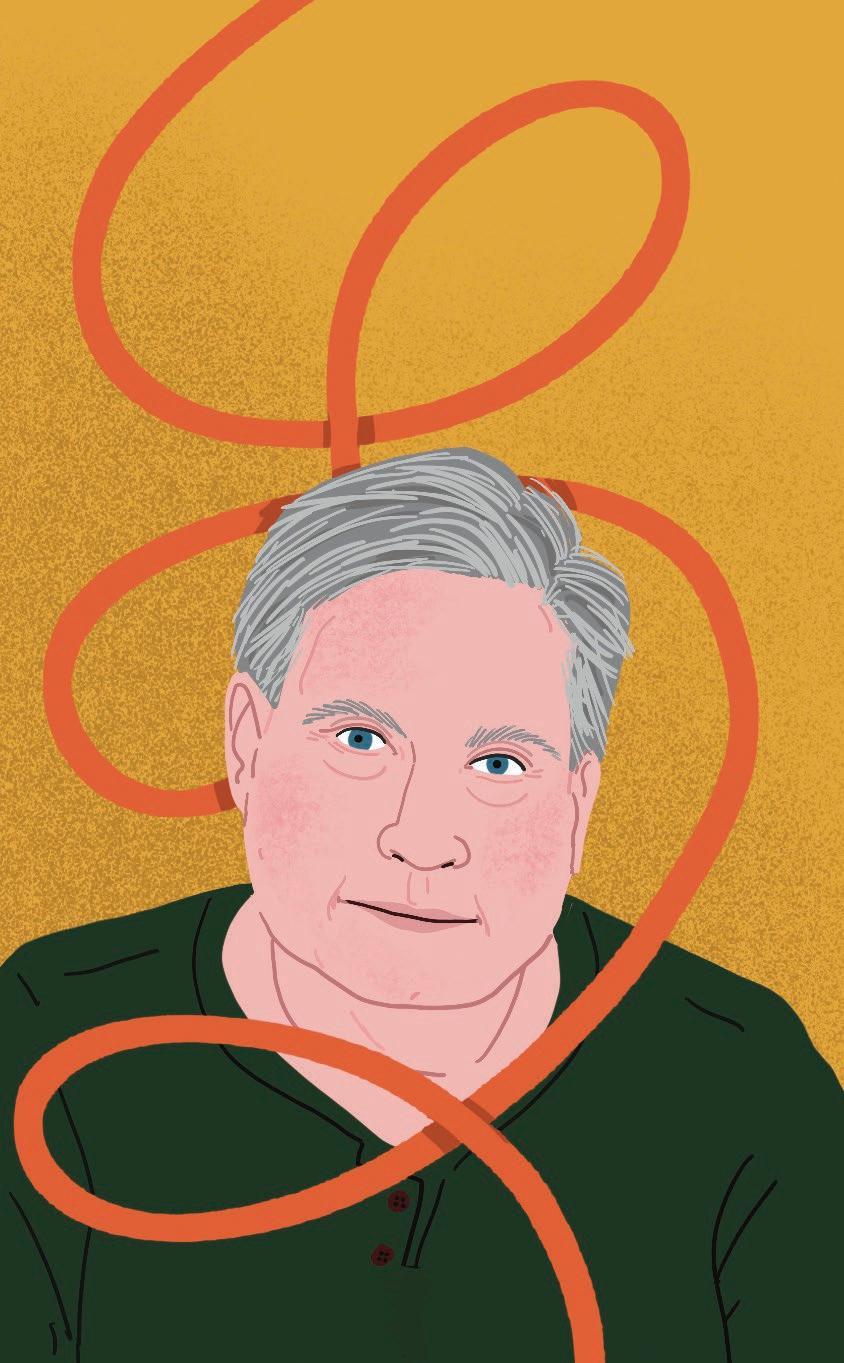

while others want to change careers, seek promotions, pursue graduate school, or find their next step,” says Kristin Sowden, Associate Director of Career Advising at Penn LPS Online.
For Halle Sherman, LPS’22, a professional ballerina, the portfolio was a reflective exercise on an intensely physical career and how that experience shaped her. She notes that the portfolio helped her come to realizations about herself and her inner strength.
“When I came to Penn, I wasn’t pushing boundaries as much as I’d hoped; I wasn’t the thinker, thriver, or outspoken individual that I wanted to be. I grew up, with, and through Penn,” says Sherman. “I gained academic and scholarly knowledge through the program and Senior Portfolio, but also confidence in myself, my choices, and who I am.”
Sherman has parlayed her new-found confidence into leadership roles at the Huntsville Ballet. She continues to dance, but also now manages the ballet’s Instagram account and helps lead a program that provides free dance classes, workshops, and lesson plans to
underprivileged schools. She adds, “I would not be the same person I am today without Penn.”
I gained academic and scholarly knowledge through the program and Senior Portfolio, but also confidence in myself, my choices, and who I am.
The Senior Portfolio is an opportunity for students to look back on their lives and to think about who they are and who they are becoming as they move forward in their professional careers, academic pursuits, and beyond, says Sowden. “I feel so privileged to bear witness to B.A.A.S. students as they come to their ‘aha moments’ through the program and the portfolio. They are truly remarkable individuals.”
Steven Sickles, LPS’22
Halle Sherman, LPS’22

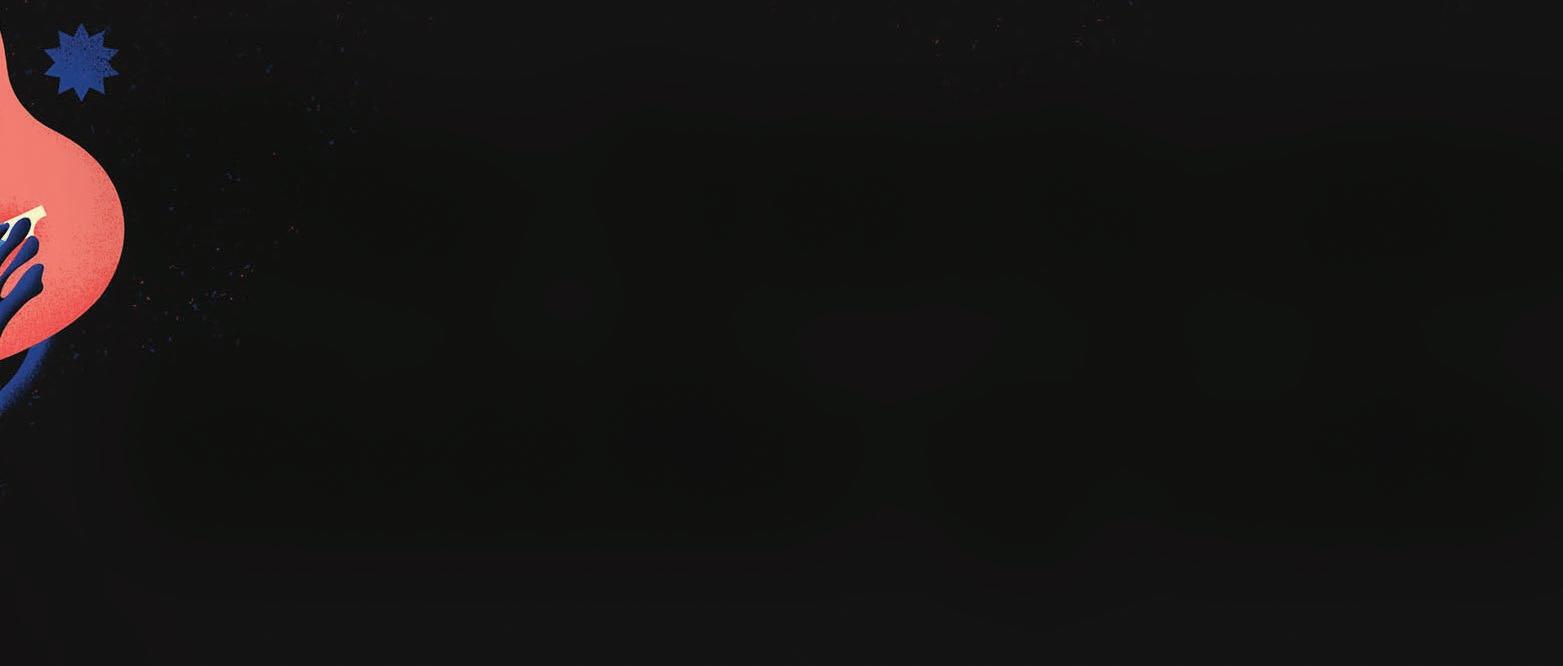

The Game of Politics
Alex Tolkin, a joint doctoral student in political science and communication, studies how media coverage that compares politics to sports shapes political attitudes and general worldviews.
Given the popularity of sports competitions with American audiences—Super Bowl LVI, which aired on February 13, 2022, drew in nearly 100 million viewers in the United States alone—it’s no wonder that many media companies, especially those reporting on politics, have begun taking programming cues from sports networks. Former CNN President Jeff Zucker even pushed for the cable news channel to take an ESPN-like approach to covering the 2016 U.S. presidential election. But media coverage that analogizes politics to sports can influence people to view not only certain policy areas, but also life in general, as a zero-sum game, argues Alex Tolkin, a joint doctoral student in political science and communication.

Tolkin’s research examines the causes and effects of seeing the world as a zero-sum game in which one side’s win is equivalent to another side’s loss. While research in psychology suggests that people who feel more threatened tend to view the world in this way, Tolkin examines other factors like media consumption. He argues that another explanation for what causes zero-sum thinking may come from the kind of messaging people receive—not only from the media, but from longstanding cultural narratives.
To test his hypothesis, Tolkin first developed a six-item index to measure generalized zero-sum thinking—a relatively new concept without an established scale. He then applied the index to attitudes toward a range of policies, from housing to women’s equality in the workplace. “For the most part, it’s quite strongly correlated with all of them. Across party, whether Democrat or Republican, if you think the world is more zero-sum in general,
you also view these various other policies as more zero-sum,” he says, explaining that his findings extend previous research correlating this kind of mindset with a number of policy attitudes.
In the experimental part of his study, Tolkin tested the effect of thinking about competition specifically on zero-sum thinking. He found that participants who were primed to think about sports—through writing about a memorable sports win or loss— before responding to the six-item index saw the world as more zero-sum.
Tolkin also wonders about the impact on people’s engagement with politics. “If people think about politics a lot, but the vast majority of people don’t hold office, and don’t go to local city council meetings, they never really experience it. What they have experienced instead is this stuff they’re seeing in the media and that they’re trying to make sense of,” he says.
Tolkin presented his study at the Midwestern Political Science Association. Another one of his papers, which he co-authored with Diana Mutz, Samuel A. Stouffer Professor of Political Science and Communication, examines how public opinion on the Supreme Court changed after the confirmation of Brett Kavanaugh in 2018. — DUYEN NGUYEN
Church, State, and Today’s Supreme Court
Gabriel Raeburn, GR’22, Dean’s Teaching Fellow for Excellence in Religious Studies, highlights religion’s role in recent blockbuster rulings.
At the close of its latest term, the U.S. Supreme Court issued a series of religiously charged rulings that shocked many people across the country. Gabriel Raeburn, Gr’22, wasn’t one of them.
“The separation of church and state in America has always been blurry,” says Raeburn, a Dean’s Teaching Fellow for Excellence in the Department of Religious Studies who completed his Ph.D. in religious studies last spring. “While for much of the 20th century, the Court looked to protect minority religions, we’re now seeing a shift toward prioritizing the rights of conservative
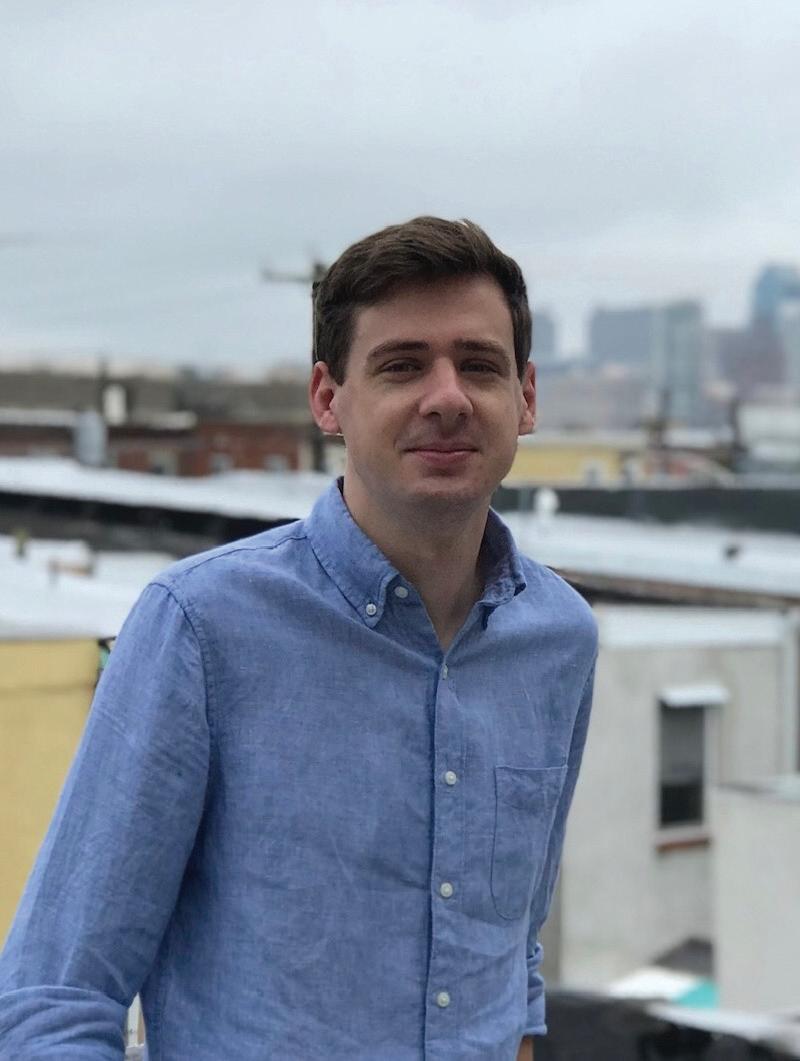
Gabriel Raeburn, GR’22
Courtesy of Gabriel Raeburn
Alex Tolkin, a joint doctoral student in political science and communication
Christians. That shouldn’t come as a surprise, given the organizing we’ve seen on the Right over the last few decades.”
Raeburn credits that organizing with engendering a conservative legal movement that facilitated the Court’s June 2022 decisions sanctioning a public high-school football coach’s on-field prayer (Kennedy v. Bremerton School District); endorsing the use of taxpayer money for religious-school tuition (Carson v. Makin); and striking down the 1973 Roe v. Wade ruling that guaranteed abortion rights (Dobbs v. Jackson Women’s Health Organization).
Whereas Catholics, Mormons, and evangelical Christians previously avoided collaboration, Raeburn says, they began to unite throughout the 1960s and '70s, during and after Earl Warren’s tenure as Chief Justice of the United States.
“The Warren Court moved the country in a progressive direction with decisions involving desegregation, school prayer, and birth control, so these once-oppositional communities partnered to build a legal infrastructure that would advance their social agendas,” he explains. “Their coalition-building intensified in the '80s, after President Reagan failed to pass constitutional amendments allowing prayer back in schools and banning abortion.”
Conservatives created the Federalist Society—a pipeline of right-wing lawyers they could stack the courts with at every level—and established legal foundations to provide representation in religious freedom cases, Raeburn says, noting that despite last June’s landmark rulings, he does not believe their successes signal an end to debates involving church and state.
“The Supreme Court has been an oppositional force to progress multiple times before, and progress was still made. For example, the Court was explicitly pro-slavery and opposed the New Deal, yet big achievements were made during those periods,” he says. “There’s an understandable feeling of resignation at the moment, but this isn’t necessarily the end of anything.” —
KAREN BROOKS
A Time to Explore
The Penn Arts & Sciences Pathways video series highlights the intellectual journeys of undergraduates.
Isabel Hu, C’23, is a firm believer in following one’s passion. After deciding that a career in medicine was not for her, she leaned into her love for art and became a design major. Hu was interviewed recently for Pathways, a Penn Arts & Sciences video series in which students reflect on their academic journeys in the College, including courses, faculty, or insights that have shaped or changed their undergraduate experience.
“I came to Penn for visual studies,” she says. “It was a good compromise between my parents and me. They wanted me to go into the medical field and I love art so much—it’s such a huge passion of mine. Visual Studies combines biology, neurology, art history—everything, and I was so psyched for that.”
Hu is also into fashion, tattooing, and skateboarding. She participates in the Wharton Undergraduate Entrepreneurship Club as a graphic designer and plays on the Penn rugby team.
A course in hand-drawn animation was especially impactful. “I was able to really bring my artwork to life,” Hu says. She adds that being at Penn and in Philadelphia has given her the opportunity to explore her identity.
After graduating next spring, Hu plans to become a professional tattoo artist. “I know that coming to Penn and becoming a tattoo artist is not the most conventional career path,” she says, “but tattooing really speaks to me.”


Another recent Pathways video focused on Ayan Bhattacharjee, C’23, G’23. A chemistry major who is also enrolled in the M.S. Chemistry program, Bhattacharjee is an accomplished musician, having played clarinet for eight years. He was a member of the Penn Symphony Orchestra, participated in the Music and Social Change program, and has taught piano through the Platt Performing Arts Houses After School Arts Program.
“When I started school, I was pretty insistent on being pre-med and becoming a physician,” he says. He liked chemistry, but at first saw those classes as a way to learn what he needed to become a physician. Things changed when he took a class called Theory of Probability.
“I gained a greater appreciation of the material by going deeper and understanding, just continuously asking, ‘why?’” Bhattacharjee says. “That led me to believe that a career in research, where I would be asking more of those questions, was the right fit for me.”
L-R: Isabel Hu, C’23; Ayan Bhattacharjee, C’23
Kyla Goodman
Alex Schein
Coming to Penn has allowed Bhattacharjee to become more independent and to pursue teaching and research. He now sees different possibilities for his future. “There are different ways to be a scientist or a physician,” he says. “You can be as ambitious as possible and shoot for the top, but there’s also a way of maximizing how many people you talk to and how many people you can be kind to, and how much compassion you can show. At Penn I’ve come to adopt more of the second mindset.”
— JANE CARROLL
Beneath the Surface
Nakul Deshpande, doctoral student in the Department of Earth and Environmental Science, demonstrates how soil “creeps,” unbeknownst to the naked eye.

Nakul Deshpande, doctoral student in the Department of Earth and Environmental Science, points to a movie of sand poured on a table. Once poured, the sandpile appears frozen and boring. But things are not as static as they appear.
Shining a laser light on the sandpile generates an interference pattern that changes as the grains move, allowing measurement and visualization of slow, creeping motions estimated to be as small as a billionth of a meter. Motions that would otherwise go undetected.
Creeping motion in an undisturbed sandpile is a surprise, and sharply departs from traditional frameworks. To contextualize the discovery, Deshpande looks to glass, a material quite different from sand. He explains, “If you cool molten glass very quickly, and look at the molecules as they
slow down, their motions become ever more sporadic and disconnected—even though their positions get locked in place.”
If taken as a model system for soils in nature, the creeping sandpile provides a deep insight into our world, and has implications for better predicting devastating natural disasters: “Rather than thinking of landslides as an ‘on-off’ process where soil spontaneously becomes mobile, these experiments point us to a view where there is a continuous transition between creep and flow.”
Will the sandpile—or soils in nature— creep forever, like glass? Deshpande admits to not knowing the answer, but thinks it’s a moot point. Why? Because of the ubiquitous presence of disturbances in nature, which intervene to frustrate intrinsic creep and relaxation of soils.
To explore this idea, Deshpande took the experiment a step further by tickling the sandpile with two types of weak disturbances: heat and gentle taps. As a result: “The sand pile creeps faster in response to temperature cycles, while taps slows creep and ‘ages’ the pile. We learn that the sand pile is exquisitely sensitive to mechanical disturbances, and in this way, is incredibly fragile.”
The novel findings of this experiment are featured in the 2021 Nature Communications journal article, “The Perpetual Fragility of Creeping Hillslopes.” The article is co-authored with Penn professors Doug Jerolmack of Earth and Environmental Science and Mechanical Engineering and Applied Mechanics, Paulo Arratia of Chemical and Biomolecular Engineering and Mechanical Engineering and Applied Mechanics, and David Furbish of Vanderbilt University. — KATELYN SILVA
Undergraduates Help Songbird Research Project Take Flight
Julia Youngman, C’24, and Eric Tao, C’25, had the opportunity to work in neuroethologist Marc Schmidt’s lab studying the neural basis of courtship behaviors in songbirds.
In the highly social world of brown-headed cowbirds, a migratory species native to the Great Plains of North America, every song, sound, and pose has a meaning—especially during mating season. These behaviors represent a complex and metabolically costly social behavior formed by millions of years of evolution, and they also provide researchers an opportunity to explore the neural circuits that drive communication in social animals.
This summer, Julia Youngman, C’24, and Eric Tao, C’25, studied the brains and behavior of cowbirds as part of the Penn Undergraduate Research Mentoring Program (PURM). The two have pursued their summer investigations under the guidance of Marc Schmidt, Professor of Biology. They worked in Schmidt’s “smart” aviary, an enclosure filled with cameras
Nakul Deshpande, doctoral student in the Department of Earth and Environmental Science
Courtesy of Nakul Deshpande

Through the Penn Undergraduate Research Mentoring program, undergraduates Julia Youngman and Eric Tao studied the mating songs of brown-headed cowbirds like those above in Penn’s “smart” aviary.
and microphones that track every movement, song, and social interaction of the birds inside it. Schmidt uses this smart aviary to study a neural circuit in cowbirds called the song pathway. The end goal of the smart aviary is to set up an “automated pipe-
by hand, they hope to build a program that can track the birds automatically using machine learning. During the summer, Tao used his mathematics background to help build an audio component for the automated pipeline. The program he’s working on will use data from all 24 microphones to localize and identify different types of songs from the cowbirds.
Youngman, on the other hand, is employing her biology skills to work directly with the flock. After learning about the neuroanatomy of the birds, she’s had the opportunity to assist in surgeries, dissections, and electrophysiological recordings. Youngman’s research aims to elucidate the purpose of the female cowbird song pathway. By stimulating nerve cells and injecting molecular tracers that expose the trajectory of neurons, Youngman and Schmidt have found that while the female cowbird doesn’t use the song pathway to sing like male cowbirds do, it still plays a key role in reproductive behaviors.
By combining the behavioral techniques of the smart aviary and the traditional biological techniques of the lab, Schmidt and his undergraduate researchers are helping pioneer how the neural bases of complex social behaviors are studied. “We are going to push the limits of some of the technical mathemati-

Scott Spitzer, University Communications

REPRESENTATION IN TECHNOLOGY
Victor Scotti, Jr., C’13, works towards a future where diversity, equity, and inclusion are the norm.
By Katelyn Silva
ince graduating from Penn, Victor Scotti, C’13, has thrived as a diversity, equity, and inclusion (DEI) practitioner in the technology space. He’s currently a Hiring Equity Lead at Google, focusing on building systems and structures that enable inclusive recruiting. He previously built technical development programs that support Black and Latinx students at historically Black colleges and universities and Hispanic-serving institutions.
Additionally, Scotti operates his own company, Moving Mountains, which “accelerates Black boys’ self-efficacy” through professional experiences, job shadowing, mentorship, and socio-emotional support.
Scotti, who majored in sociology and double minored in urban education and Africana Studies, discusses his experience at Penn, why DEI is essential in technology, and his advice for Black and queer students.
Courtesy of Victor Scotti, Jr.
What did you most enjoy about your experience at Penn?
Growing up on the South Side of Chicago and spending time on the University of Chicago’s campus, I was looking for a university that was also deeply embedded in its surrounding community. Upon visiting Penn, I learned about all the opportunities for students to engage in West Philadelphia and couldn’t have been more excited. As a student, I participated in the Civic Scholars Program through the Civic House, Alpha Phi Alpha Fraternity, Inc., Psi Chapter, and the Greenfield Intercultural Center. What I appreciated most about my Penn experience was that our classroom conversations reflected what was happening in and around Philadelphia.
How did you start your career in technology and in the area of DEI?
I was introduced to Google at a Wharton event in 2010. So, in many ways, Penn helped launch my career in tech. In terms of diversity, equity, and inclusion, I grew up engaging in conversations about equity, access, and power. I come from a family of educators; my parents and grandparents were teachers and then went on to work in other capacities supporting the education system. I was also looking for a

way to impact Black people, especially Black students, in my career postPenn. Once I realized I could do that through tech, I launched a career path focused on student development at Google and then at Netflix. After leading student programs for a while, I decided that I could impact economic mobility for Black people—that’s my mission and North Star—differently. That led to my current role as Hiring Equity Lead at Google.
Technology has a significant influence on our world. Why is DEI in technology so important?
Technology dictates so much of how we operate, and even in specific ways, who we are—the life and images we curate. It’s imperative to me that folks who are underrepresented have the opportunity to see ourselves— that our experiences, nuances, and complexities are reflected in technology. Google’s flagship Pixel 6 phone comes to mind. When you think about the history of photography, you have to remember the technology is indexed against lighter skin tones; in other words, cameras are fundamentally not created to respect Black and Brown skin tones. Google is combatting this. The Pixel includes “true tone,” which intentionally highlights our beautiful chocolate and brown hues and skin tones.
The bottom line is that technology will only become further embedded in our lives; I think about virtual reality, artificial intelligence, and machine learning, for example. We must ensure that we’re creating and building this technology in a way that represents all people, perspectives, and experiences.
You established the Scotti Legacy Scholarship in the School of Arts & Sciences in 2021. Why?
Focusing my philanthropic giving on a population I’m part of is vital to me. I had a great experience at Penn, so it’s
crucial for me—as a Black and queer alum—to help ensure that students after me have equitable experiences. One way I do this is through the Scotti Legacy Scholarship, specifically for Black male students pursuing a major in the College of Arts & Sciences.
Who inspires you?
James Baldwin. I’ve gained perspective, purpose, representation, and validation from his words, life, and legacy. There’s nuance in my identity. I’m Black. I’m a man. I’m in a fraternity. I’m Christian. Navigating all those intersections that each have their own beautifully complicated histories and being able to center who I am is something I think about every day. I draw much inspiration from Baldwin’s life and purpose from his words.
My parents are also a huge inspiration. In their own ways, they’ve committed their lives to service through education and commitment to our family and community. The greatest lesson they’ve taught me is that we are not in this world alone; we must do our part with the blessings we have to help one another. I think about that every day, especially with my people-centric work.
What advice would you give to Penn students, particularly students who are Black and/or queer?
I would start by telling them that they are enough. Our current climate can be divisive and, frankly, antiBlack. So, I would start by validating who they already are. They don’t need to shift and morph in ways that are unnatural to them to be accepted. I would also share with them that they have agency. They can choose the type of work they want to do, the impact they want to have on the world, how they spend their energy, and how they utilize their resources. The world is theirs for the taking.
Victor Scotti, Jr., C’13 (left) and his fiancé Gary Davis, II, GSE’17
Courtesy of Victor Scotti, Jr.
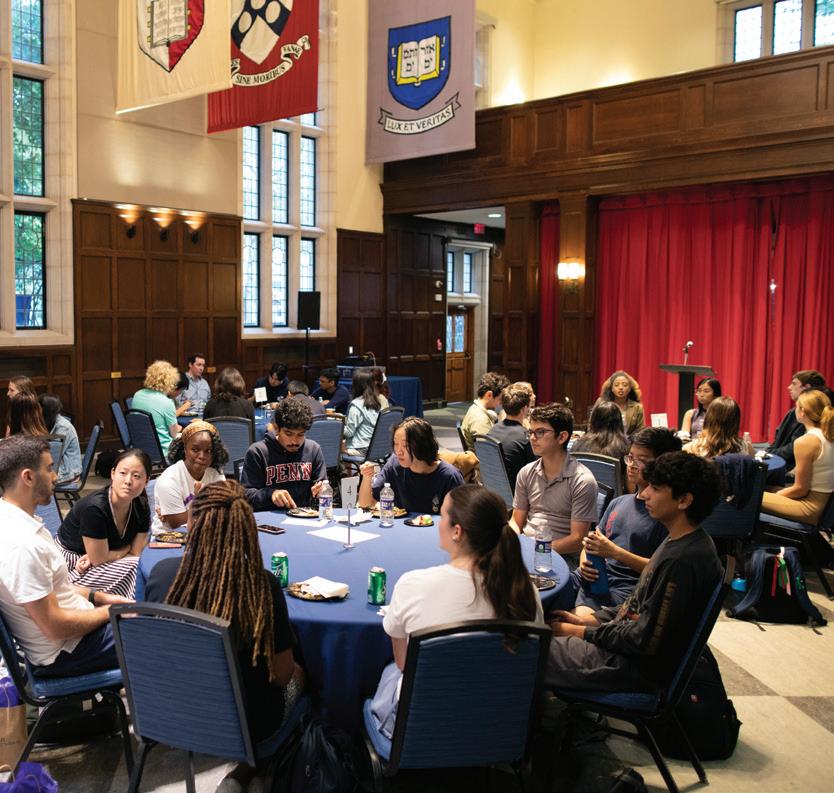

Alums Share
Pathways to DataDriven Careers
The College Alumni Mentoring Series (CAMS) kicked off the fall semester with an in-person event focused on data-driven careers. Jack Gindi, C’16; Bill Lynch, C’10; Jessica Magness, C’10; and Christine Hurtubise, C’08, spoke to students about how a liberal arts education and analytical skills can combine to lead to careers as analysts, engineers, scientists, and consultants who drive decisionmaking across industries.
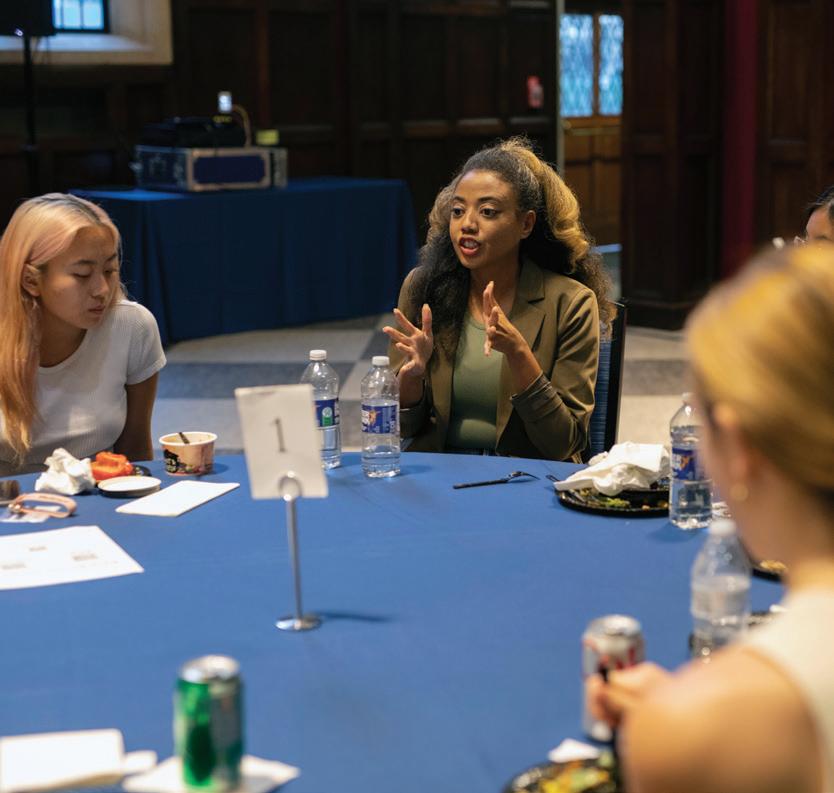
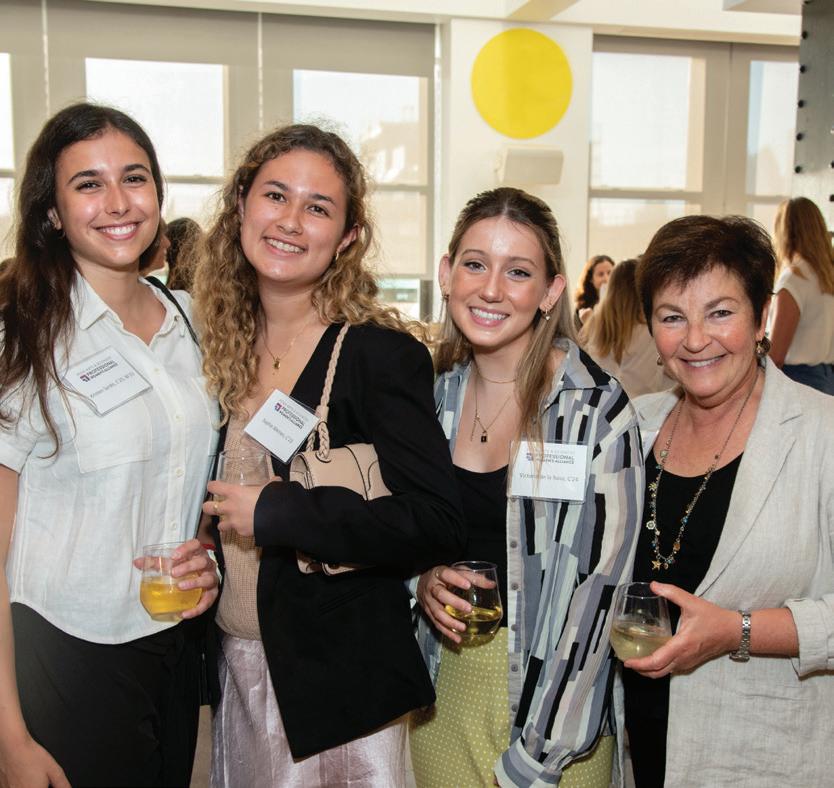
Faculty Featured at Events in NYC and California
The Arts & Sciences Ambassador Council hosted salons in New York and San Francisco for alumni and parents to get together and hear from faculty experts on timely topics. In New York, John Lapinski, Robert A. Fox Leadership Professor of Political Science and Director of Elections at NBC News, broke down the 2022 midterms and discussed the volatility of this election cycle. In San Francisco, Michael Weisberg, Bess W. Heyman President’s Distinguished Professor and Chair of Philosophy, Senior Faculty Fellow at Perry World House, and a United Nations advisor, gave an insider’s briefing on the global climate negotiations.

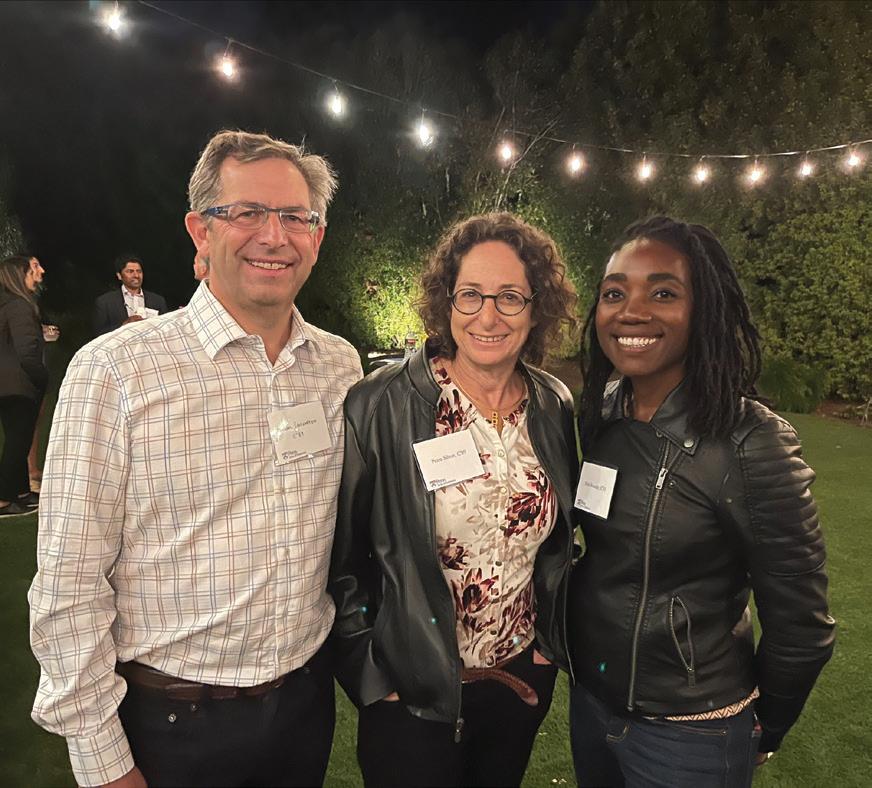
PWA Networking Session at Buzzfeed
The Penn Arts & Sciences Professional Women’s Alliance (PWA) held its annual summer networking reception at BuzzFeed in New York City. The event gives students and young alums the chance to connect with accomplished leaders from a wide range of industries in a casual environment.
The PWA connects professionally active women who value how their liberal arts education has helped them in the workplace and who want to share what they’ve learned with young College alums and students. To learn more, visit the Professional Women’s Alliance. www.sas.upenn.edu/pwa
(Clockwise from top left) At the Data-Driven Careers CAMS event, students hear from alums, and Jessica Magness, C’10, talks with students at her table. At the California reception, (from left) Ramanan Raghavendran, ENG’89, W’89, LPS’15, Chair of the School of Arts and Sciences Board of Advisors; Michael Weisberg, Bess W. Heyman President’s Distinguished Professor and Chair of Philosophy; and host Reema Shah, C’94, PAR’26; and (from left) Michael Listgarten, C’89; Petra Silton, C’88; and Tobi Bosede, C’11. At the PWA Networking Reception at Buzzfeed, PWA Chair Jamie Handwerker, C’83, PAR’19, speaks with students, and attendees met and talked in a casual environment.
Ben Asen
Ben Asen Photography
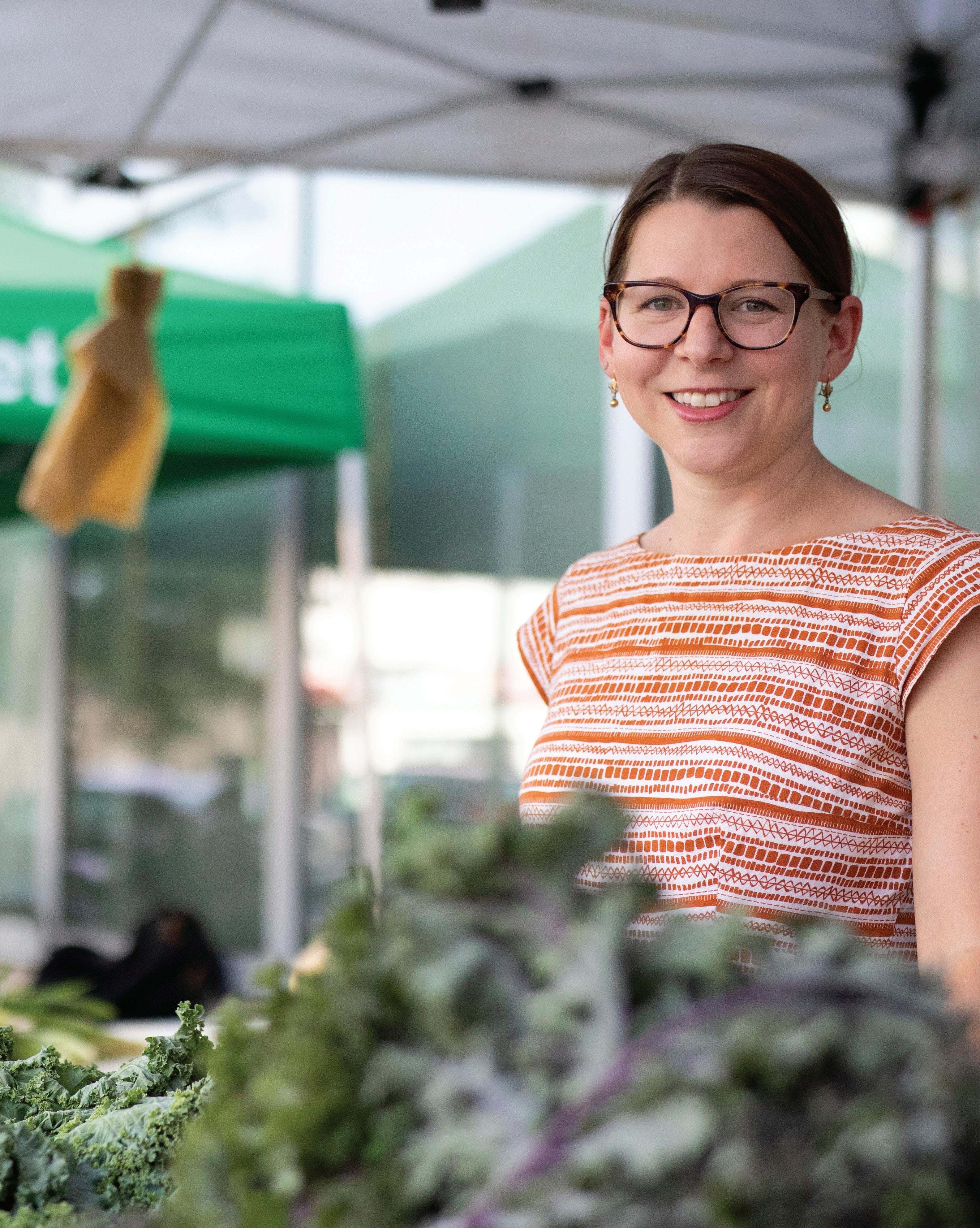
Penn Arts & Sciences at Work
Penn Arts & Sciences at Work is a photoblog series that highlights College alumni in their workplaces as they reflect on how and why their careers took shape.
To see more, visit www.sas.upenn.edu/at-work.
JULIA KOPRAK, C’04
Associate Director of The Food Trust COMMUNICATIONS MAJOR, FINE ARTS IN PHOTOGRAPHY AND FRENCH MINORS
PHILADELPHIA, PA
“I didn’t originally have a policy background, but really, so much of policy advocacy is simply making the case for why certain issues are important and should be prioritized.”
Three Questions: Medieval Robots
Elly R. Truitt, Associate Professor of History and Sociology of Science, discusses the history of robots and automata in medieval Latin culture, the impulses that drove their creation, and shared characteristics with modern-day robots.
BY JANE CARROLL


Medieval robots? It may sound like an oxymoron, but Elly R. Truitt, Associate Professor of History and Sociology of Science, is an expert on them. Her book, Medieval Robots: Mechanism, Magic, Nature, and Art, explores the history of automata in medieval Latin culture. Truitt’s work demonstrates that artificial people and animals—both real and imagined—were common in medieval culture, and that they raised questions about identity and the ethics of knowledge and creation, just like today. We asked her to shed light on the topic.
CAN YOU DESCRIBE ONE OF THE MORE FANTASTICAL EXAMPLES OF A ROBOT OR AUTOMATON FROM THE MEDIEVAL PERIOD?
For pure fantasy, I’ve always been partial to the figures in the “Roman de Troie” (ca. 1165). This is a French verse account of the Trojan War, and the author, Benoît de Sainte-Maure, included four golden figures in the central hall of the Trojan court, called the Alabaster Chamber. These four figures—two that looked like young women and two that looked like young men— surveyed and surveilled all the people in the hall to make sure that their clothing, deportment, attitudes, and even their thoughts were appropriate to the rarefied courtly setting. Of these
four, my particular favorite is the figure that observes everyone and uses secret hand signals to communicate to each person how their behavior would need to change. These figures were intended to reduce anxiety—of the courtiers, who could be assured that they would not make any faux pas, and of the rulers, as they could be assured that none of the courtiers were plotting against them.
For objects that seem like they should be fantastic, but were likely made, I love the mechanical wine servants in Al-Jazari’s Book of Ingenious Mechanical Devices. These were wheeled objects, designed to serve wine or sherbet to the ruler’s guests. What a flex! Every ruler in this period had human servants, but to have a mechanical servant was something special, indeed.
WHERE DO YOU THINK THE HUMAN IMPULSE TO CREATE AUTOMATA COMES FROM?
I think it comes from a sense of curiosity about alternative ways of making (or mimicking) living things, like people
and animals, and from a desire to have total control over something that can serve you. These objects were imagined and built—across cultures, eras, and places—in the context of societies in which enslaved people filled many roles, from personal attendant to courtier to soldier to laborer.
WHAT
ARE SOME COMMON THEMES OR
CHARACTERISTICS
THAT MEDIEVAL AND MODERN ROBOTIC OBJECTS SHARE?
These objects are often used (both in the imagination and in reality) to serve power: They surveil and police human populations, they are used to acquire and consolidate power, they uphold social boundaries and norms, and they act as proxies for human companionship. They also serve a more abstract but equally important purpose: They highlight and also complicate the boundary between alive and not-alive, between natural and artificial.
Top to botton: Marco Polo, Livres du Grant Caam, ca. 1400; Elly R. Truitt, Associate Professor of History and Sociology of Science
Courtesy of Kristen Brown
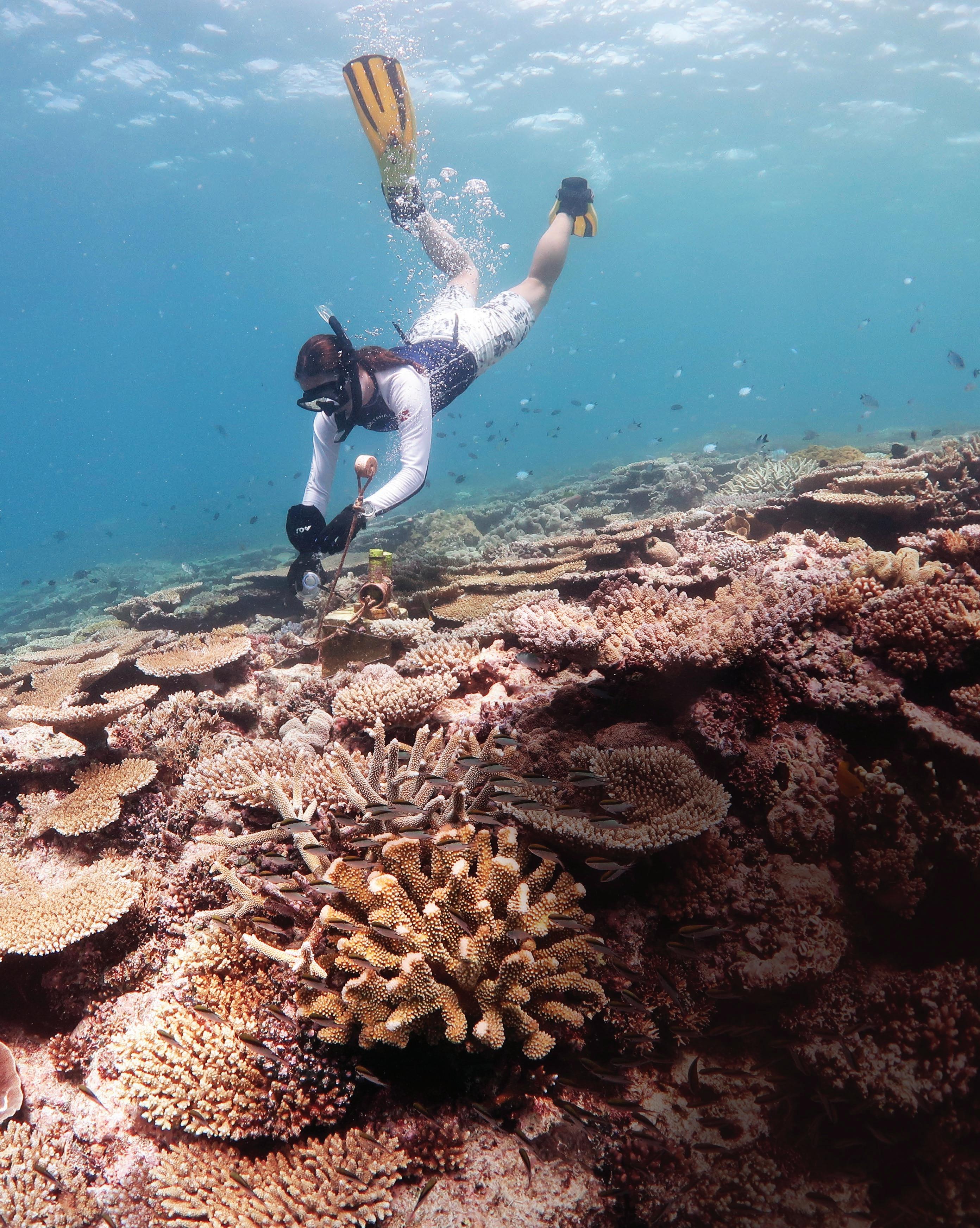
Kristen Brown, a postdoctoral researcher in the Department of Biology, collects coral samples from different locations on a reef to see how they fared in acidic conditions. Ocean acidification caused by rising CO₂ levels threatens coral because it breaks down the rocky, calcified skeletons that give coral its distinctive structure, according to Katie Barott, Assistant Professor of Biology and senior author on a study published in Proceedings of the Royal Society B. When water CO₂ levels surge, corals can no longer grow or maintain their skeletons. However, coral from certain environments may weather changes in CO₂ levels better than others.
“We found that corals from environments with extreme CO₂ fluctuations were better able to regulate their cellular chemistry when faced with acidification stress,” says Brown (pictured), a member of Barott’s lab and the lead author on the study.
The researchers hope that ultimately they can uncover how coral adapts to environmental stressors like acidification and utilize those adaptations to mitigate damage from climate change. “There are already corals out there that can deal with these types of stressors,” says Barott. “So, we’re trying to figure out what makes those corals special.” — MARILYN PERKINS
University of Pennsylvania
School of Arts & Sciences
3600 Market Street, Suite 300 Philadelphia, PA 19104-3284
COLLEGE
